Hexagon and Herringbone Mosaic Tile: The Ultimate Guide for Trendy and Timeless Design
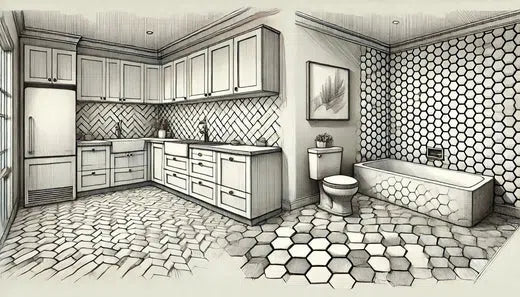
Introduction
In recent years, hexagon and herringbone mosaic tiles have become go-to choices for interior designers and homeowners alike, celebrated for their timeless elegance and versatility. Both styles bring unique charm to any space—from bathroom floors and kitchen backsplashes to accent walls and entryways. Whether you're drawn to the clean, geometric appeal of hexagon tiles or the dynamic, zig-zag pattern of herringbone tiles, each mosaic style offers a range of design possibilities to suit various tastes.
This guide explores the distinct characteristics of each tile pattern, offering inspiration and tips for choosing the best mosaic tile style for your space. We’ll look at applications, popular color choices, and layout options, as well as common questions about hexagon and herringbone mosaic tiles. So, whether you’re designing a hex tile bathroom or exploring herringbone mosaic tile for a classic kitchen backsplash, read on for everything you need to know.
Section 1: Hexagon Mosaic Tiles – The Six-Sided Statement
What are Hexagon Mosaic Tiles?
Hexagon mosaic tiles are a six-sided geometric tile pattern that has surged in popularity due to their versatile design potential. The unique shape adds a sophisticated, modern edge to floors, walls, and even outdoor areas. In particular, hexagon mosaic tile floors have become a favorite in bathroom designs for their stylish yet functional appeal, offering extra traction due to the increased grout lines, which help reduce slipperiness.
Available in a range of materials—including ceramic, porcelain, and marble—hexagon mosaic tiles provide endless opportunities for personalization. Terms like hex tile bathroom floor, hex mosaic floor tile, and colored hex tile are often associated with this pattern, as they reflect the variety in color, size, and application.
Popular Hexagon Tile Colors and Patterns
Hexagon tiles come in a variety of colors and finishes, making them adaptable to nearly any design aesthetic. Some popular options include the white mosaic hexagon tile, which offers a minimalist, clean look ideal for modern or Scandinavian-inspired interiors. For those seeking more vibrancy, options like colored hexagon tile, colorful hexagon tile, and hex tile colors bring depth and energy to the space.
Mixing shades or even using multi-colored hexagon tiles can create an artistic effect, especially on larger surfaces like a bathroom floor or kitchen wall. If you're looking for a vintage vibe, consider hex tile mosaic in muted tones, or for something bolder, go with a high-contrast look using black and white hexagon tiles.
Hexagon Tile Sizes and Layouts
One of the main draws of hexagon tiles is the flexibility in sizing. You’ll find options ranging from tiny hex tiles to larger formats. Smaller 2-inch hexagon tiles or hex tile sheets are ideal for creating intricate patterns on backsplashes or shower floors. Larger hexagon tiles, on the other hand, make a bold statement on bathroom or entryway floors. With 6-sided tiles, designers can play with scale to craft unique layouts that enhance the room's visual appeal.
When planning a layout, consider the overall impact you want to achieve. Smaller tiles generally suit smaller areas, like hex tile bathroom floors, as they give the illusion of more space, while large hexagon tiles can create a minimalist, spacious feel in bigger rooms.
Using Hexagon Tiles in Bathrooms and Kitchens
Hexagon tiles are particularly popular for bathroom floors and kitchen backsplashes. Their durability and stylish look make them perfect for high-traffic, moisture-prone areas. A hexagon mosaic backsplash adds a touch of modern elegance to kitchens, while a hexagon mosaic tile floor in the bathroom offers a non-slip surface that's as functional as it is beautiful. Moreover, the six-sided design of hex tiles creates a continuous flow, which can visually expand compact spaces.
Whether you choose a classic look with white hex tiles or go for a more colorful palette with colored hexagon tiles, hexagon mosaic tiles offer endless design opportunities for kitchens and bathrooms alike.
Section 2: Herringbone Mosaic Tiles – A Classic with a Twist
What is Herringbone Mosaic Tile?
Herringbone mosaic tile is a rectangular tile pattern that creates a zig-zag effect, giving spaces a sense of movement and elegance. Named for its resemblance to the bones of a fish, this classic tile design is often seen in marble herringbone floor tiles, herringbone tile walls, and even as a chic option for backsplashes. The herringbone pattern offers a sophisticated, dynamic aesthetic that complements both traditional and contemporary spaces.
Some commonly used terms with herringbone tile include herringbone marble tile, mosaic herringbone tile, and herringbone porcelain floor tile. Herringbone patterns, particularly in marble, are often associated with luxury, making them ideal for upscale bathrooms and kitchens.
Materials and Color Variations
Herringbone tiles come in a range of materials, including marble, ceramic, and porcelain. Herringbone marble tiles, for example, add a luxurious feel to any space, making them a popular choice for herringbone tile marble bathrooms or kitchens. For a more budget-friendly option, ceramic herringbone tile offers a similar aesthetic with easier maintenance and durability, especially for high-traffic areas.
Color variations are another exciting feature of herringbone tiles. While herringbone white marble tile offers a timeless appeal, colored herringbone tiles such as blue, green, or even gold can create a stunning focal point in any room. Additionally, herringbone stone tiles add an earthy, organic look, suitable for rustic or farmhouse-style homes.
Herringbone Tile Patterns and Layouts
Herringbone tile patterns add character and visual interest to any room. The layout creates a diagonal effect that draws the eye, making it a great choice for adding depth to smaller rooms. For larger spaces, consider large herringbone floor tile to emphasize the room’s size, or use small herringbone tile for a more detailed look. Herringbone tile sheets are also available, which can simplify installation for intricate spaces.
Layouts can be customized further with herringbone tile sheets, allowing for different effects depending on the orientation of the tiles. This versatility makes herringbone tile a top choice for both classic and contemporary spaces.
Applications of Herringbone Mosaic in Bathrooms, Kitchens, and Floors
Herringbone mosaics bring elegance and style to bathrooms, kitchens, and living spaces. In bathrooms, herringbone marble floor tiles create a refined look, especially when paired with minimalist decor. Kitchens benefit from the dynamic appeal of a herringbone mosaic backsplash, while herringbone white floor tile offers a clean, sophisticated look that complements various kitchen styles.
For a high-impact statement, consider using herringbone accent tiles on feature walls or as a focal point in showers. Alternatively, large herringbone floor tiles can create a sense of luxury and grandeur in living rooms or entryways.
Section 3: Comparing Hexagon and Herringbone Mosaic Tiles
Style and Aesthetic
Hexagon and herringbone tiles each offer distinct aesthetics that can transform any space. Hexagon tiles are celebrated for their clean, geometric look, making them ideal for contemporary and modern spaces. Hexagon mosaic tiles bring a bold, artistic vibe to rooms, especially in more colorful or contrasting shades.
In contrast, herringbone tiles are known for their elegant, flowing design. The herringbone pattern creates a dynamic texture that draws the eye, adding depth and sophistication to any room. It’s a classic choice for traditional spaces but also suits modern interiors, especially in monochrome or neutral tones.
Material Options and Durability
Both hexagon and herringbone tiles are available in a range of durable materials. Marble, porcelain, and ceramic are popular for their durability and visual appeal. Hexagonal mosaic tiles and herringbone ceramic tiles offer versatility for both indoor and outdoor use, while marble options are ideal for adding a luxury touch to indoor spaces.
Design Flexibility
Hexagon tiles, with their versatile six-sided shape, allow for creative layouts that can add either simplicity or boldness to a space. On the other hand, herringbone’s zig-zag structure adds rhythm and depth, drawing the eye across the pattern. Combining hexagon and herringbone tiles can create unique looks in areas like entryways or bathrooms, where a more dynamic layout can enhance the space.
Frequently Asked Questions (FAQs)
-
What’s the difference between hexagon and herringbone tile patterns?
Hexagon tiles have a six-sided, geometric pattern, while herringbone tiles use rectangular tiles in a zig-zag layout. -
Can I use hexagon mosaic tiles for a bathroom floor?
Yes, hexagon tiles like hex tile bathroom floor add texture and grip, making them ideal for wet areas. -
Is herringbone tile good for a kitchen backsplash?
Absolutely. Herringbone tiles create a visually appealing backsplash, adding texture to kitchens. -
Are hexagon tiles available in different colors?
Yes, hexagon tiles come in multiple colors, including “white mosaic hexagon tile” and “colored hexagon tile.” -
Is herringbone mosaic tile harder to install than hexagon tile?
Herringbone tile can be more complex to align due to its pattern, but it’s manageable with a good layout plan. -
What materials are available for hexagon and herringbone tiles?
Both styles come in marble, porcelain, and ceramic. -
Can I mix hexagon and herringbone tiles in one room?
Yes, combining these styles can create a unique design, especially in larger areas. -
Do hexagon tiles need special grout?
Not necessarily, but a matching grout color can enhance the look. -
Can I use hexagon and herringbone tiles outdoors?
Yes, but it’s best to use weather-resistant materials like porcelain for outdoor settings. -
How do I choose between marble and ceramic herringbone tiles?
Marble offers a luxurious look, while ceramic is more affordable and durable. -
What’s the best color for hexagon tiles in a modern bathroom?
White and neutral colors like “white mosaic hexagon tile” are popular in modern designs. -
Are hexagon tiles suitable for small bathrooms?
Yes, smaller hexagon tiles can make a compact bathroom appear larger. -
Can herringbone tiles be used on shower walls?
Yes, herringbone tiles create a striking effect on shower walls. -
Do hexagon tiles suit traditional interiors?
Hexagon tiles can suit both modern and traditional settings, depending on color and finish. -
What’s the best tile adhesive for herringbone patterns?
A good-quality adhesive suited for your tile material (marble, ceramic) will work well. -
Can I use herringbone tiles in a farmhouse-style kitchen?
Definitely, especially if you go with a rustic material like stone or marble. -
What size hexagon tile should I choose for a bathroom floor?
Smaller hexagon tiles (e.g., 2-inch) are popular for bathroom floors. -
Are hexagon tiles easy to clean?
Yes, especially with sealed grout lines to prevent dirt buildup. -
Can I combine large and small hexagon tiles on one floor?
Yes, mixing sizes can add a dynamic visual effect to the floor. -
What’s the best color for herringbone tile in a minimalist home?
White or neutral tones like “herringbone white marble tile” complement minimalist aesthetics.
Conclusion
Choosing between hexagon and herringbone mosaic tiles comes down to personal preference, style goals, and the specific needs of your space. Hexagon tiles, with their unique six-sided shape, bring a geometric flair that’s ideal for modern and contemporary designs. They offer flexibility in color and size, making them a great option for areas where you want to make a bold statement. On the other hand, herringbone tiles offer a timeless, flowing pattern that adds a sense of movement and elegance, suitable for both classic and modern interiors.
By considering factors like room size, intended visual effect, and material durability, you can find the perfect tile design to enhance your space. Whether you’re leaning towards the structured beauty of hexagon mosaics or the rhythmic charm of herringbone, both tile patterns offer endless opportunities for creativity and expression in interior design. So dive into the possibilities and let these timeless tile styles transform your space into a place of beauty and sophistication.
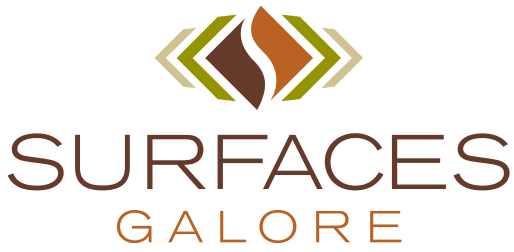
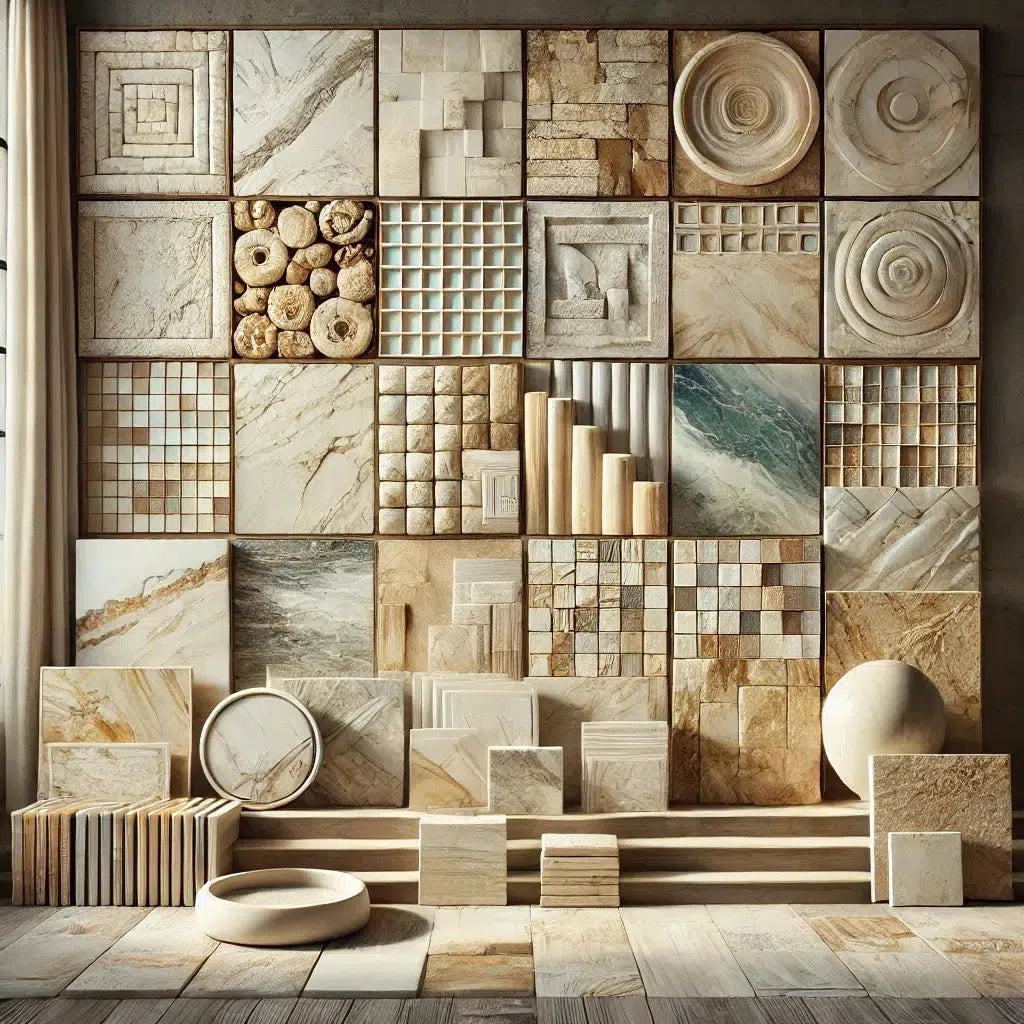 Best Selling Marble Collections
Best Selling Marble Collections
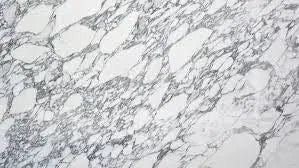 Arabescato Corchia
Arabescato Corchia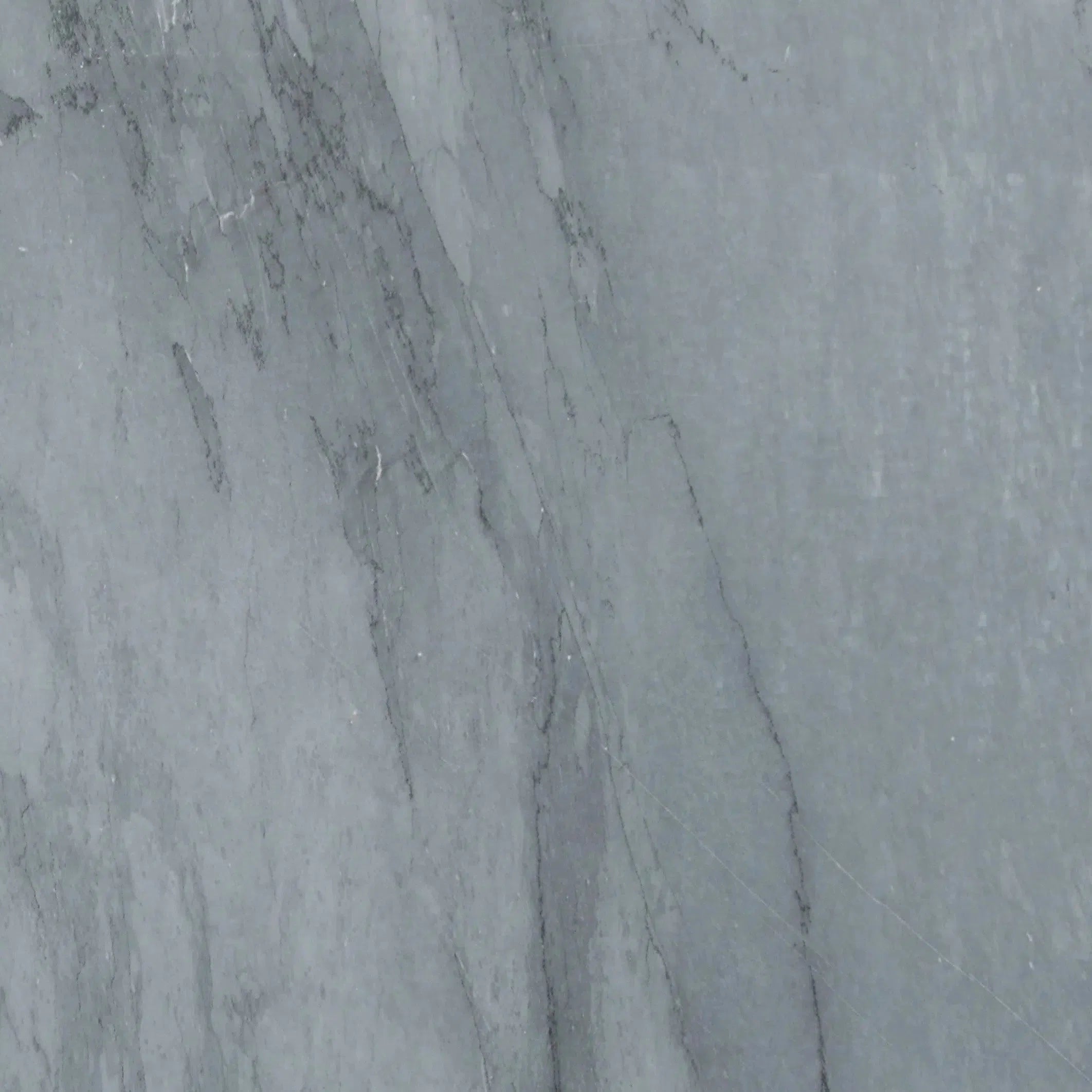 Bardiglio
Bardiglio Bianco Dolomite
Bianco Dolomite 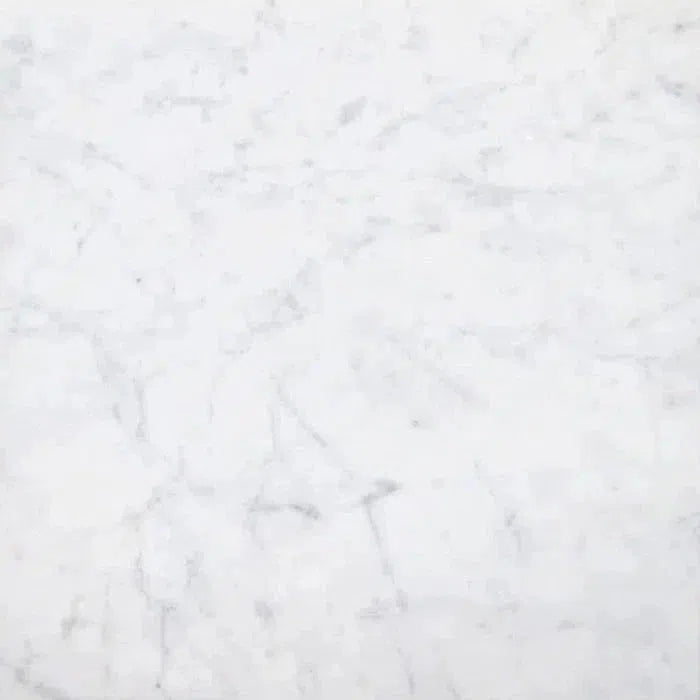 Carrara White
Carrara White 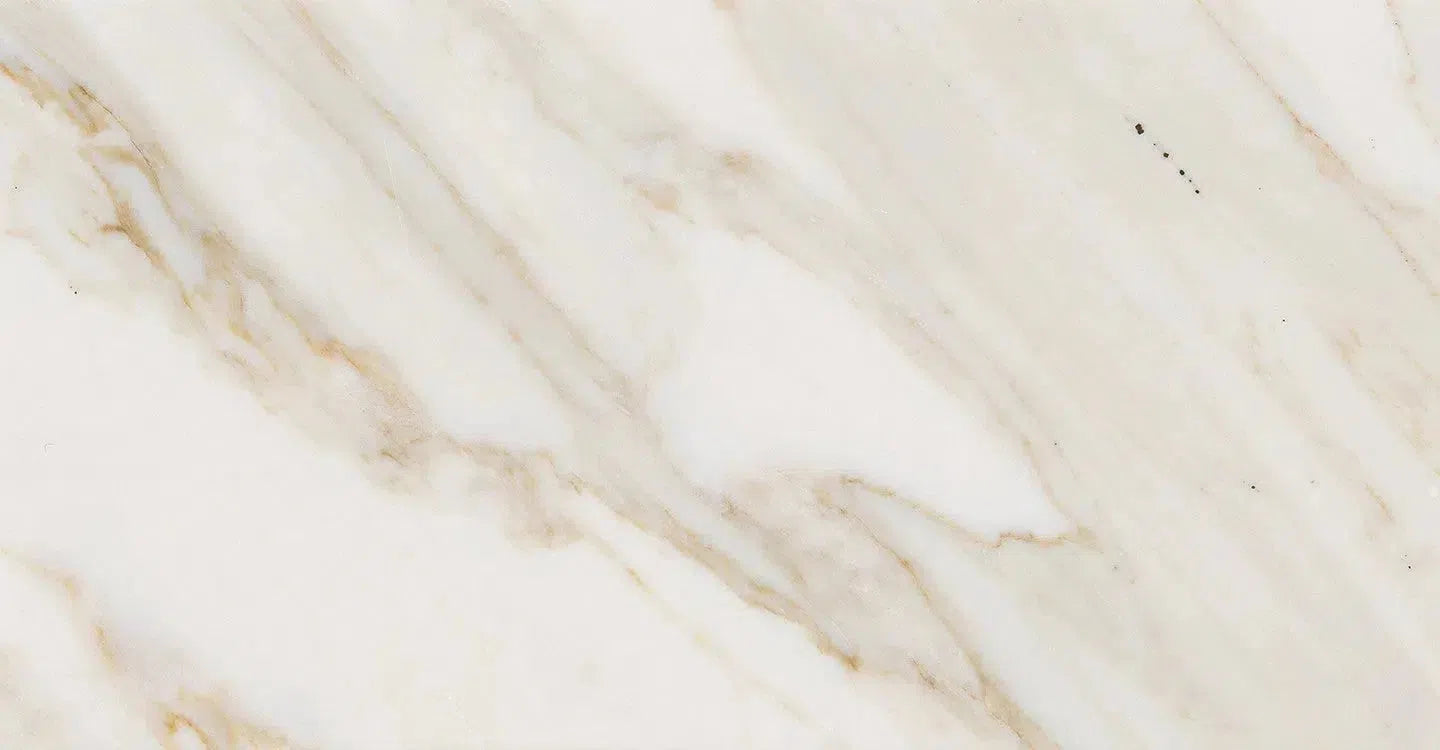 Calacatta Gold
Calacatta Gold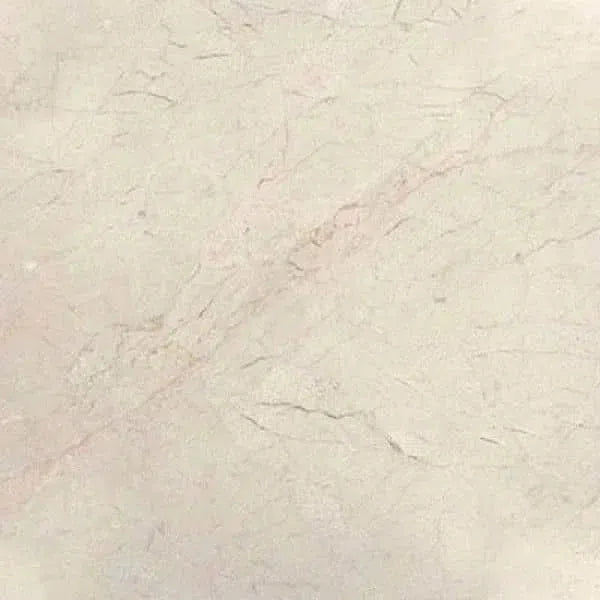 Crema Marfil
Crema Marfil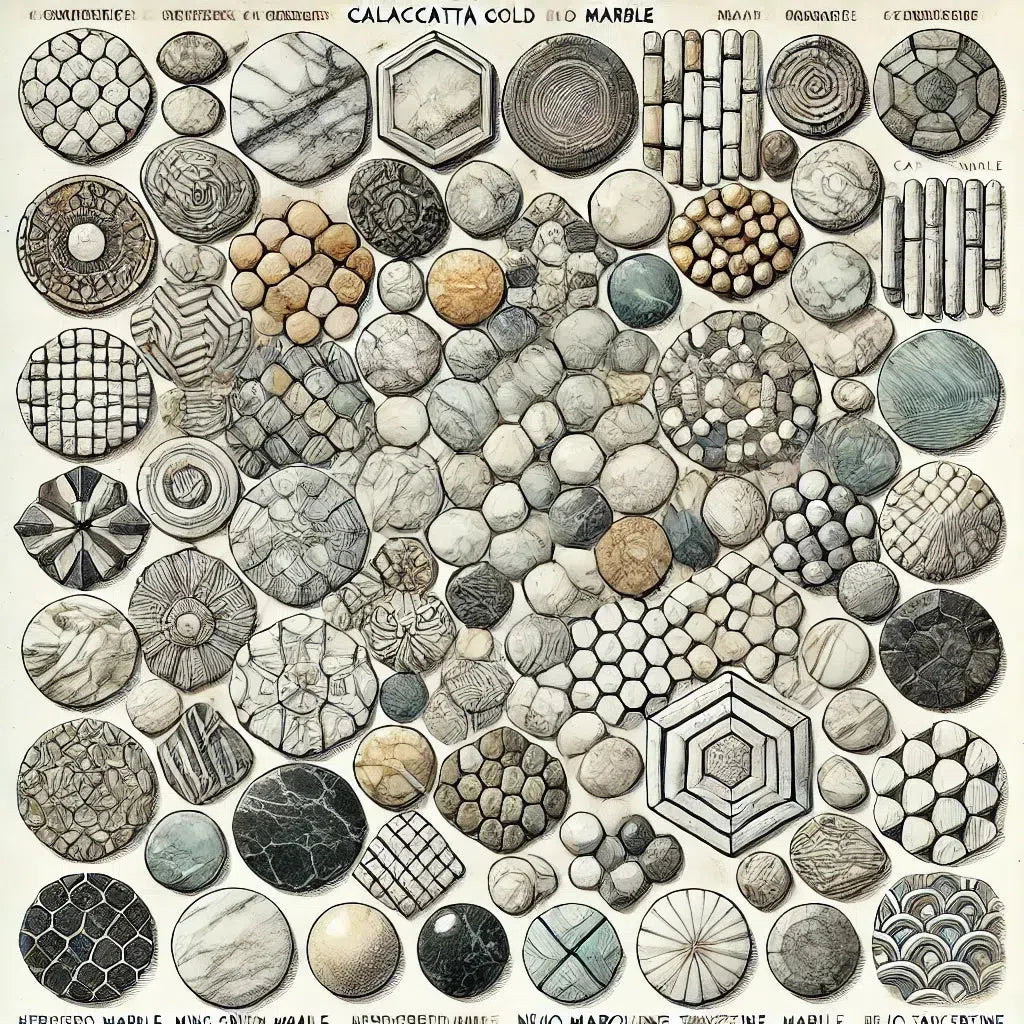 Custom Made Mosaic
Custom Made Mosaic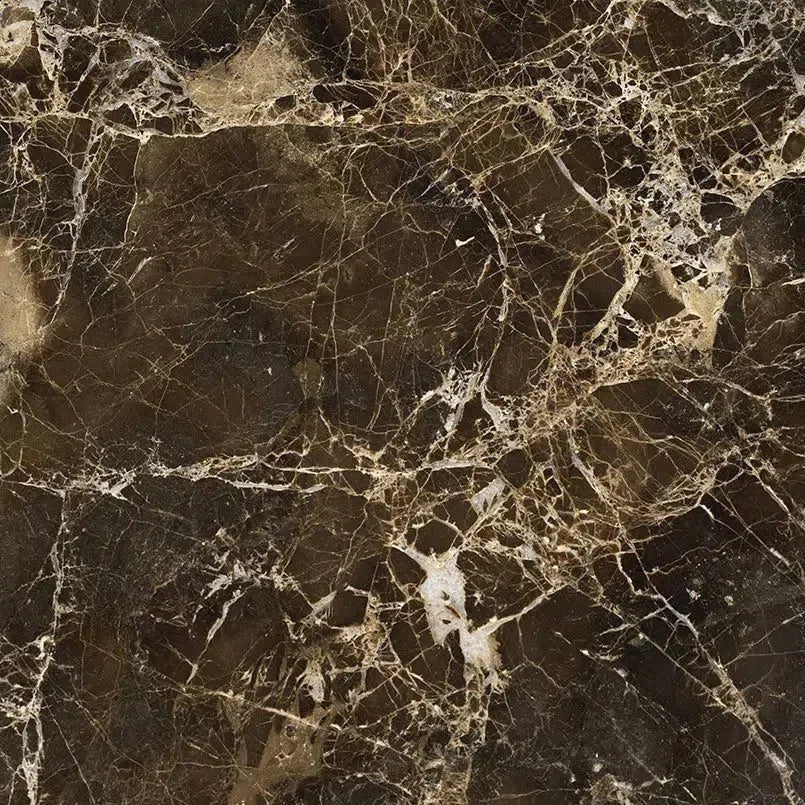 Emperador Dark
Emperador Dark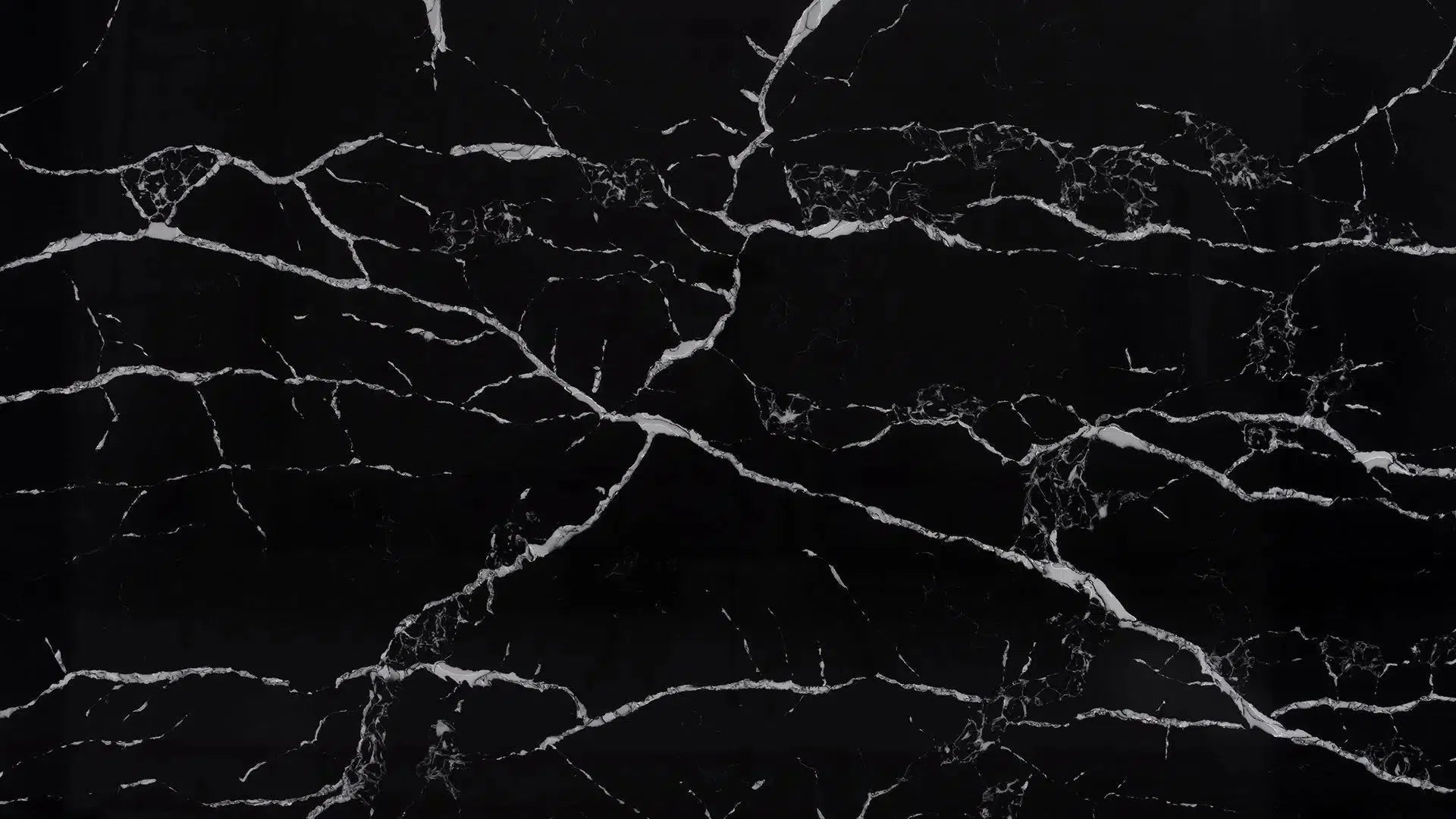 Nero Marquina
Nero Marquina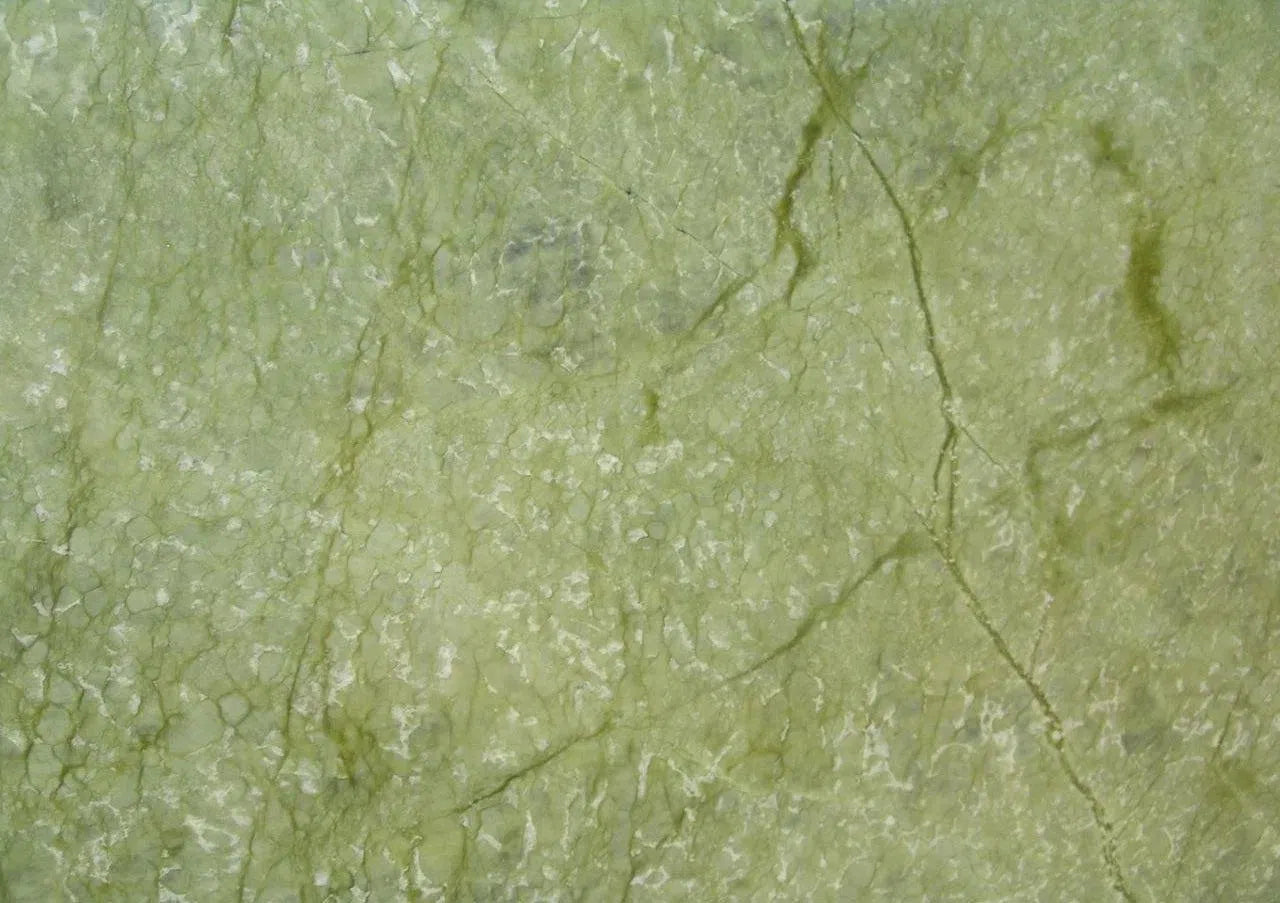 Ming Green Marble
Ming Green Marble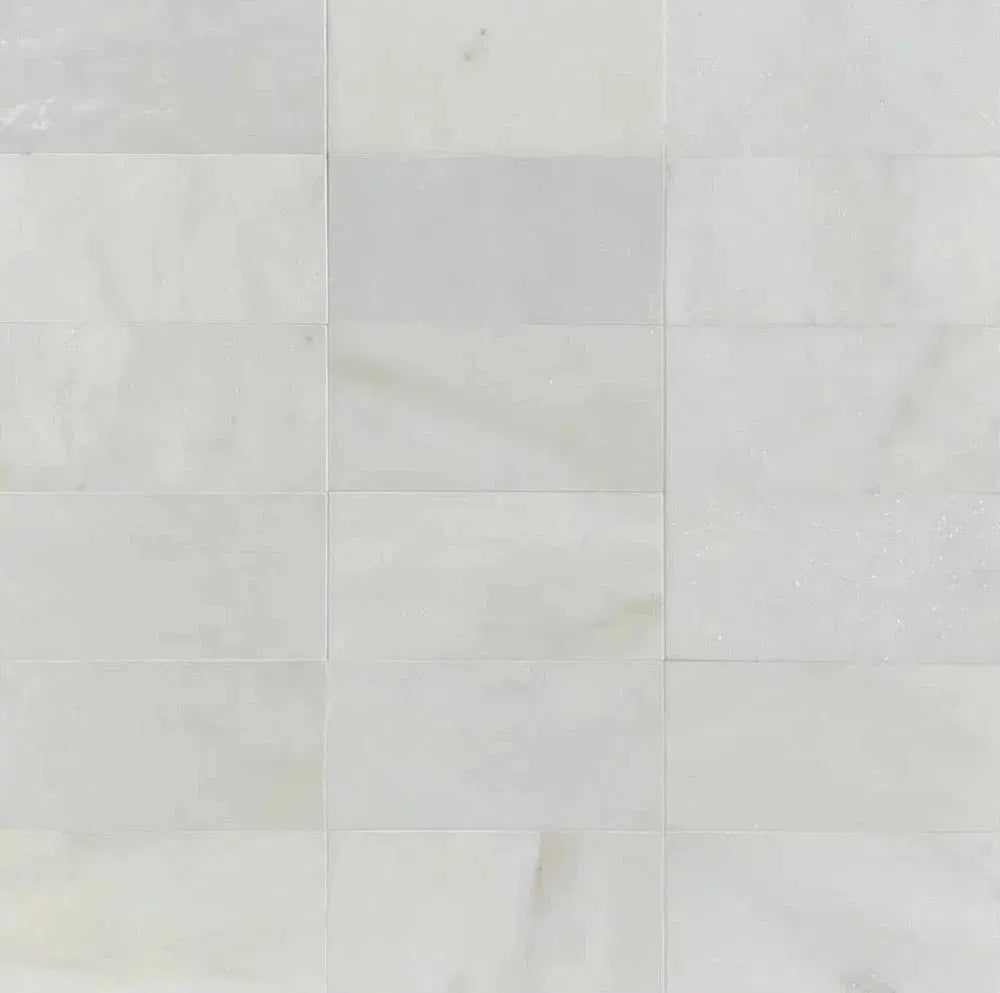 Oriental White Marble (Asian Statuary Marble)
Oriental White Marble (Asian Statuary Marble)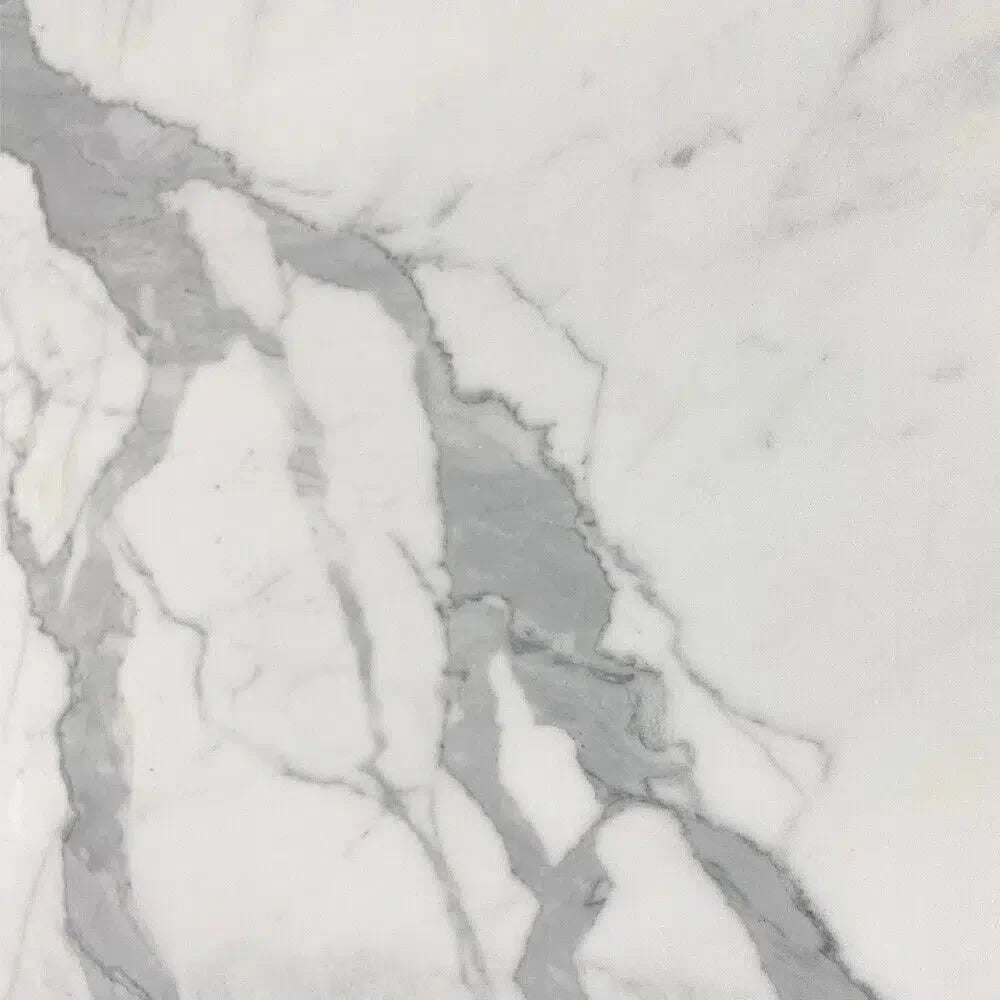 Statuary - Statuario White (Italian) Marble
Statuary - Statuario White (Italian) Marble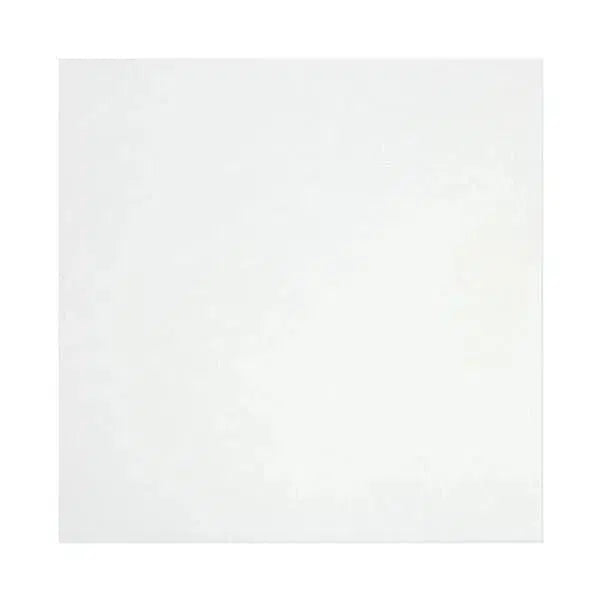 Thassos White
Thassos White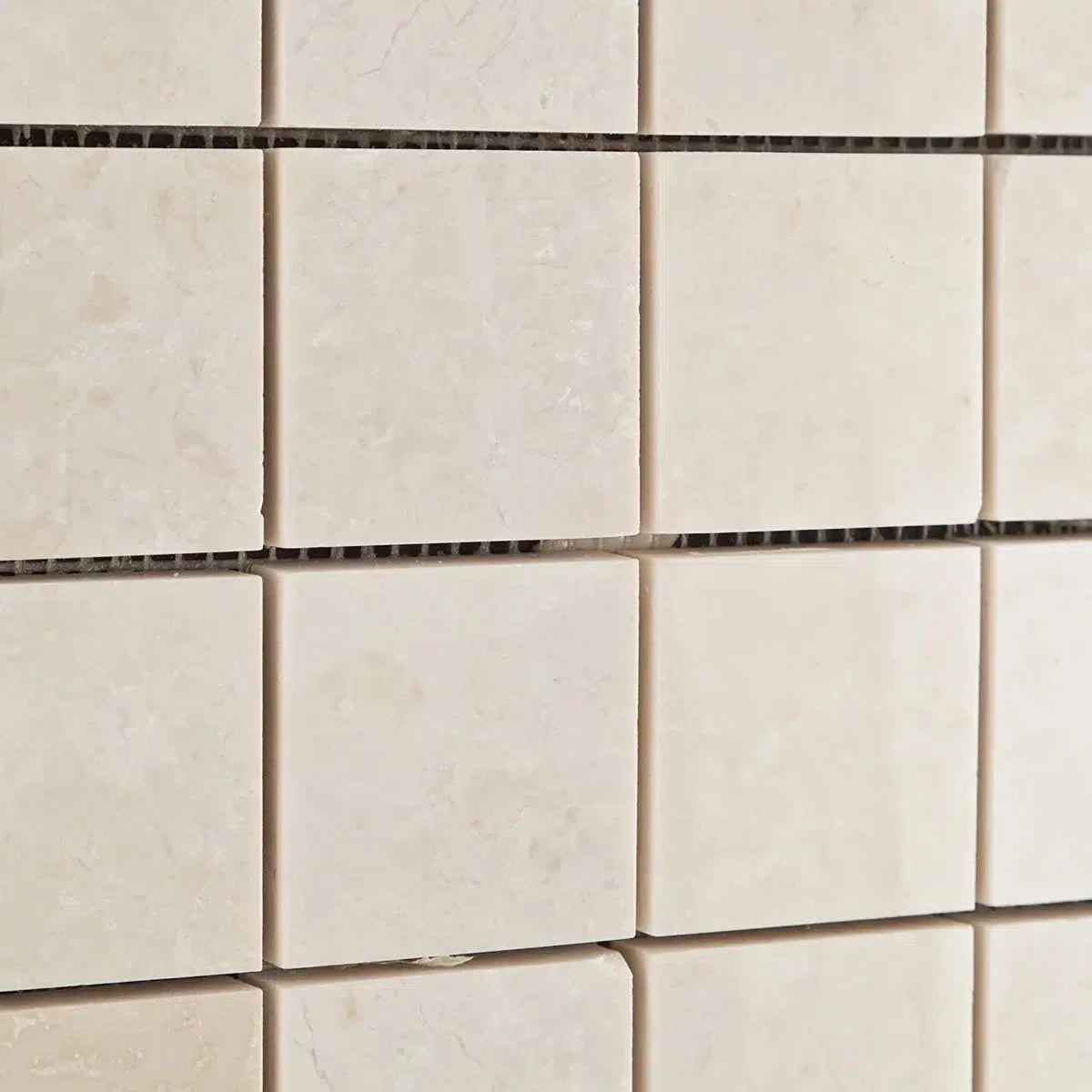 White Pearl/Botticino Beige Marble
White Pearl/Botticino Beige Marble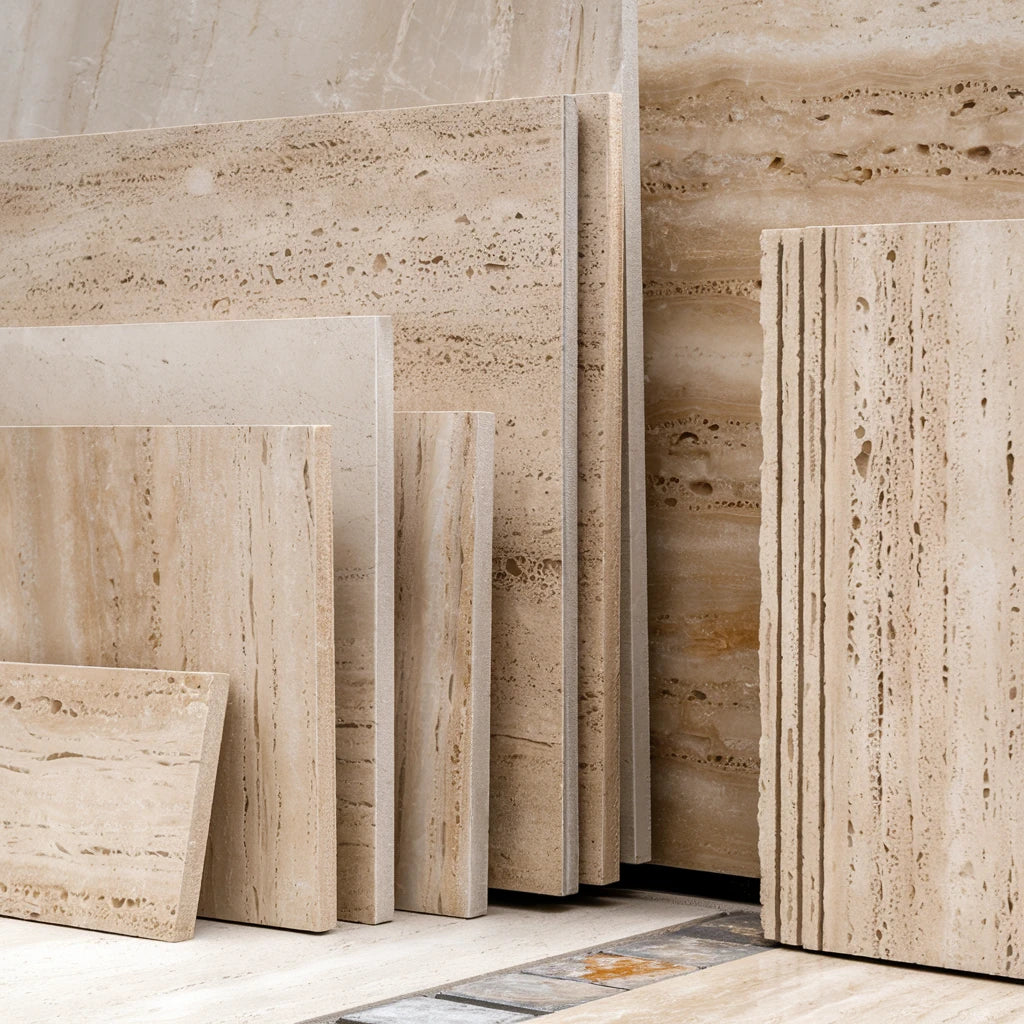 Best Selling Travertine Collections
Best Selling Travertine Collections
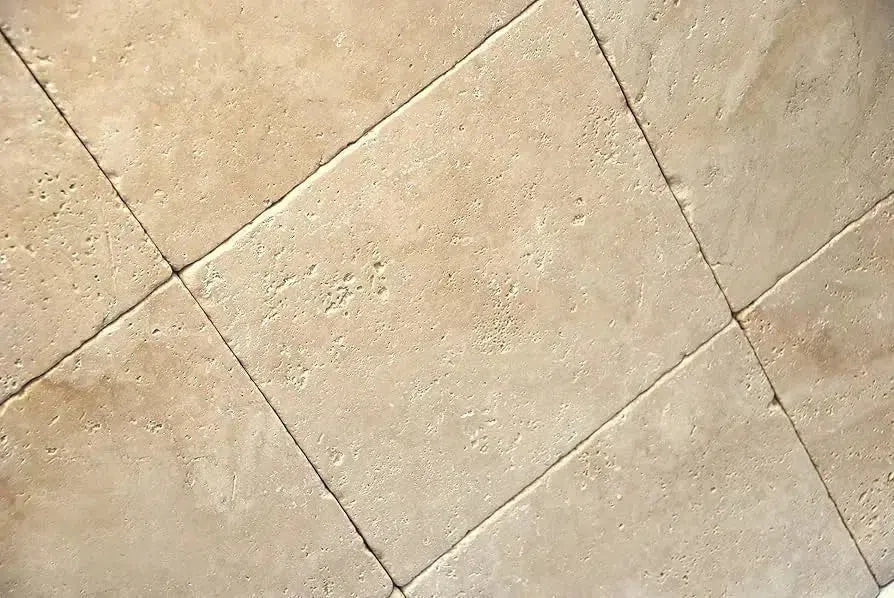 Ivory Travertine
Ivory Travertine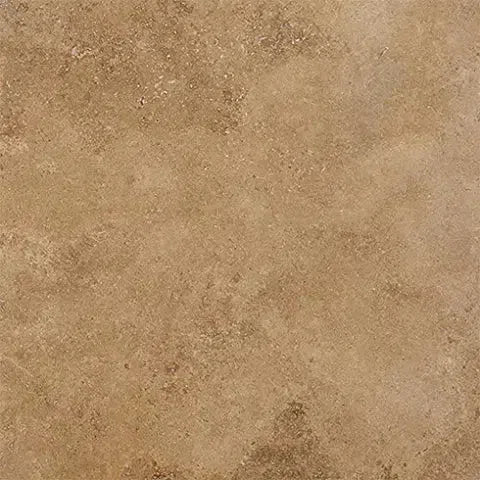 Noce Travertine
Noce Travertine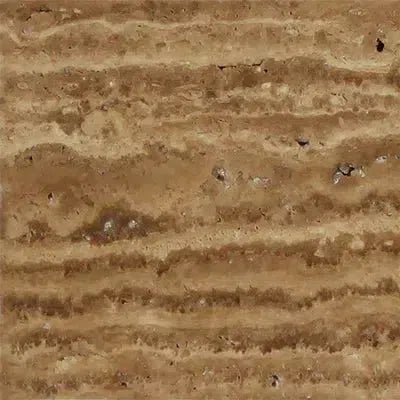 Exotic Noce Travertine
Exotic Noce Travertine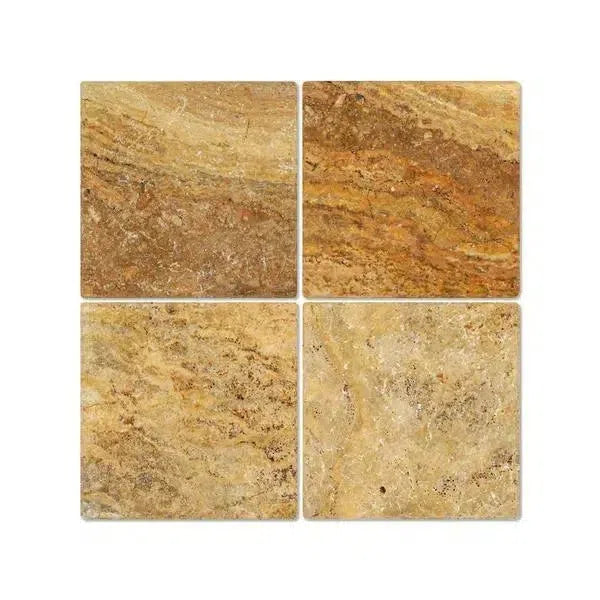 Scabos | Autumn Leaves Travertine
Scabos | Autumn Leaves Travertine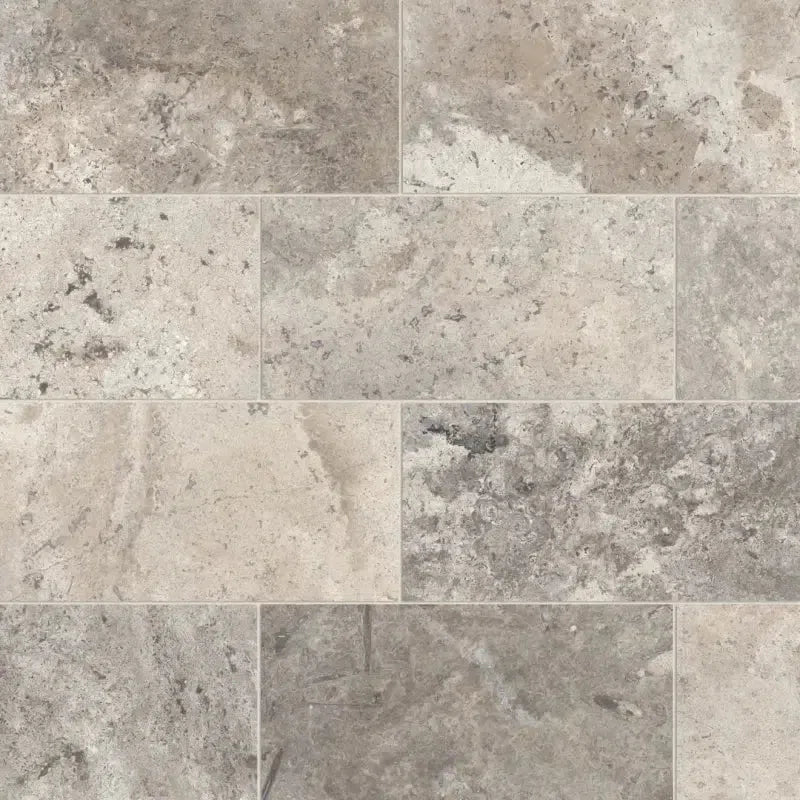 Silver Travertine
Silver Travertine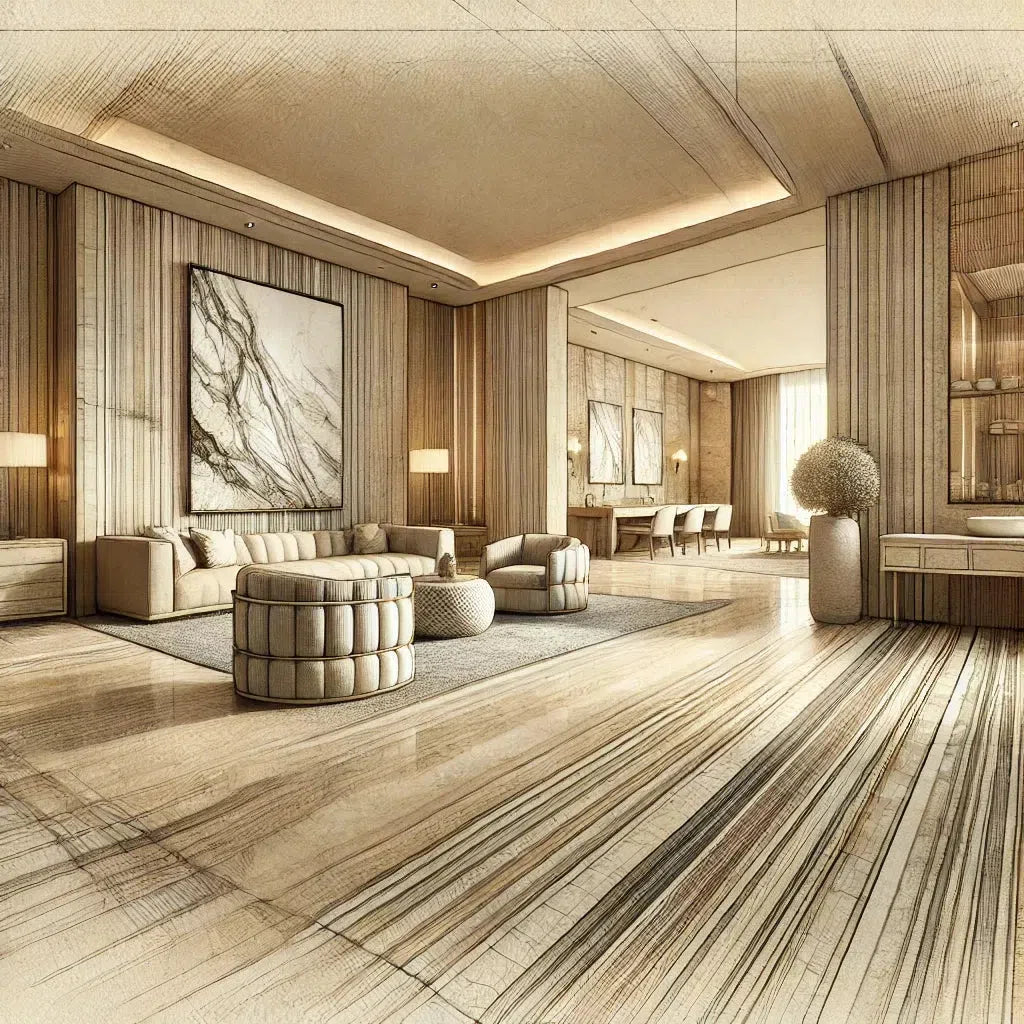 Exotic Travertine
Exotic Travertine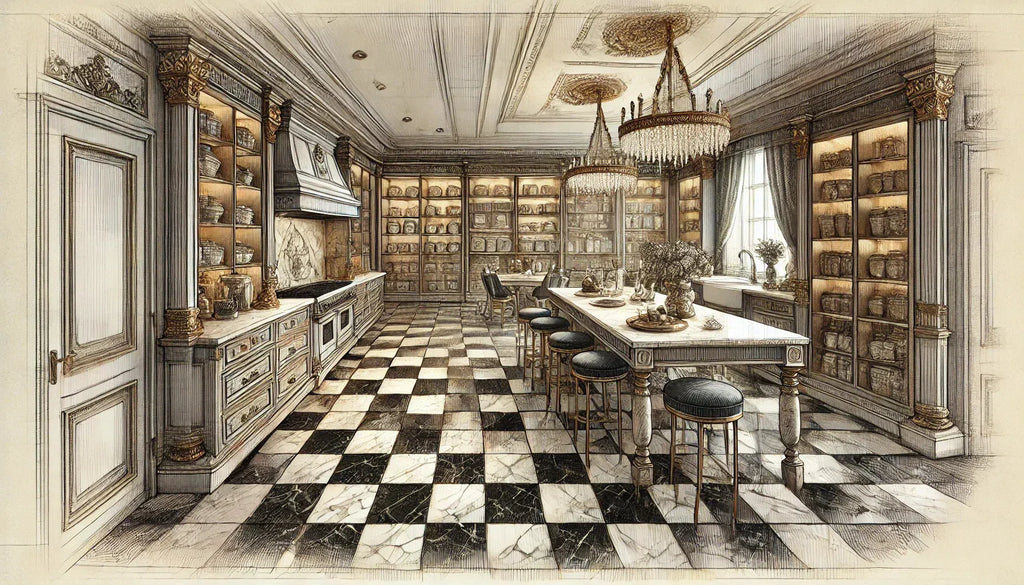 Checkerboard
Checkerboard
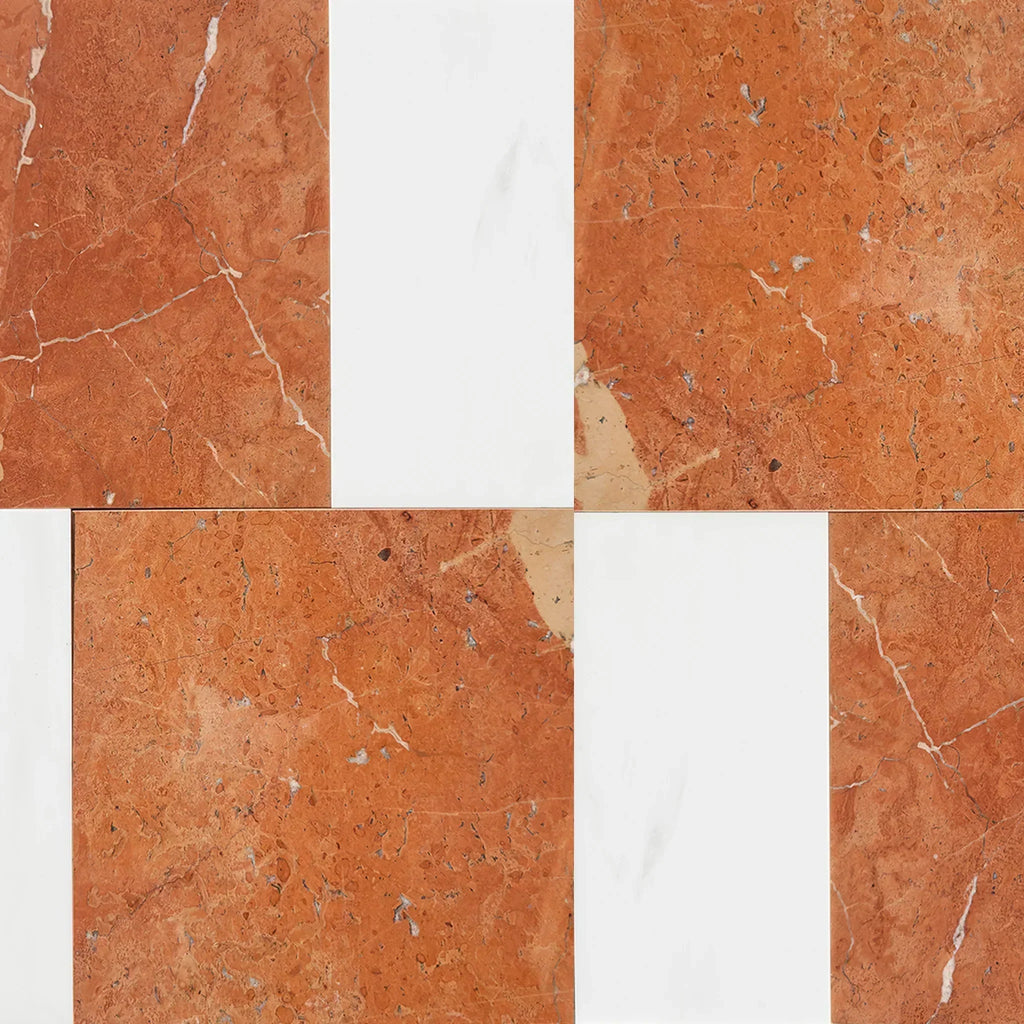 Patterned Tile
Patterned Tile
 Shop By Material
Shop By Material
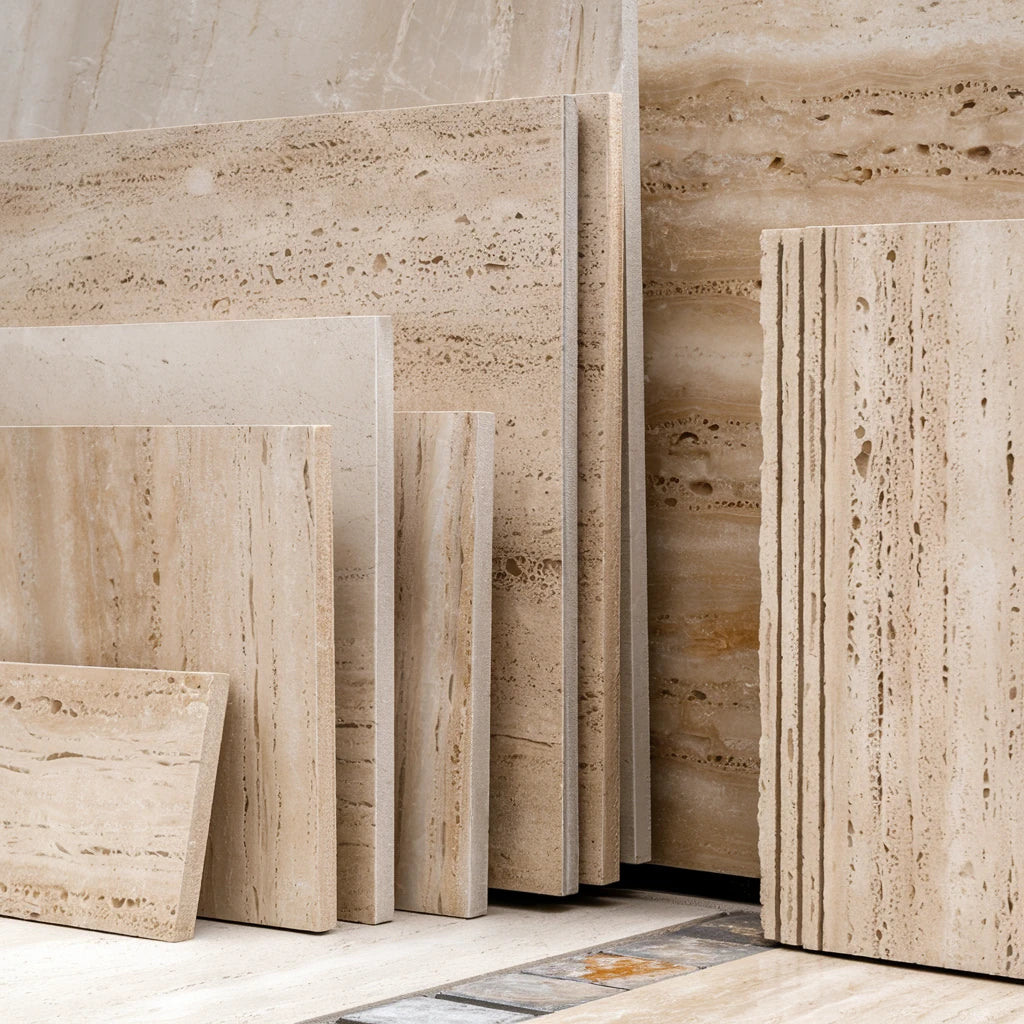 Travertine
Travertine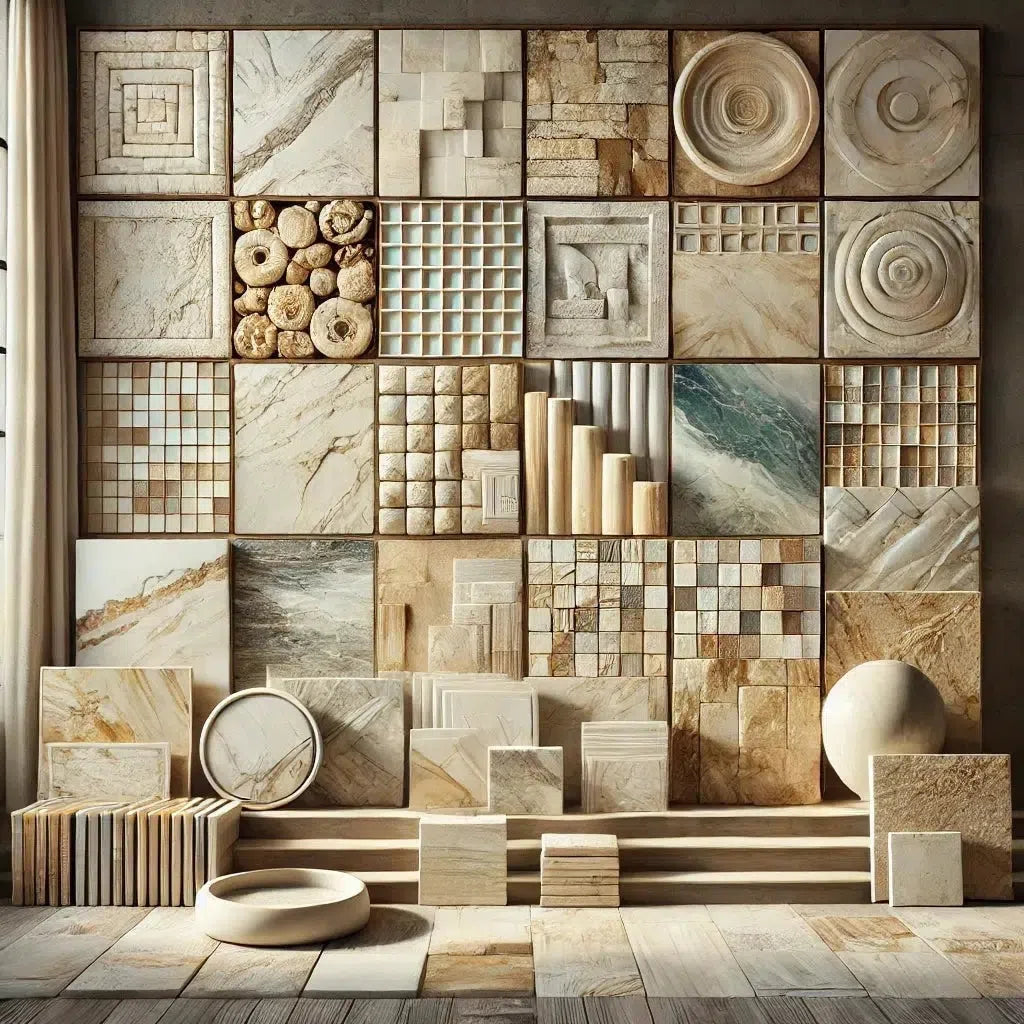 Marble
Marble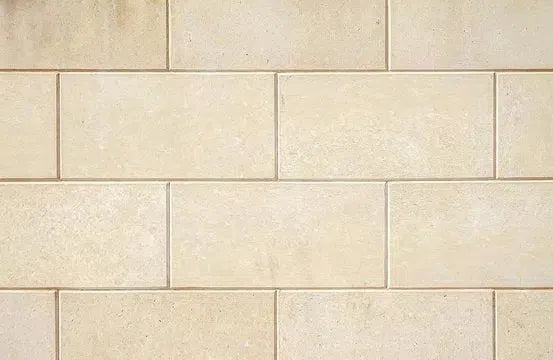 Limestone
Limestone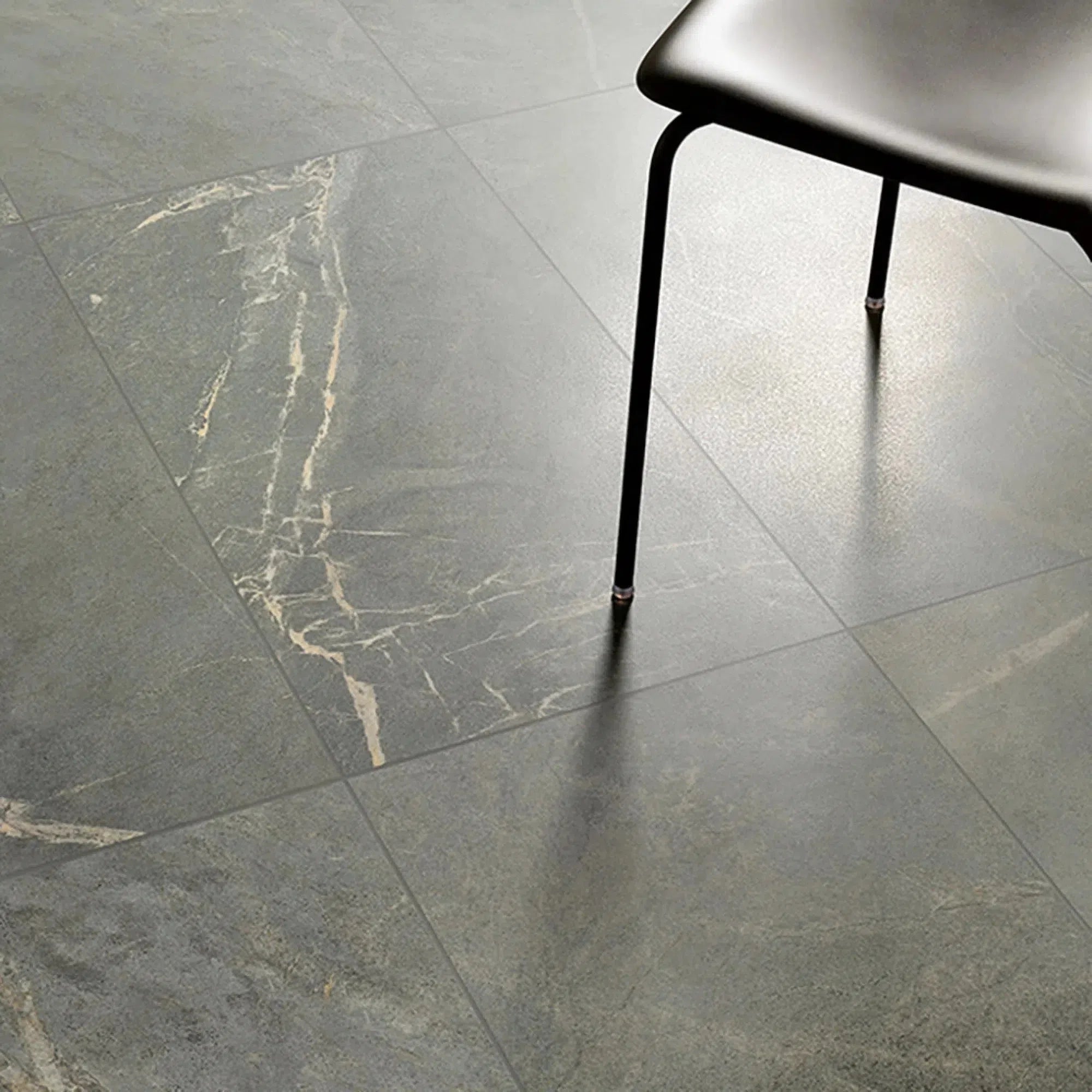 Soap Stone
Soap Stone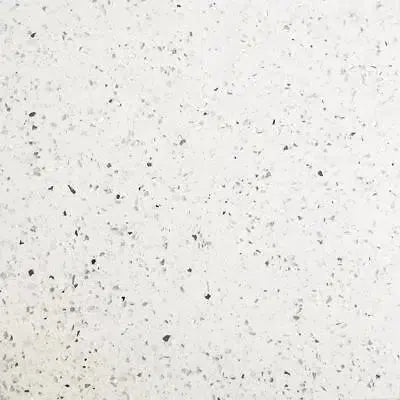 Quartz
Quartz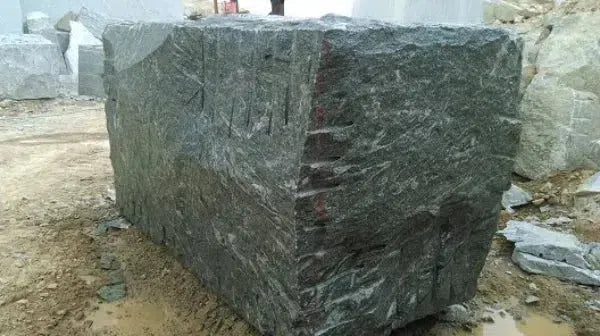 Granite
Granite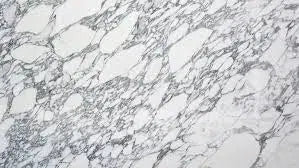 Shop By Name
Shop By Name
 Absolute Black Granite
Absolute Black Granite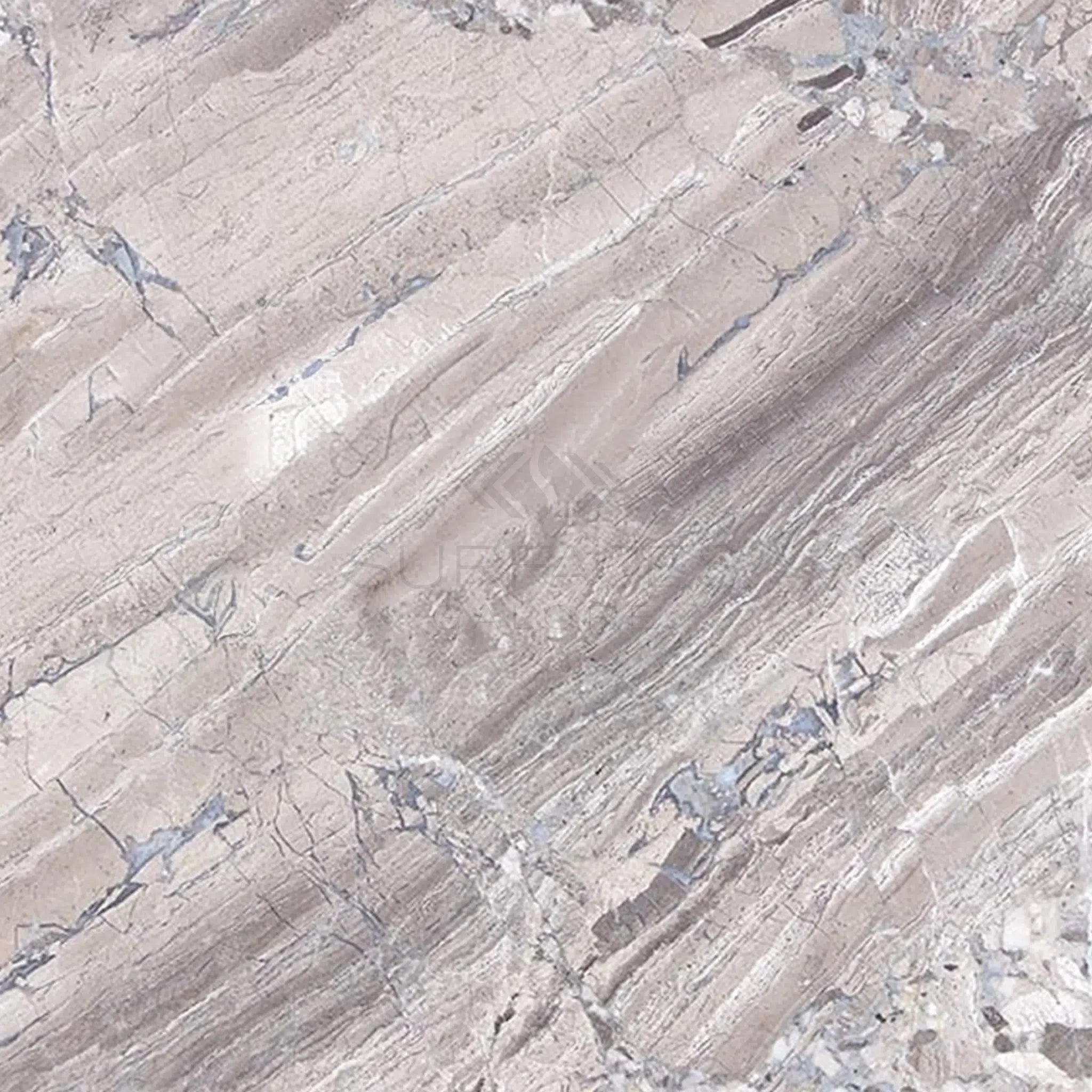 Atlantic Gray Marble
Atlantic Gray Marble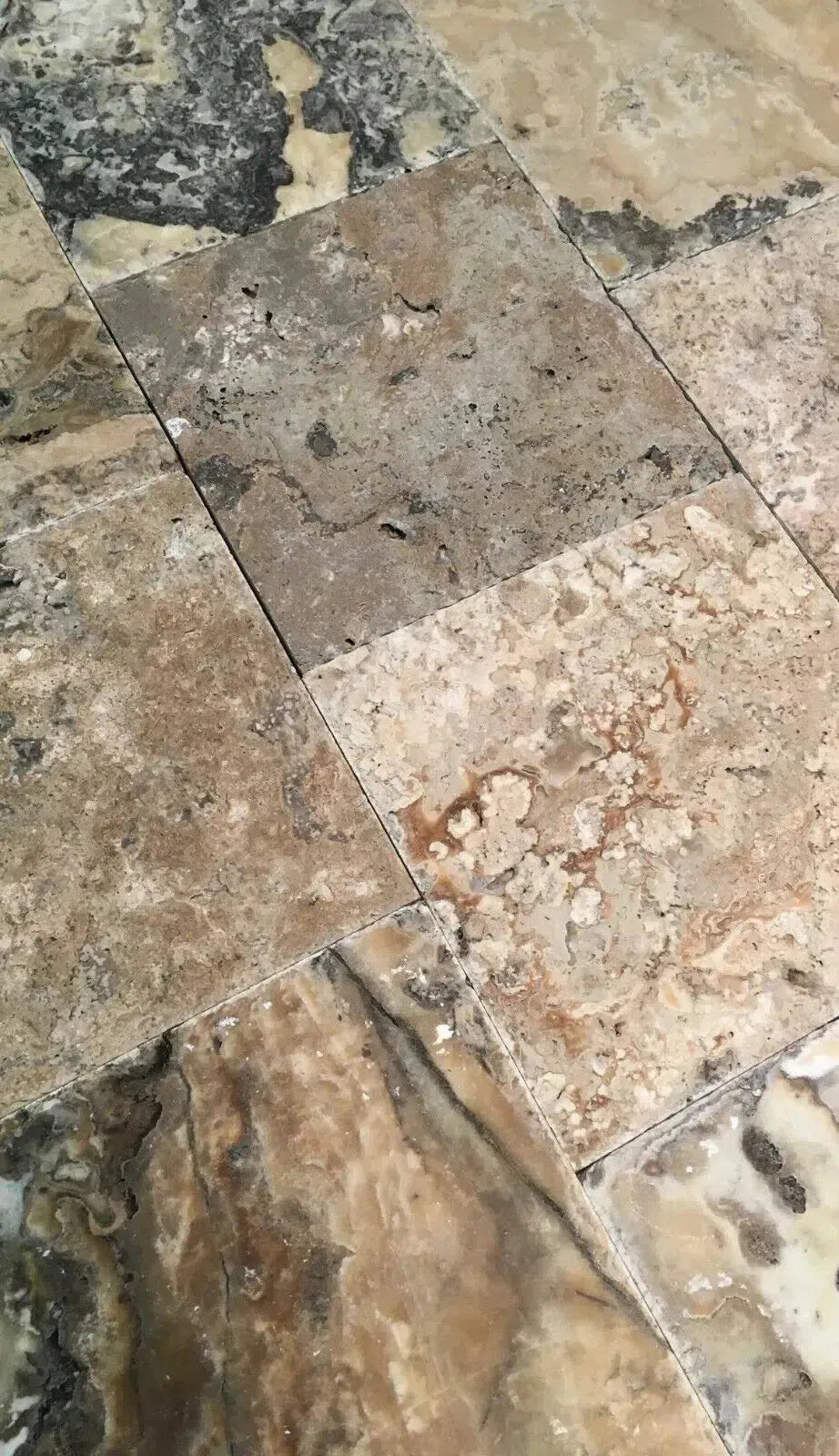 Antico Onyx Travertine
Antico Onyx Travertine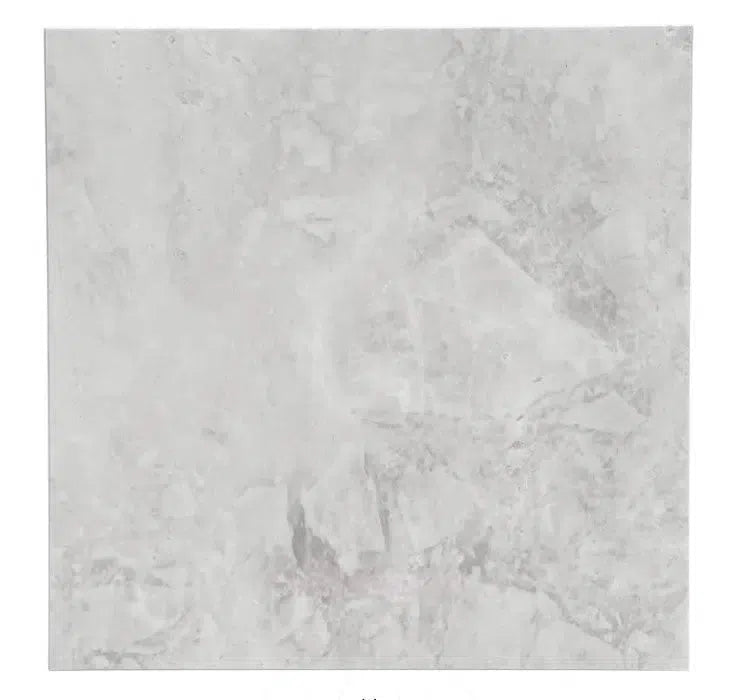 Bianco Congelato Dolomite
Bianco Congelato Dolomite Bianco Venatino (Bianco Mare) Marble
Bianco Venatino (Bianco Mare) Marble Burgundy Mocha Marble
Burgundy Mocha Marble Calacatta Verde Royale Marble
Calacatta Verde Royale Marble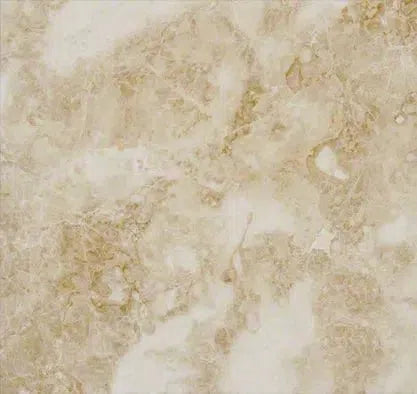 Cappuccino Marble
Cappuccino Marble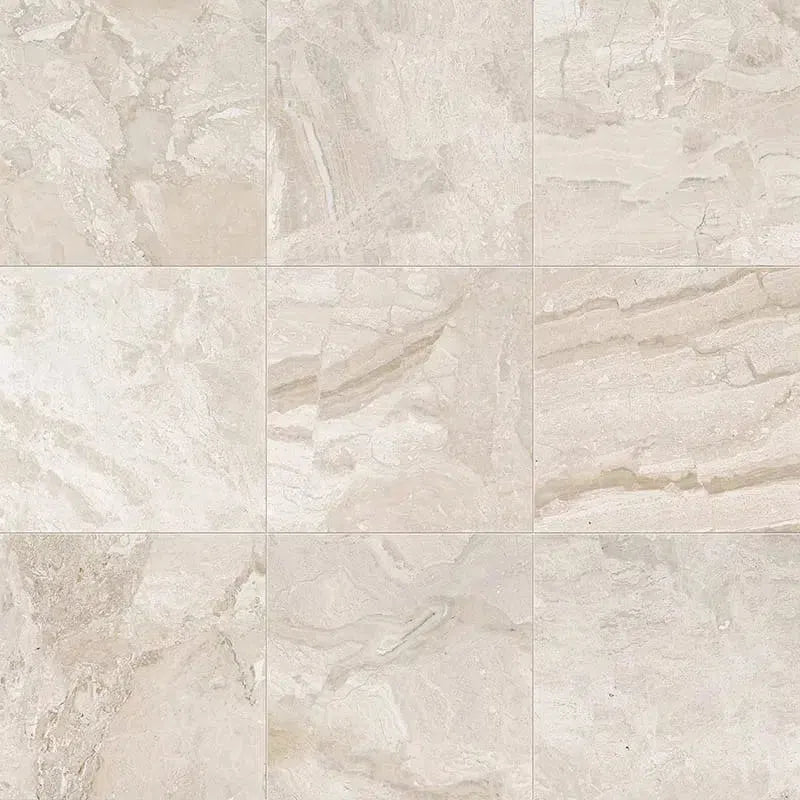 Diano Royal (Queen Beige) Marble
Diano Royal (Queen Beige) Marble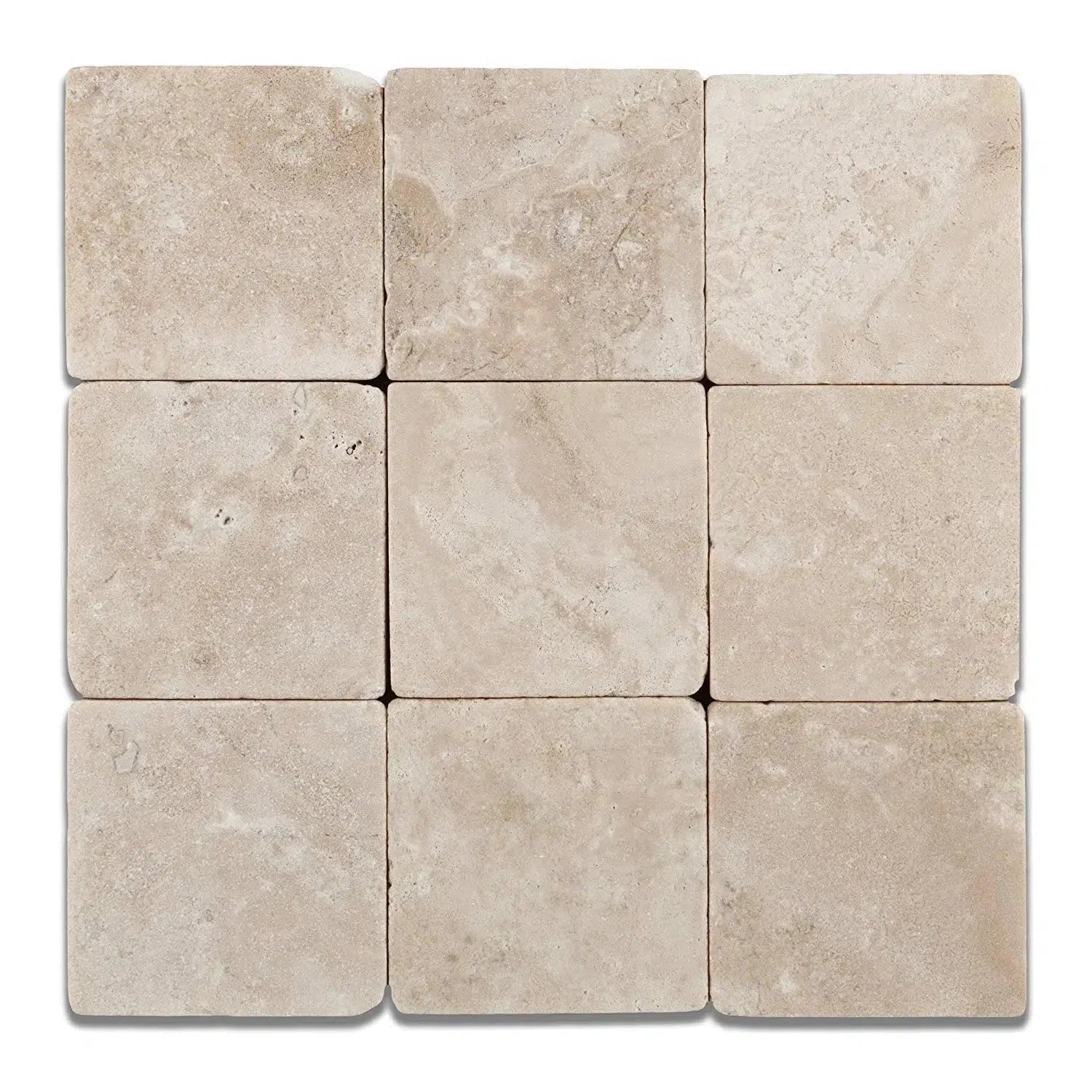 Durango Cream Traverine
Durango Cream Traverine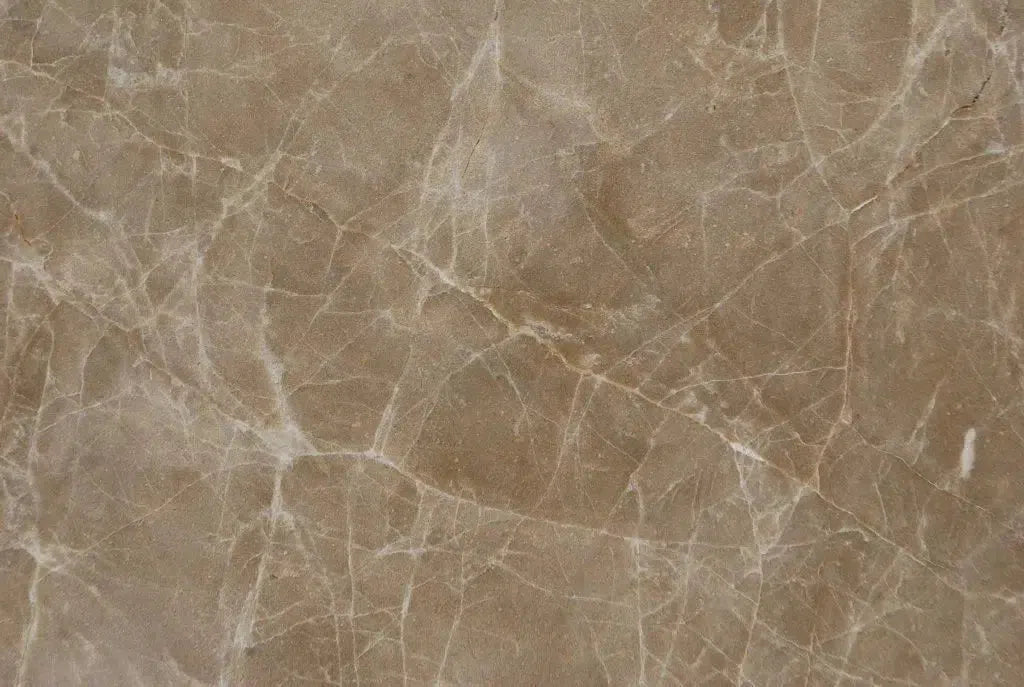 Emperador Light Marble
Emperador Light Marble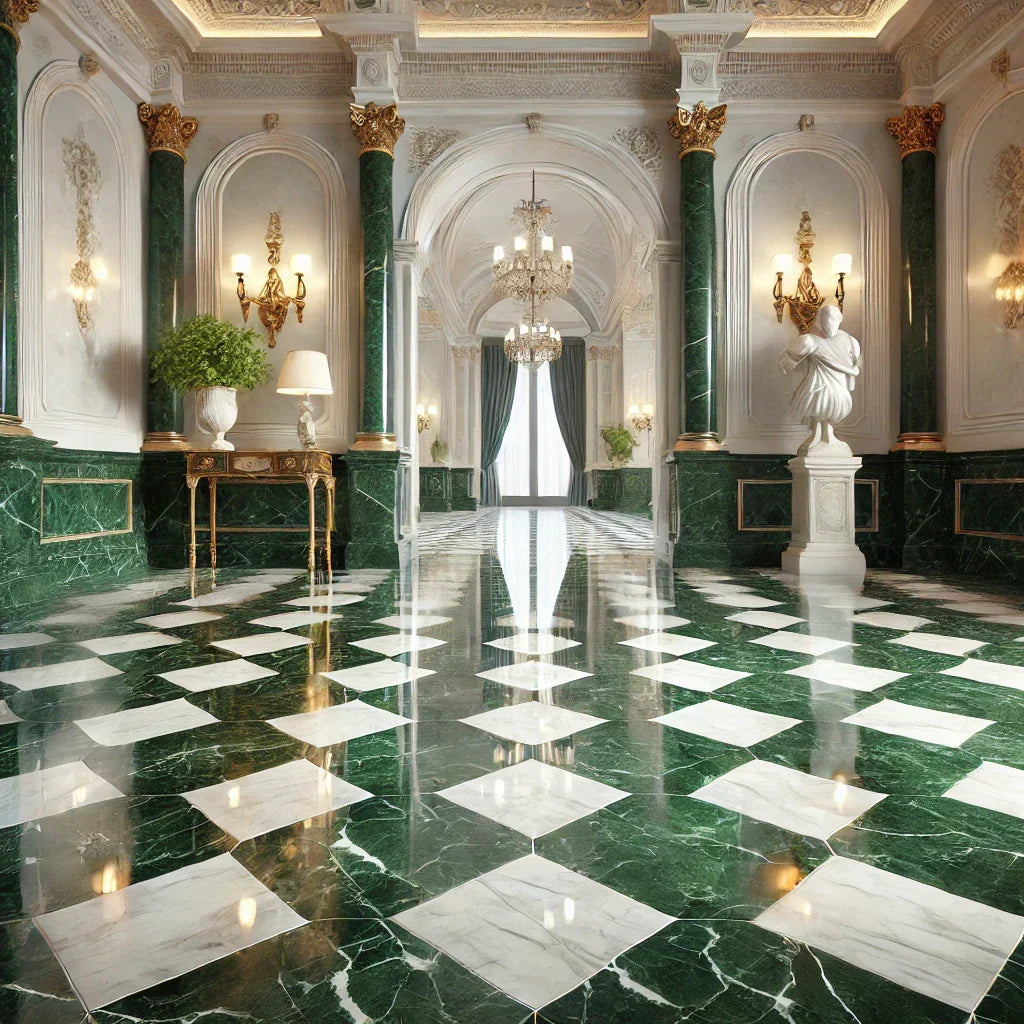 Empress Green Marble
Empress Green Marble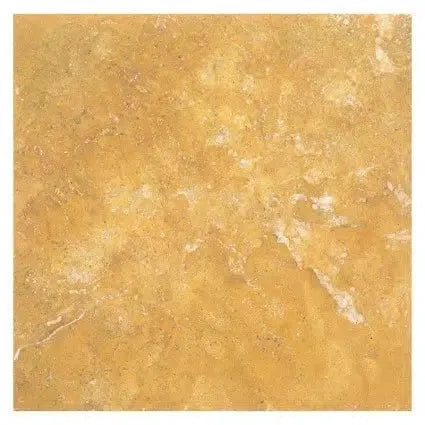 Gold/Yellow Travertine
Gold/Yellow Travertine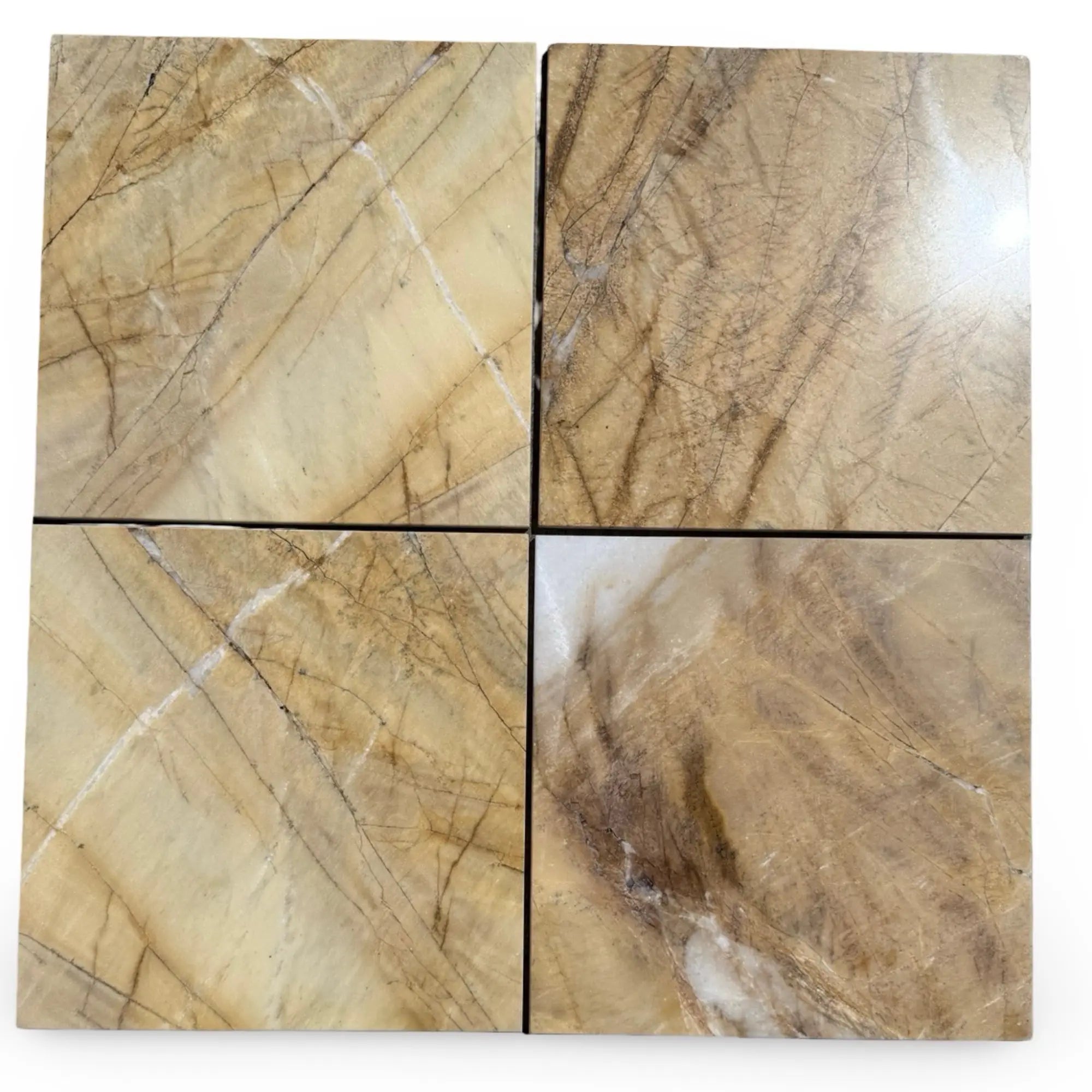 Golden Horizon Marble
Golden Horizon Marble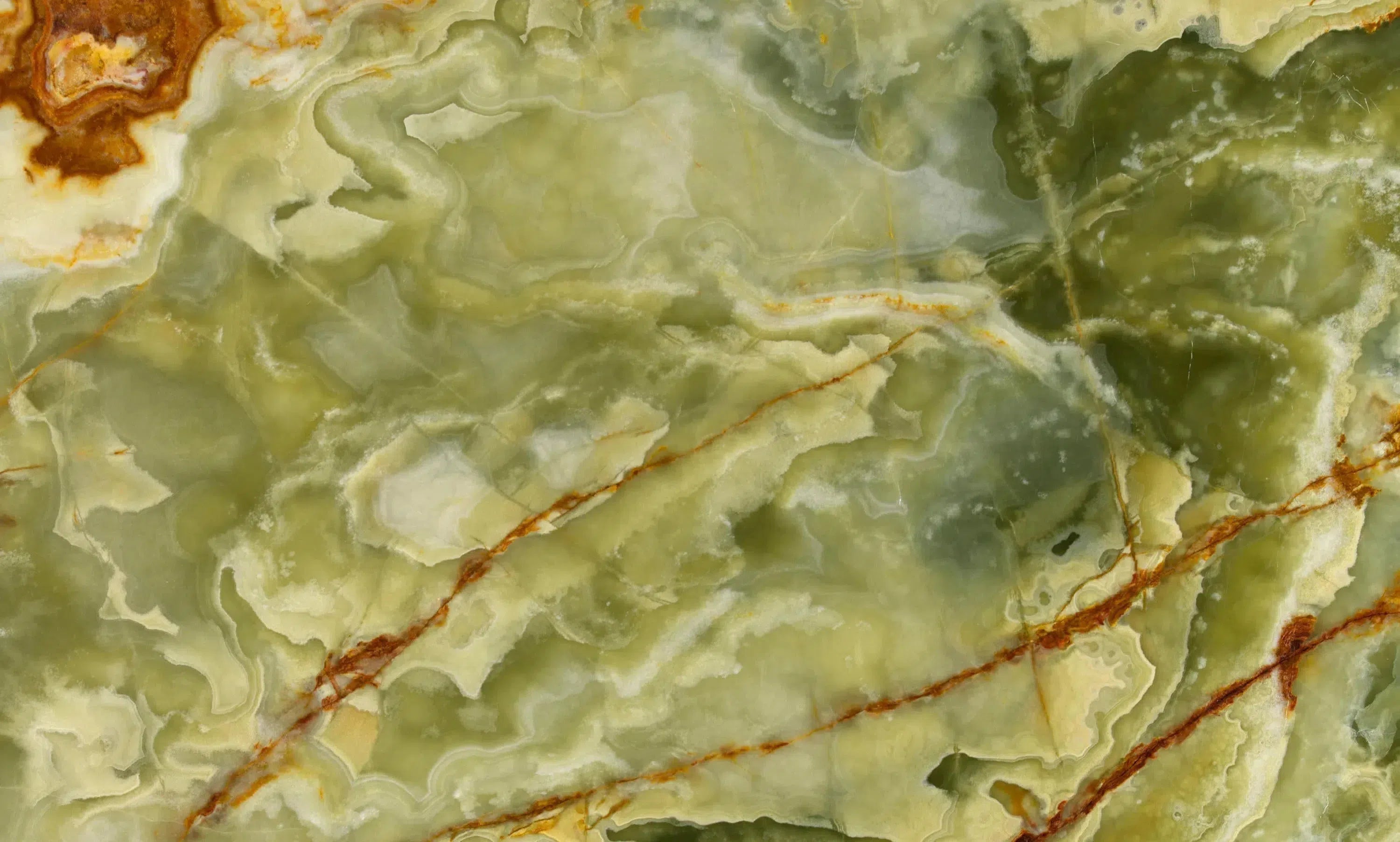 Green Onyx Marble
Green Onyx Marble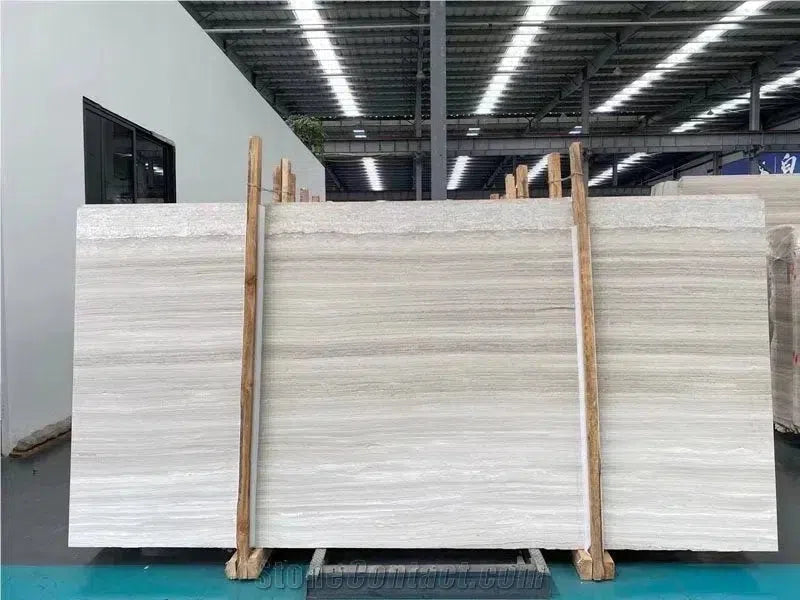 Haisa Light (White Wood) Limestone
Haisa Light (White Wood) Limestone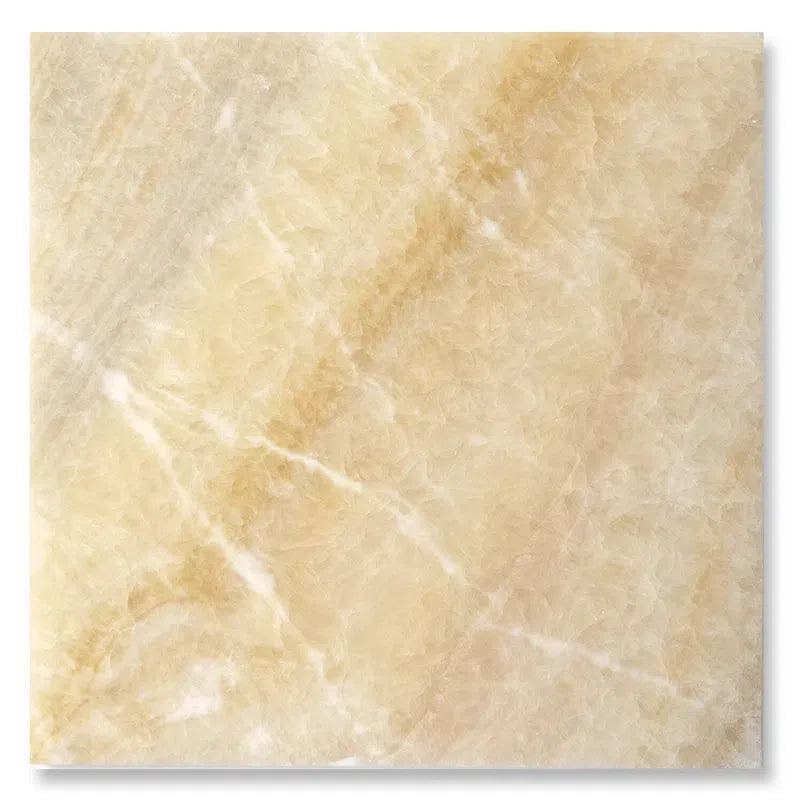 Honey Onyx Marble
Honey Onyx Marble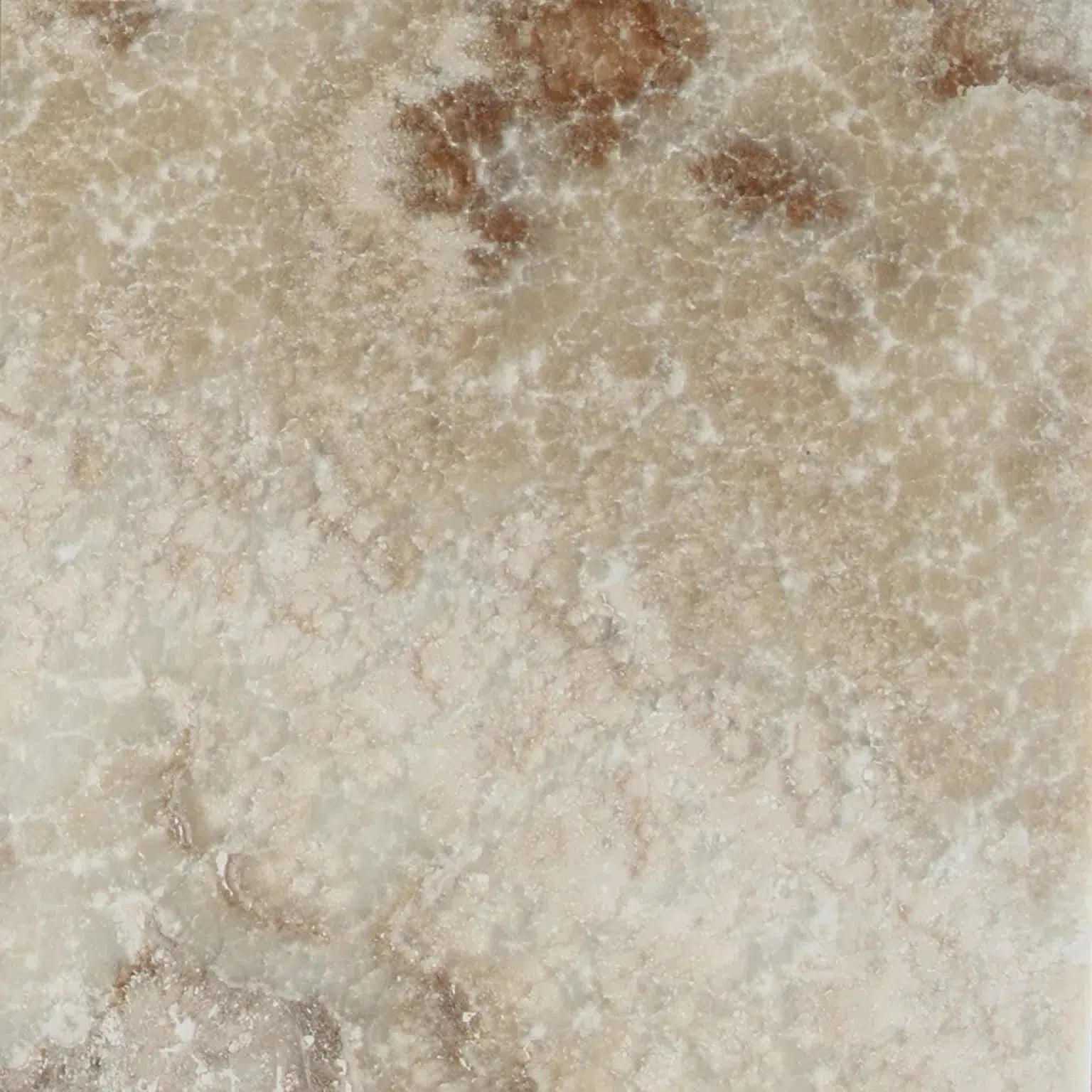 La Travonya Travertine
La Travonya Travertine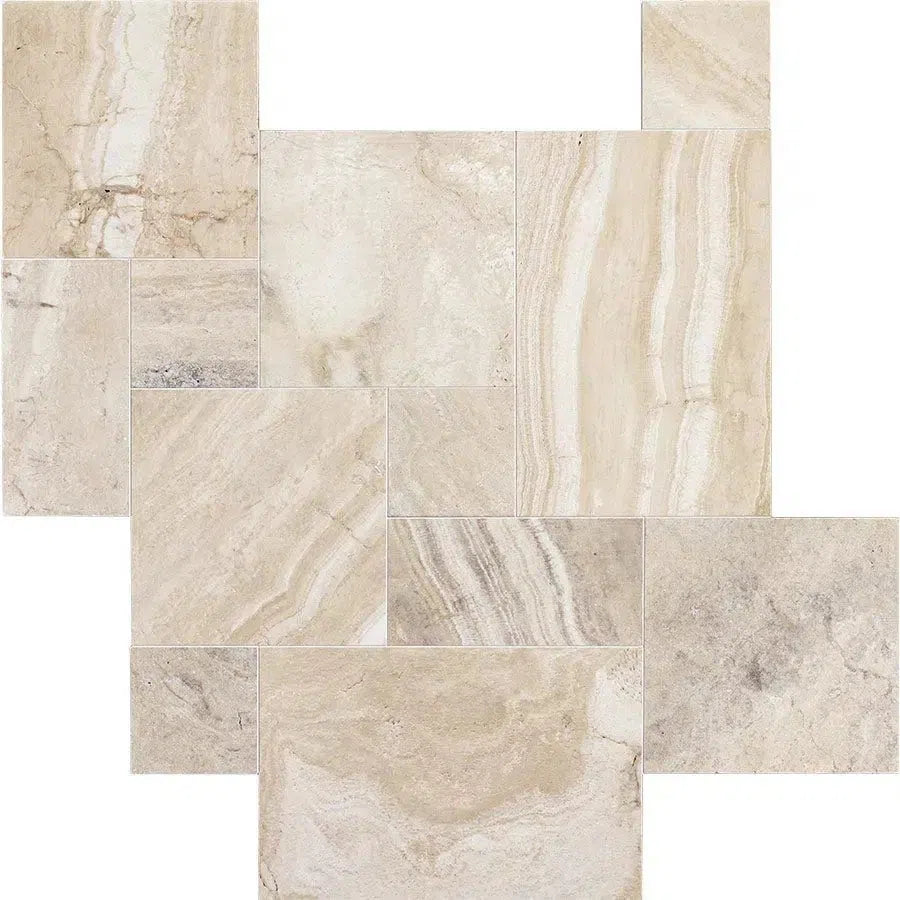 Malibu Travertine
Malibu Travertine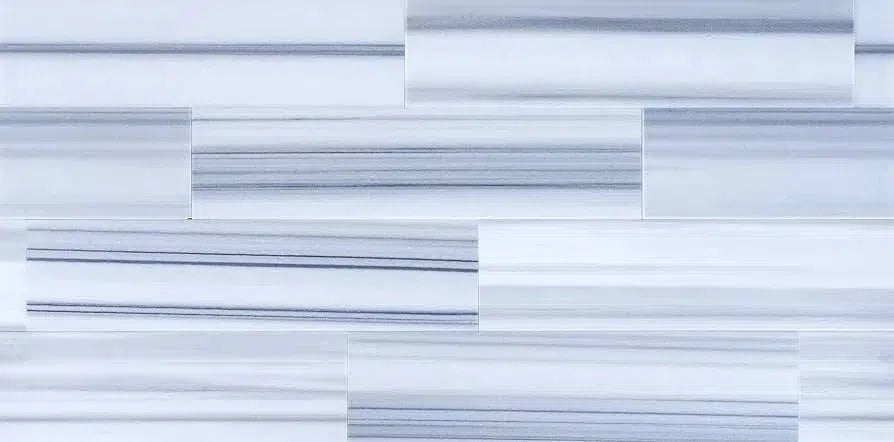 Mink (Equator) Marble
Mink (Equator) Marble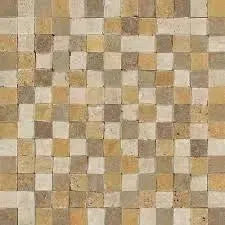 Mixed (Ivory-Noce-Gold) Travertine
Mixed (Ivory-Noce-Gold) Travertine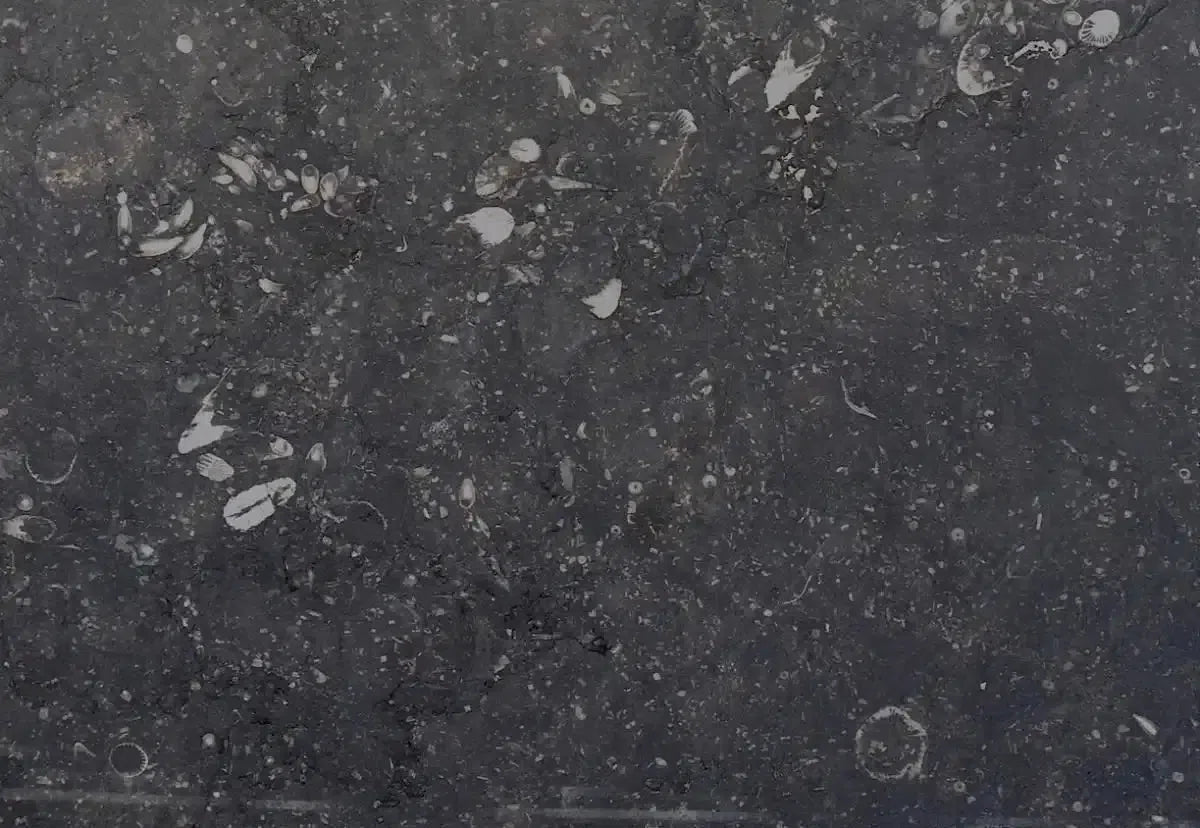 Pierre Bleue (Pierre Blue) Marble
Pierre Bleue (Pierre Blue) Marble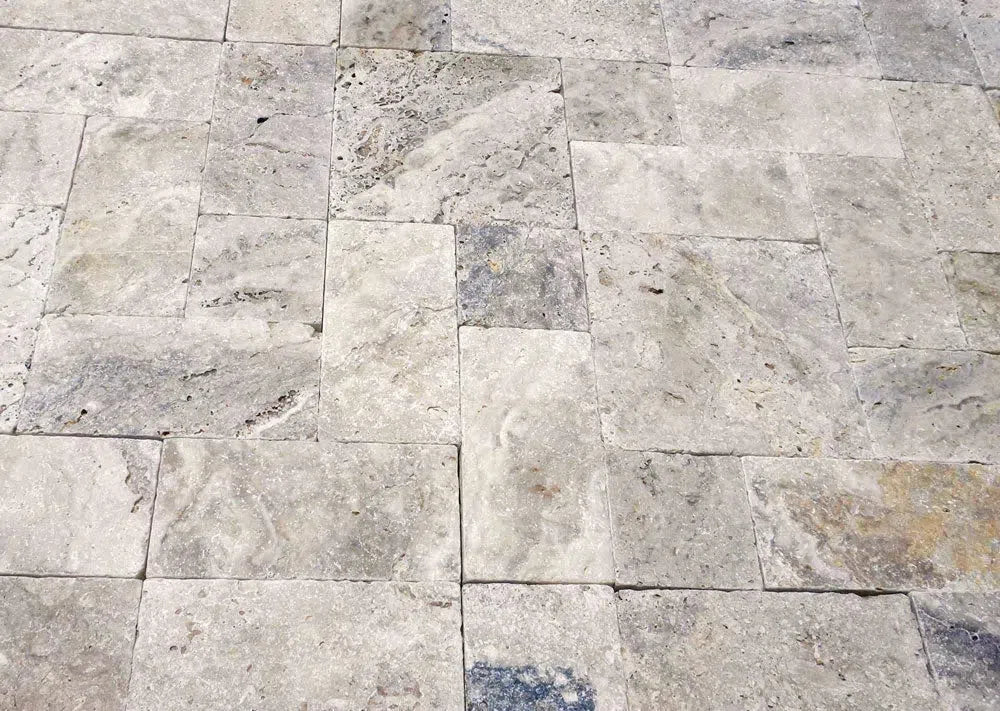 Philadelphia Travertine
Philadelphia Travertine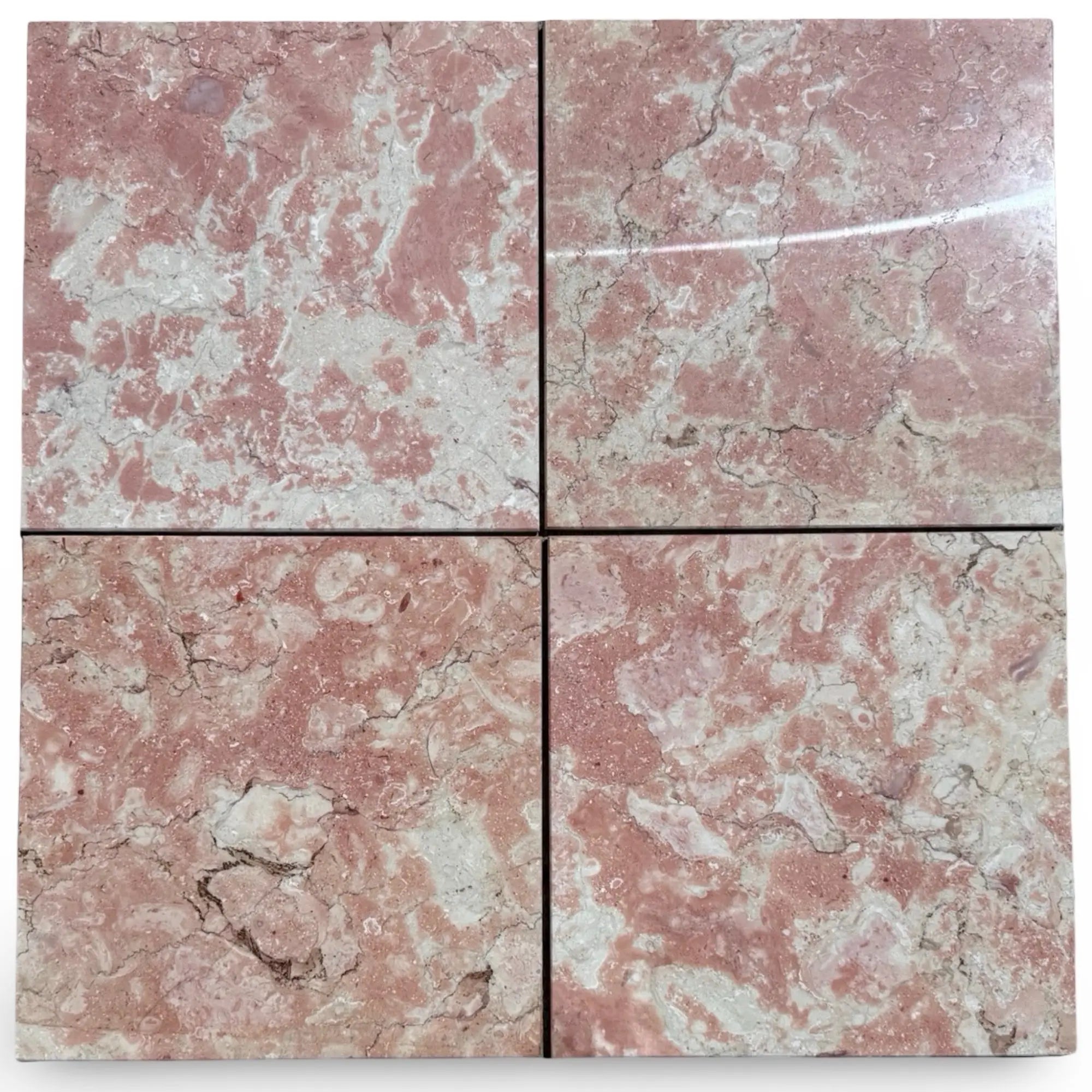 Rosé Aurora Marble
Rosé Aurora Marble Rosetta Storm Marble
Rosetta Storm Marble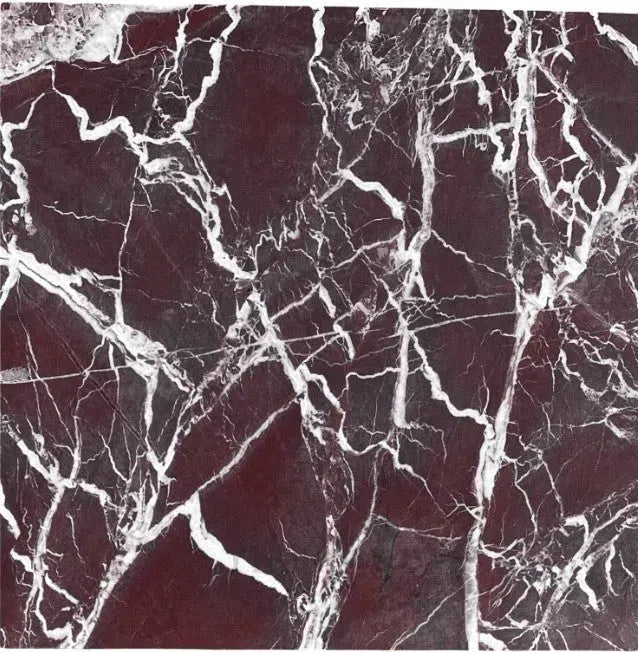 Rosso Levanto Marble
Rosso Levanto Marble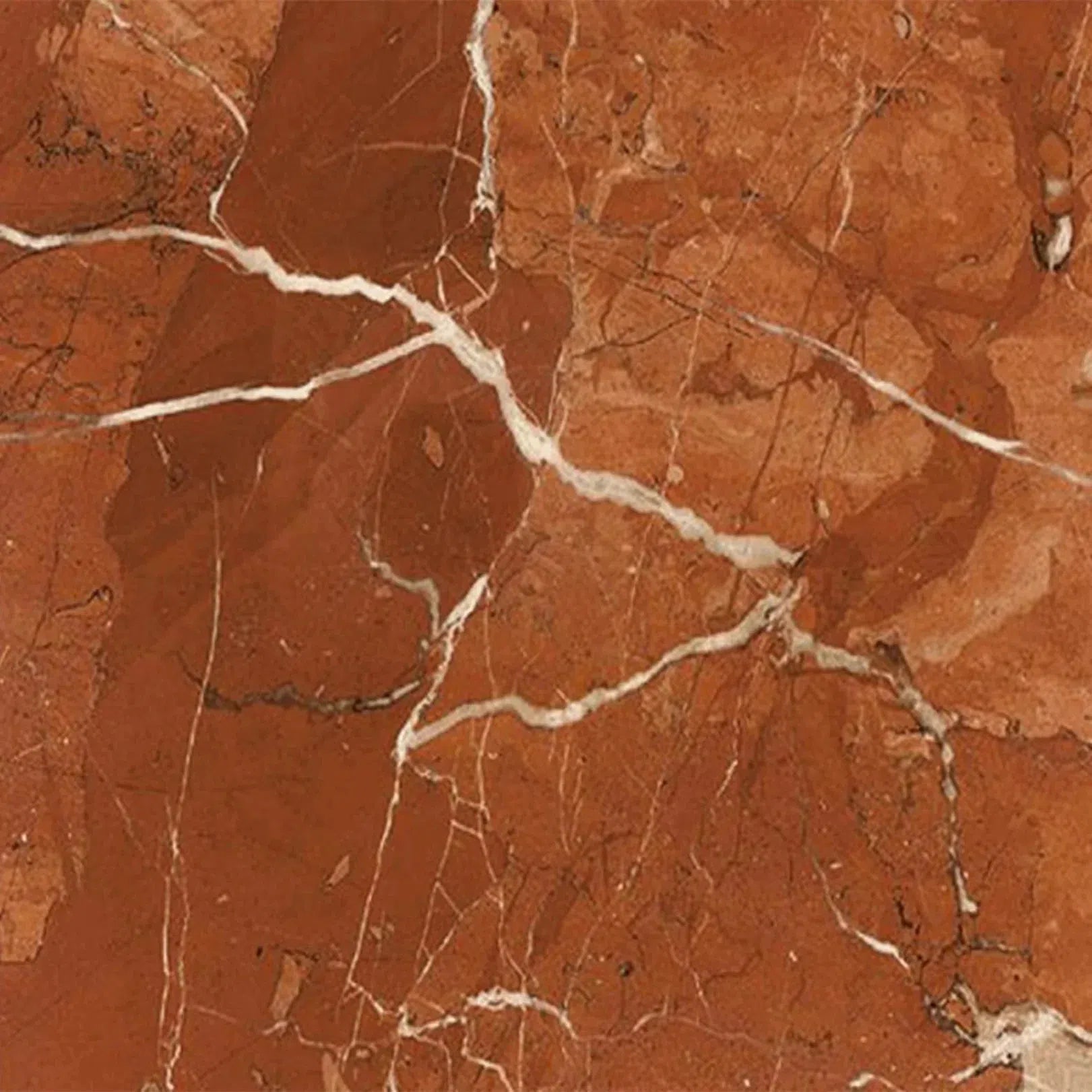 Rojo Alicante Marble
Rojo Alicante Marble Sahara Ember Marble
Sahara Ember Marble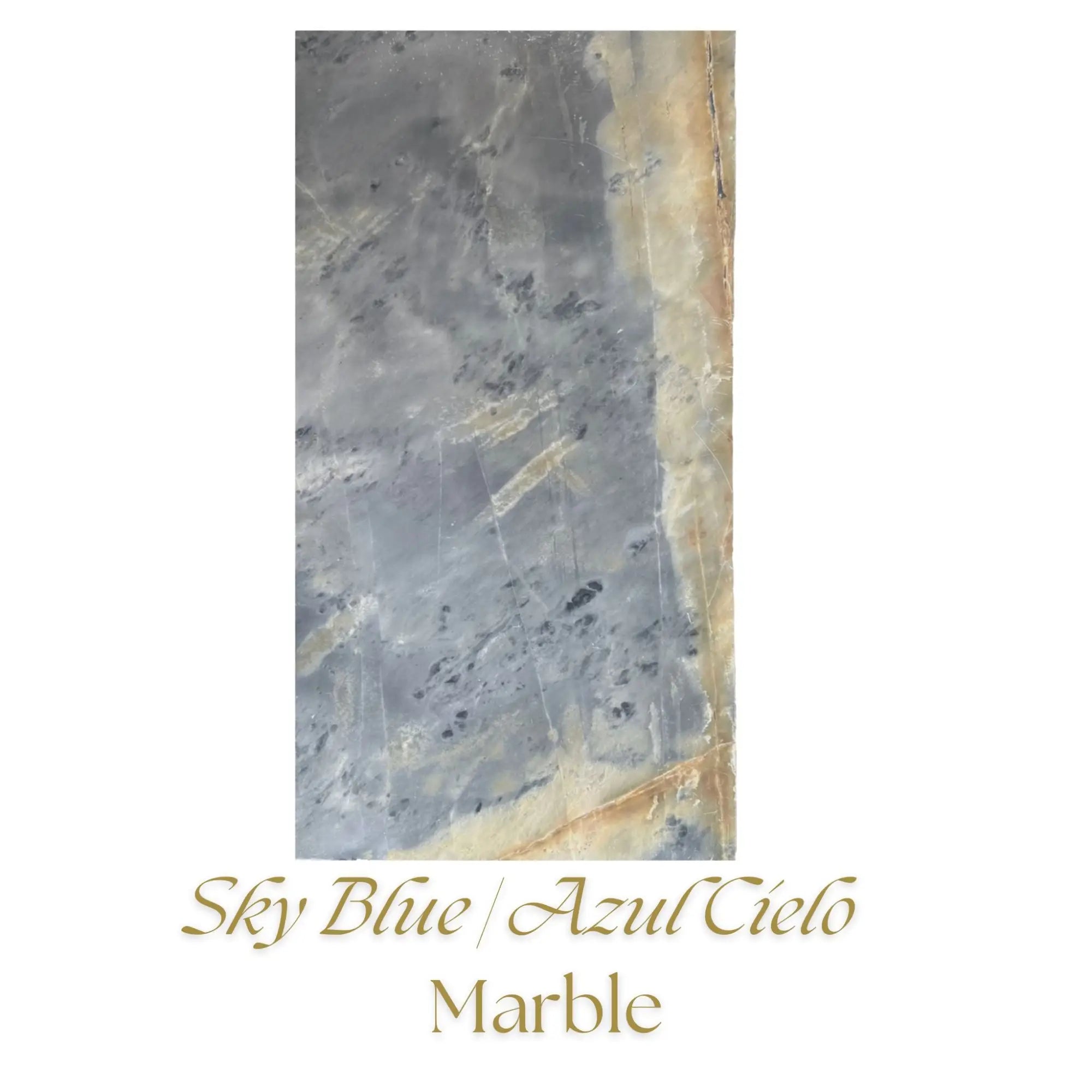 Sky Blue | Azul Cielo Marble
Sky Blue | Azul Cielo Marble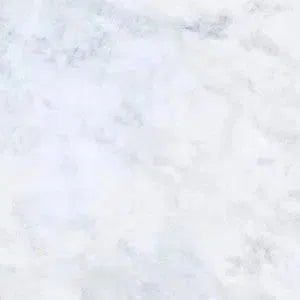 Snow White (Afyon White) Marble
Snow White (Afyon White) Marble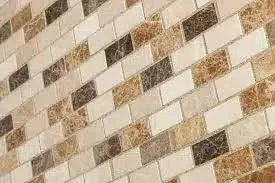 Spanish Mix Marble
Spanish Mix Marble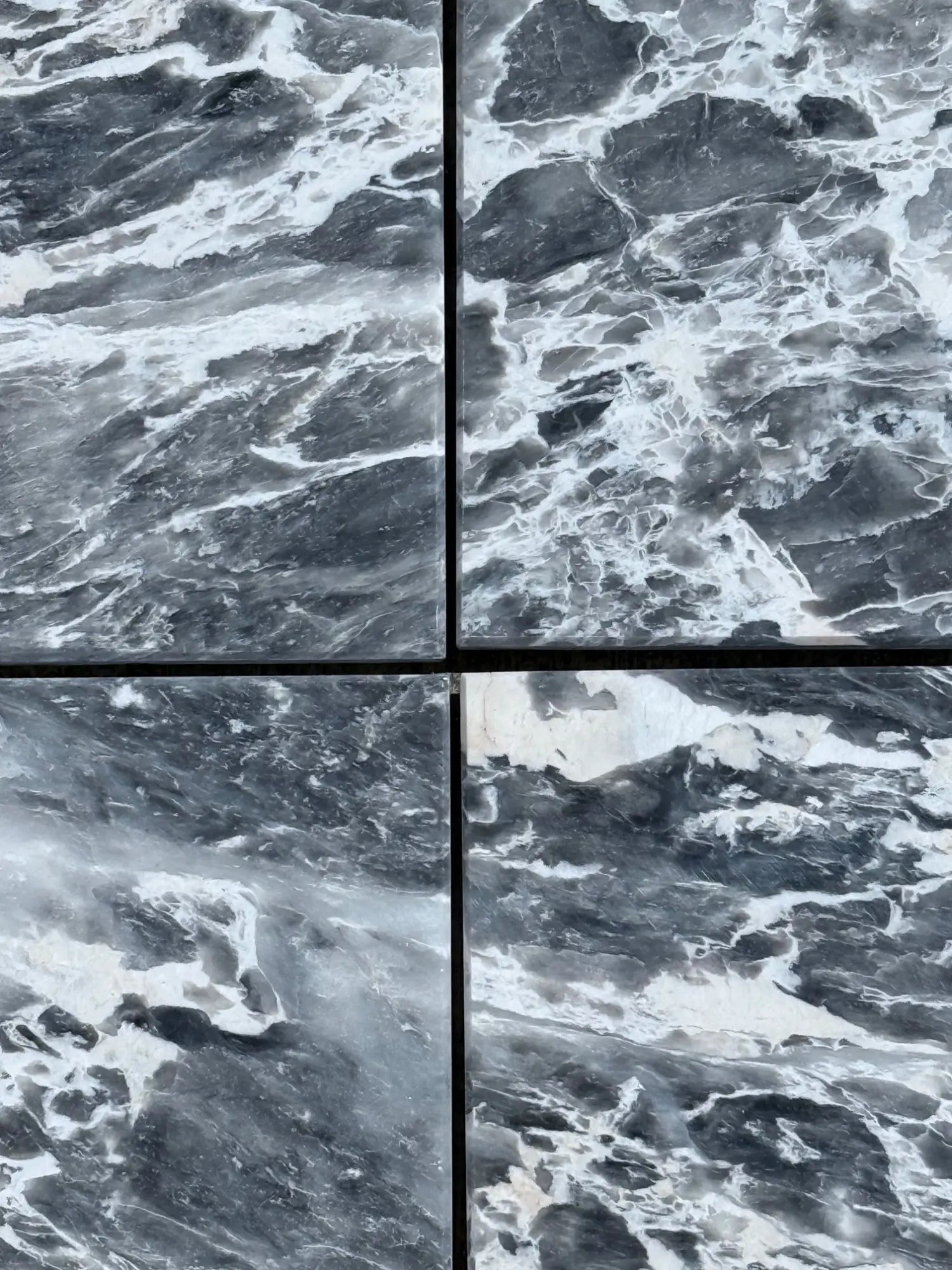 Storm Gray Marble
Storm Gray Marble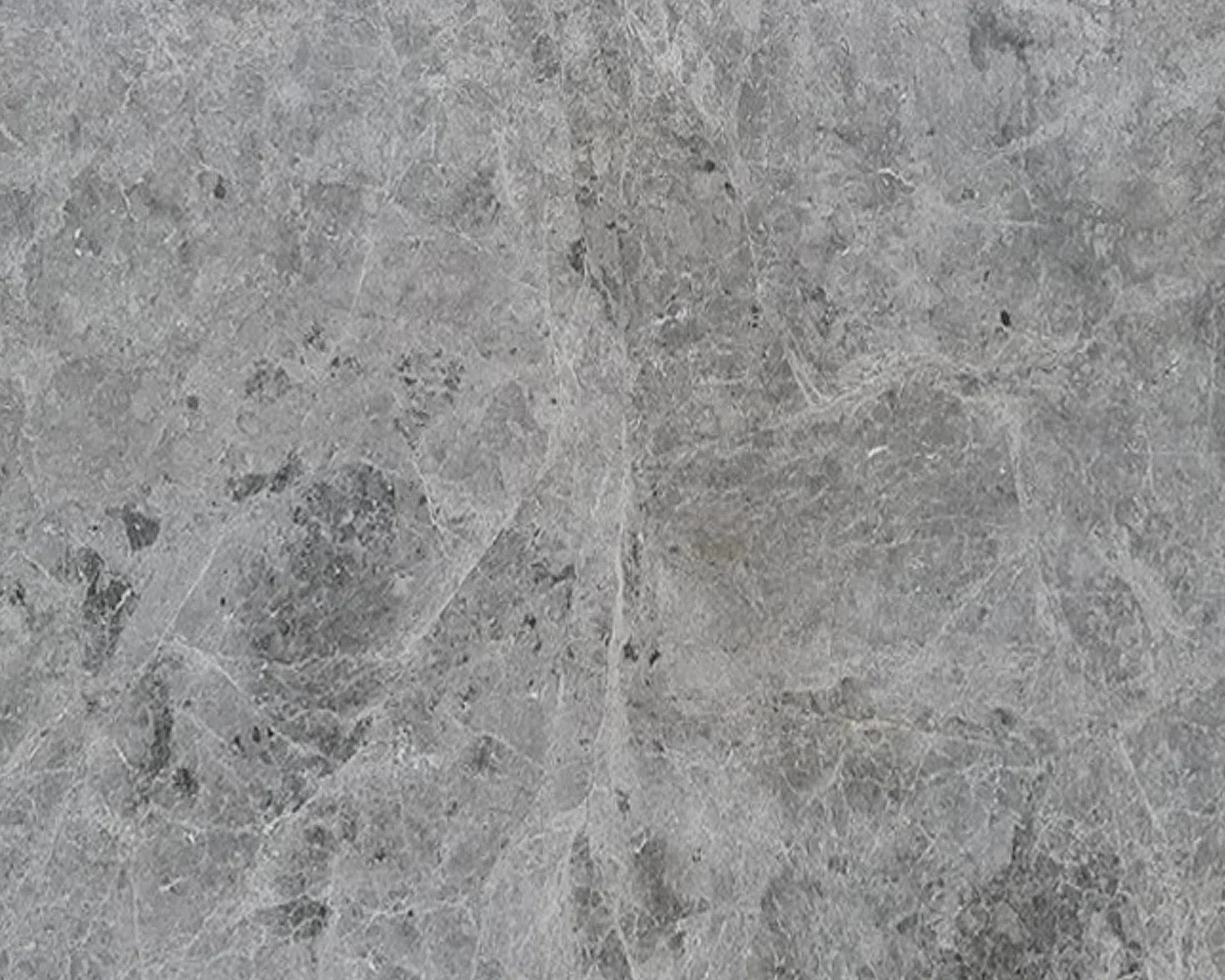 Tundra Gray (Atlantic Gray) Marble
Tundra Gray (Atlantic Gray) Marble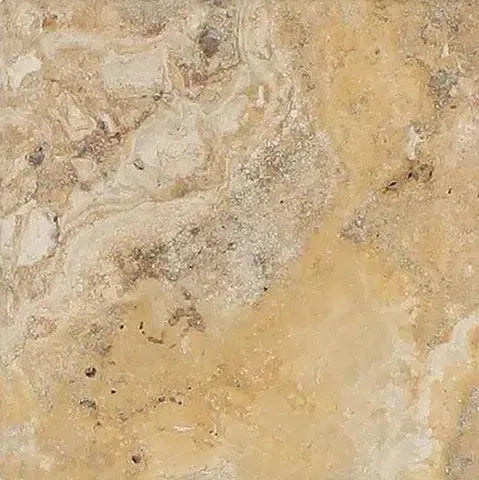 Valencia Travertine
Valencia Travertine Valerenga Travertine
Valerenga Travertine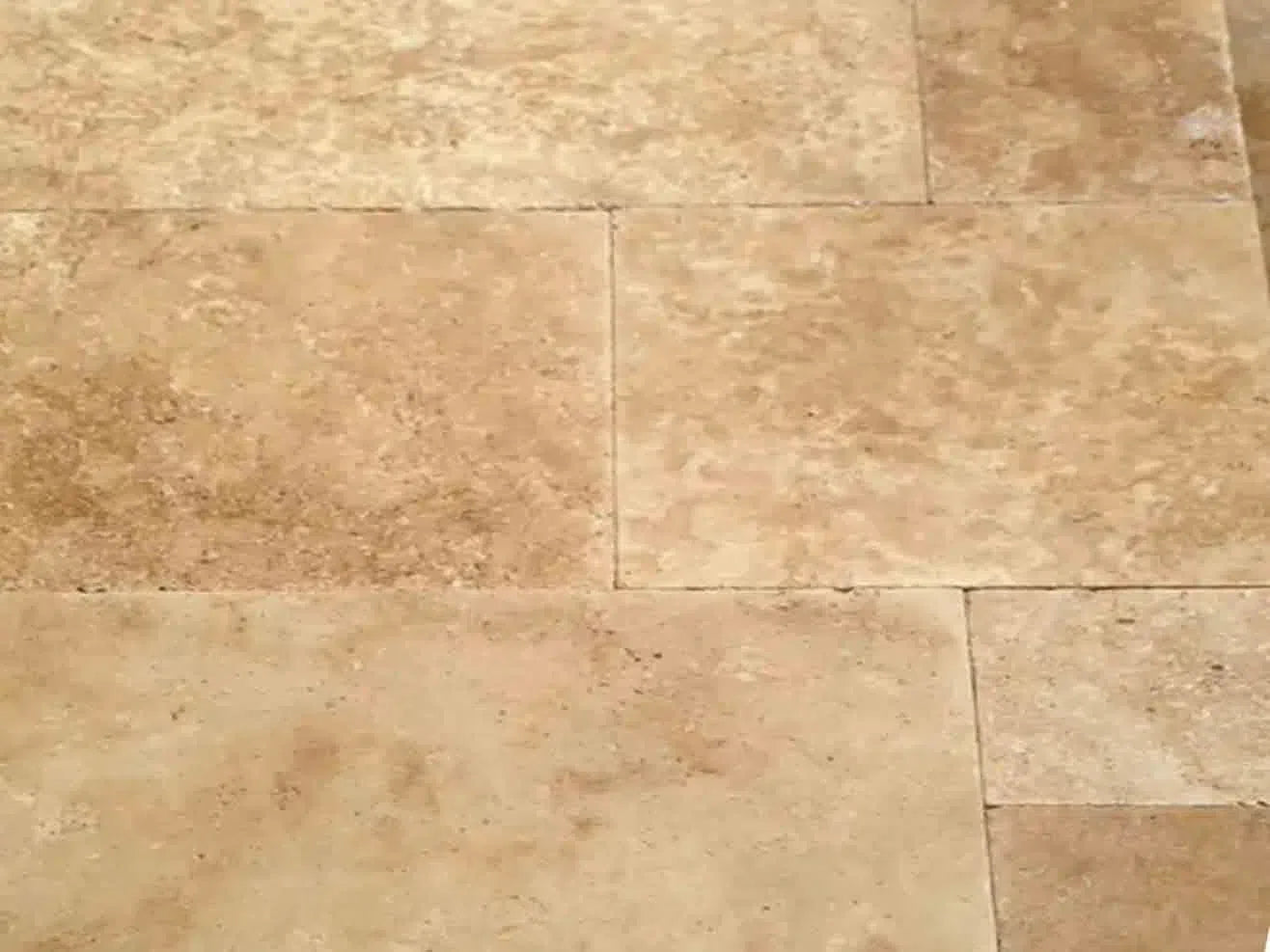 Walnut Travertine
Walnut Travertine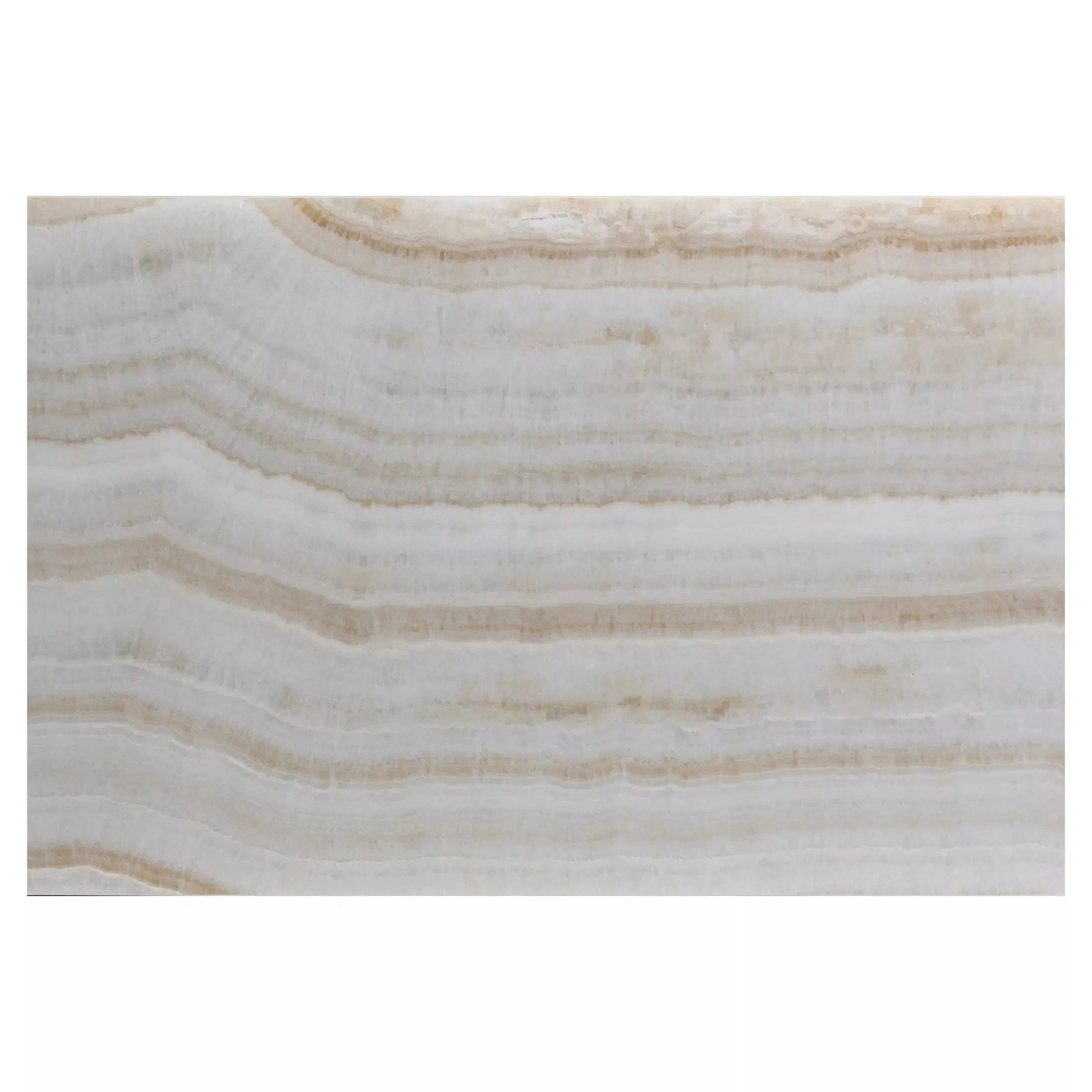 White Onyx Marble
White Onyx Marble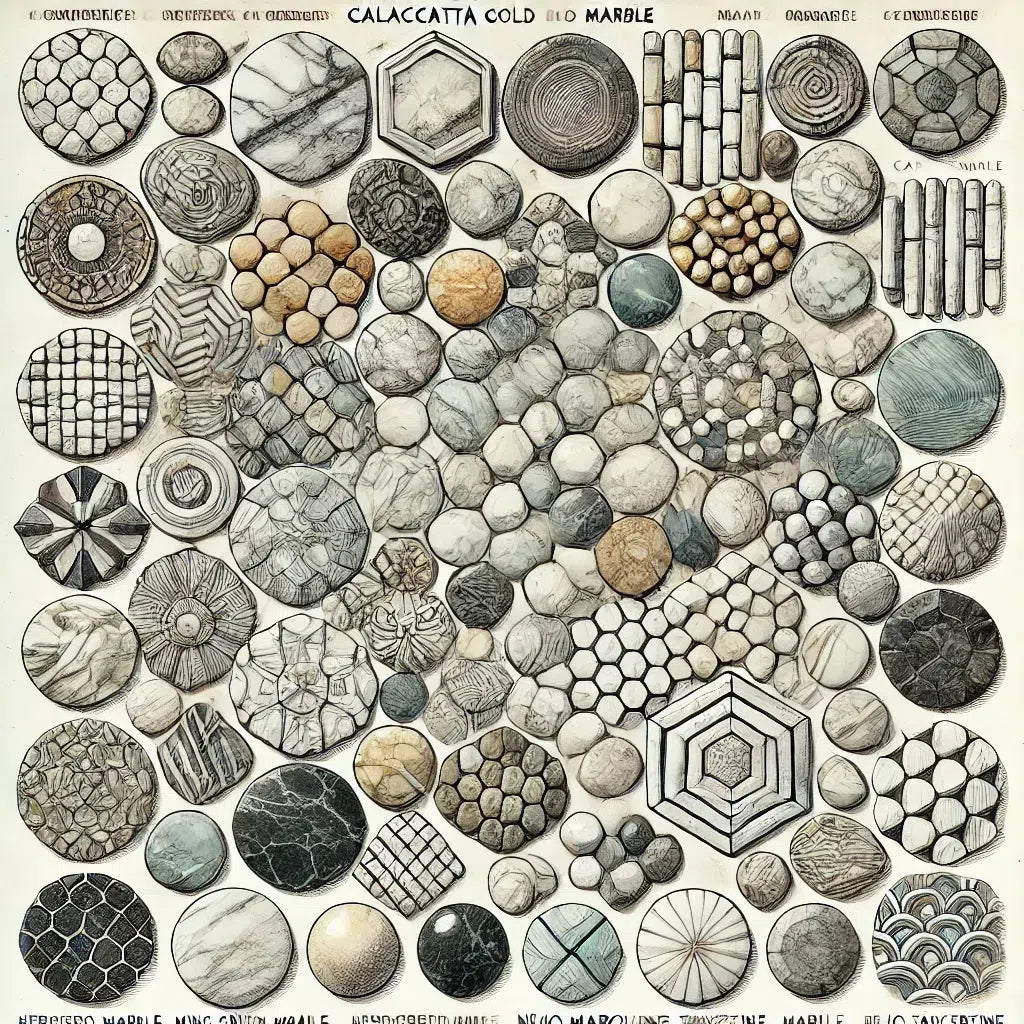 Shop By Type
Shop By Type
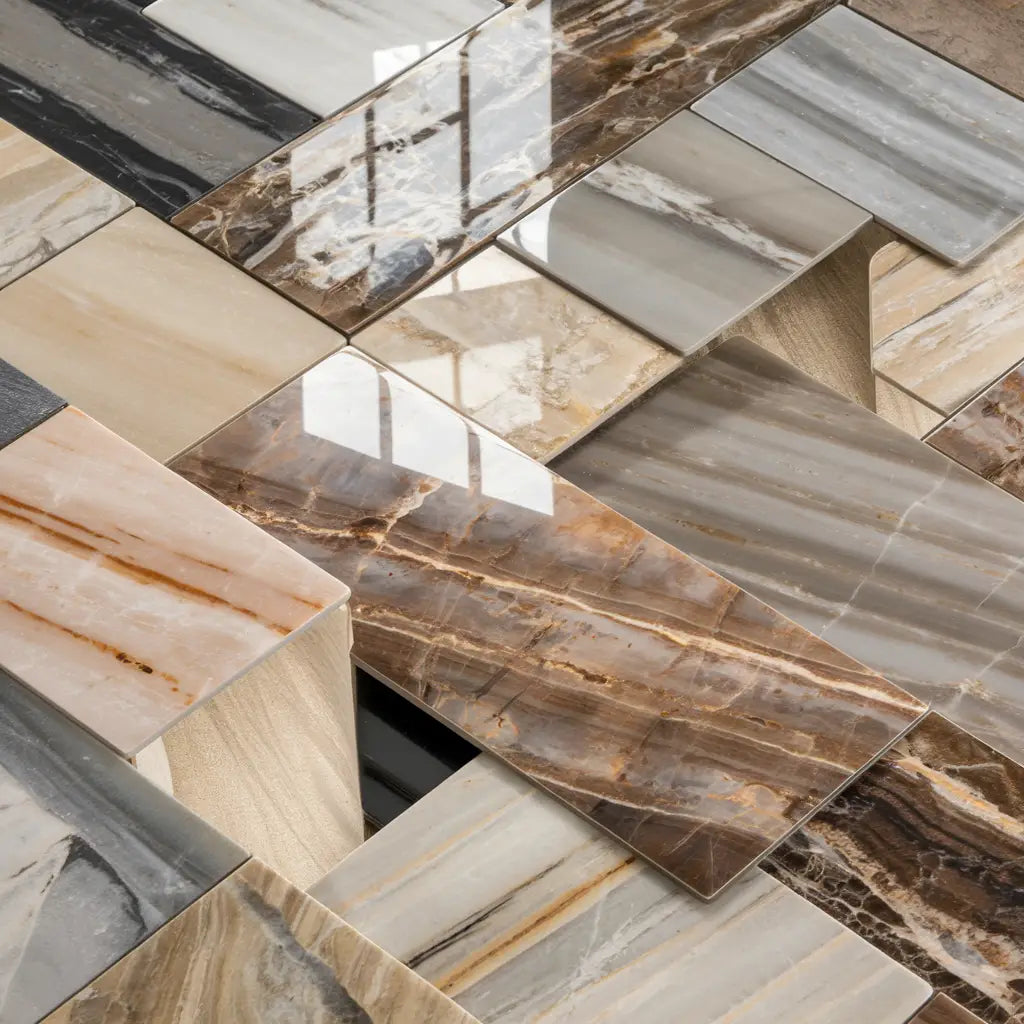 Marble Tiles
Marble Tiles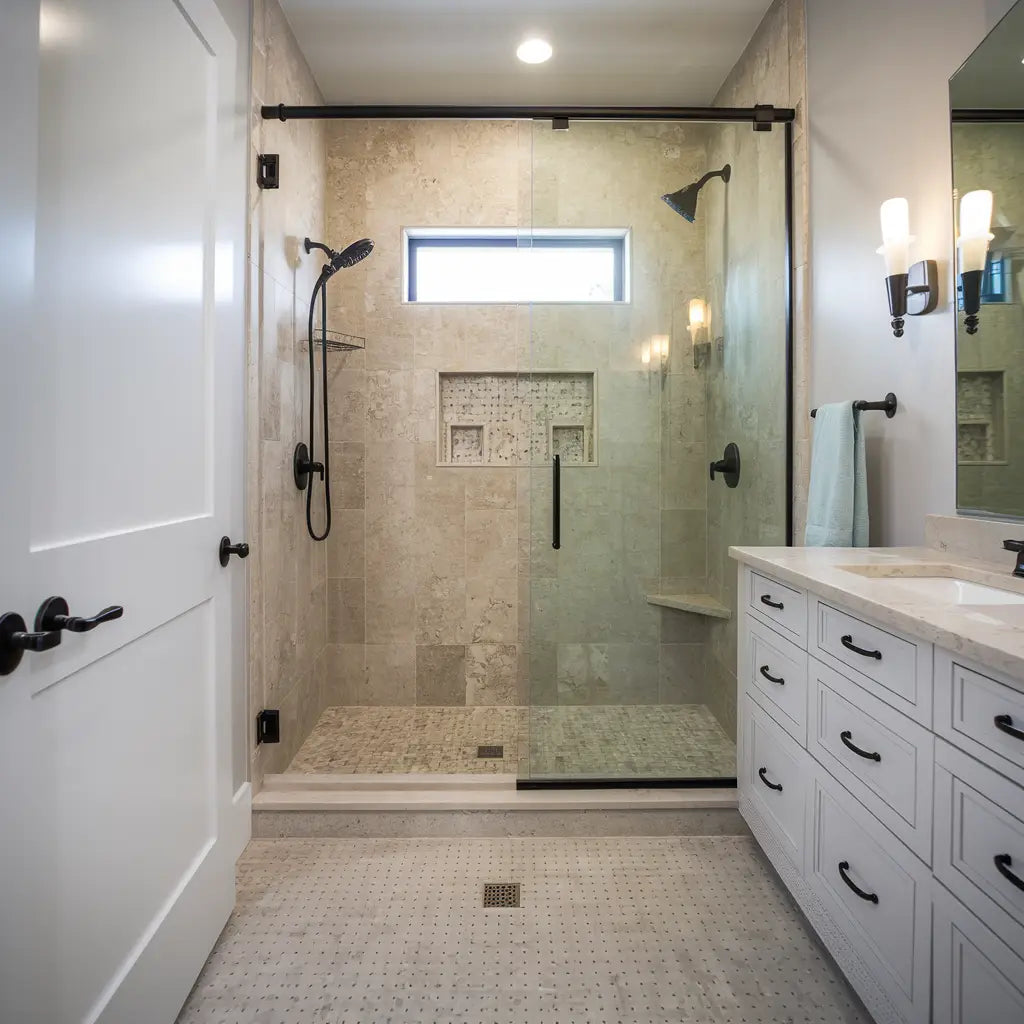 Marble Mosaic
Marble Mosaic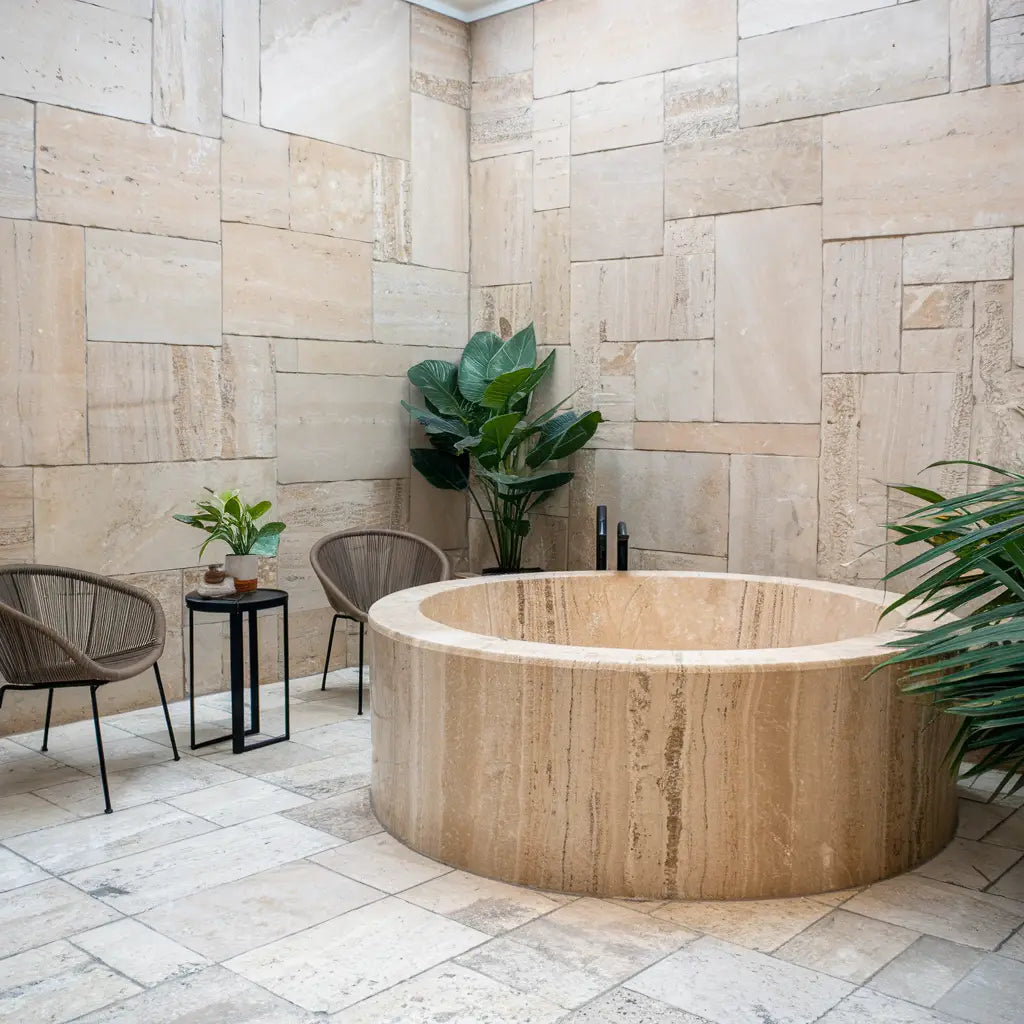 Travertine Tiles
Travertine Tiles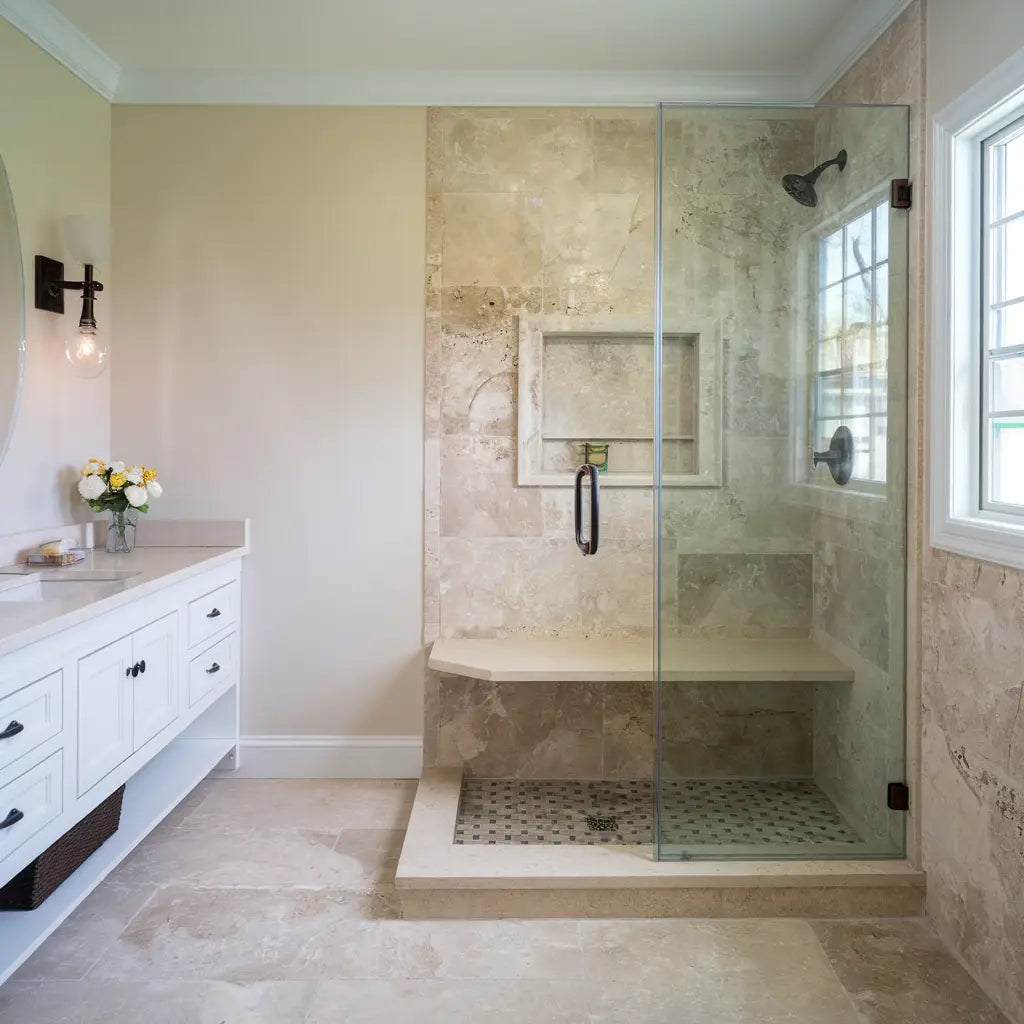 Travertine Mosaic
Travertine Mosaic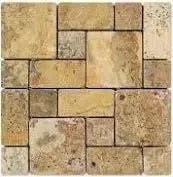 4 pcs Versailles Pattern / French Pattern Set
4 pcs Versailles Pattern / French Pattern Set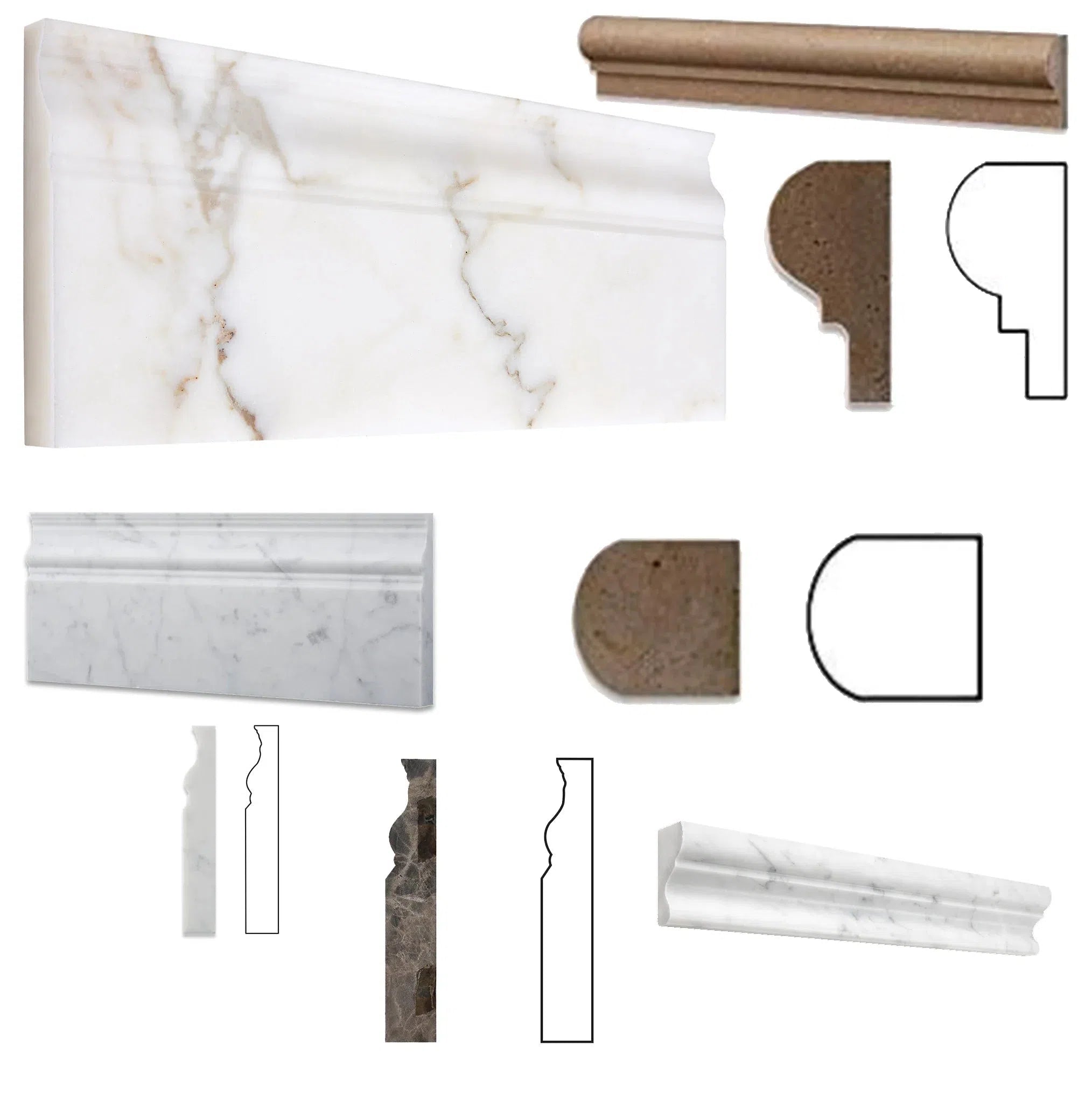 Molding/Trim
Molding/Trim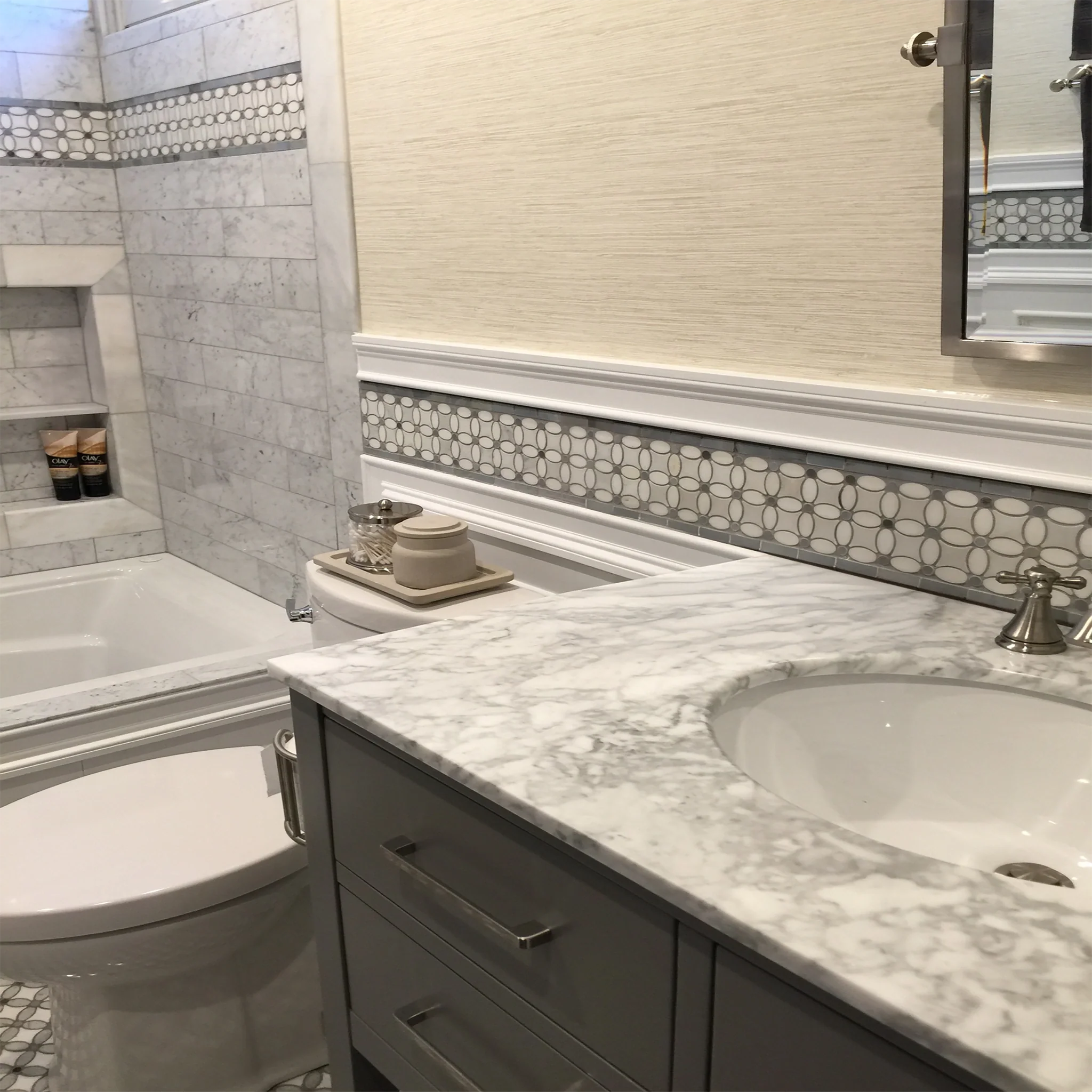 Border/Listello
Border/Listello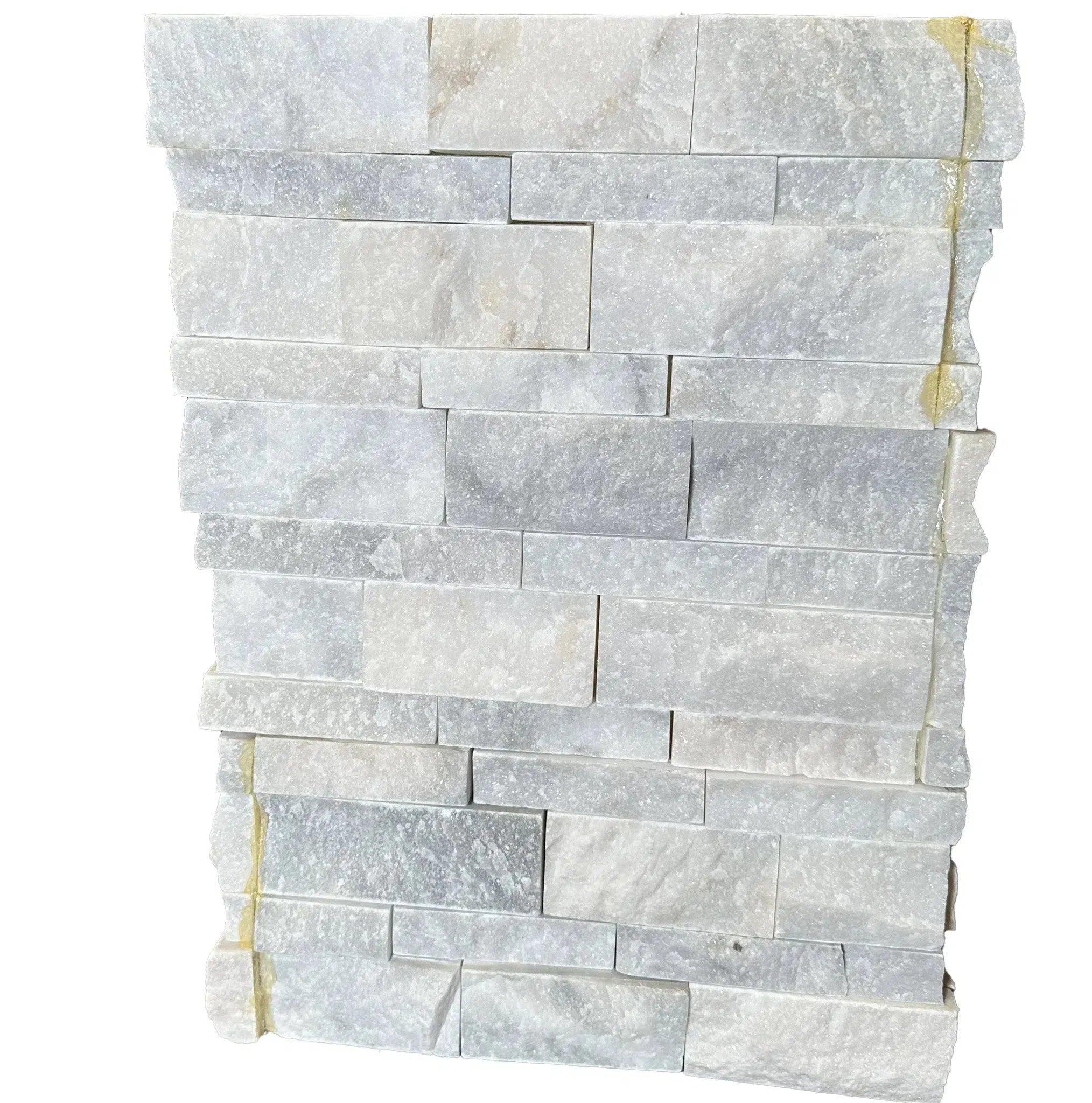 Ledger-Panel
Ledger-Panel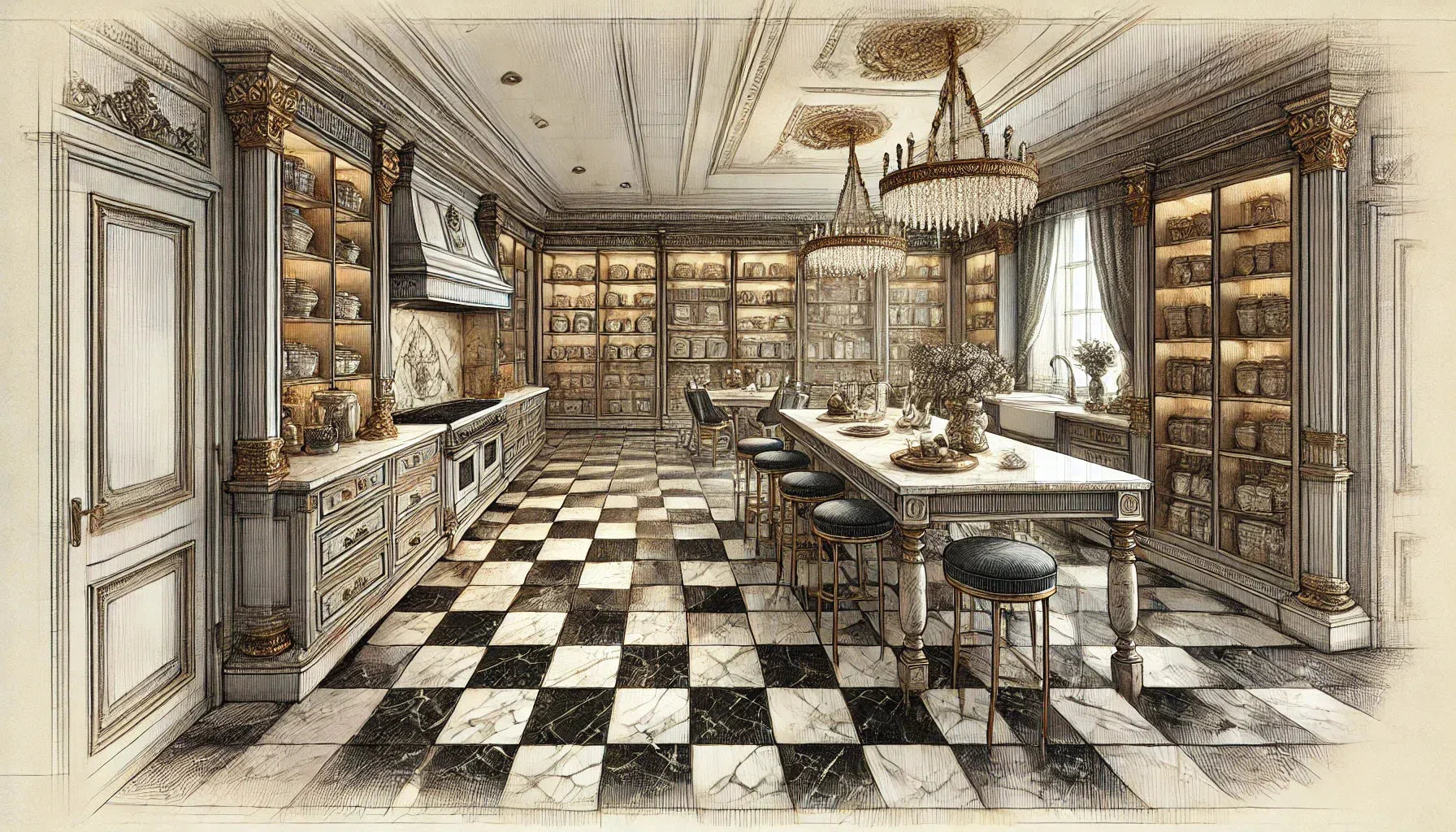 Checkerboard
Checkerboard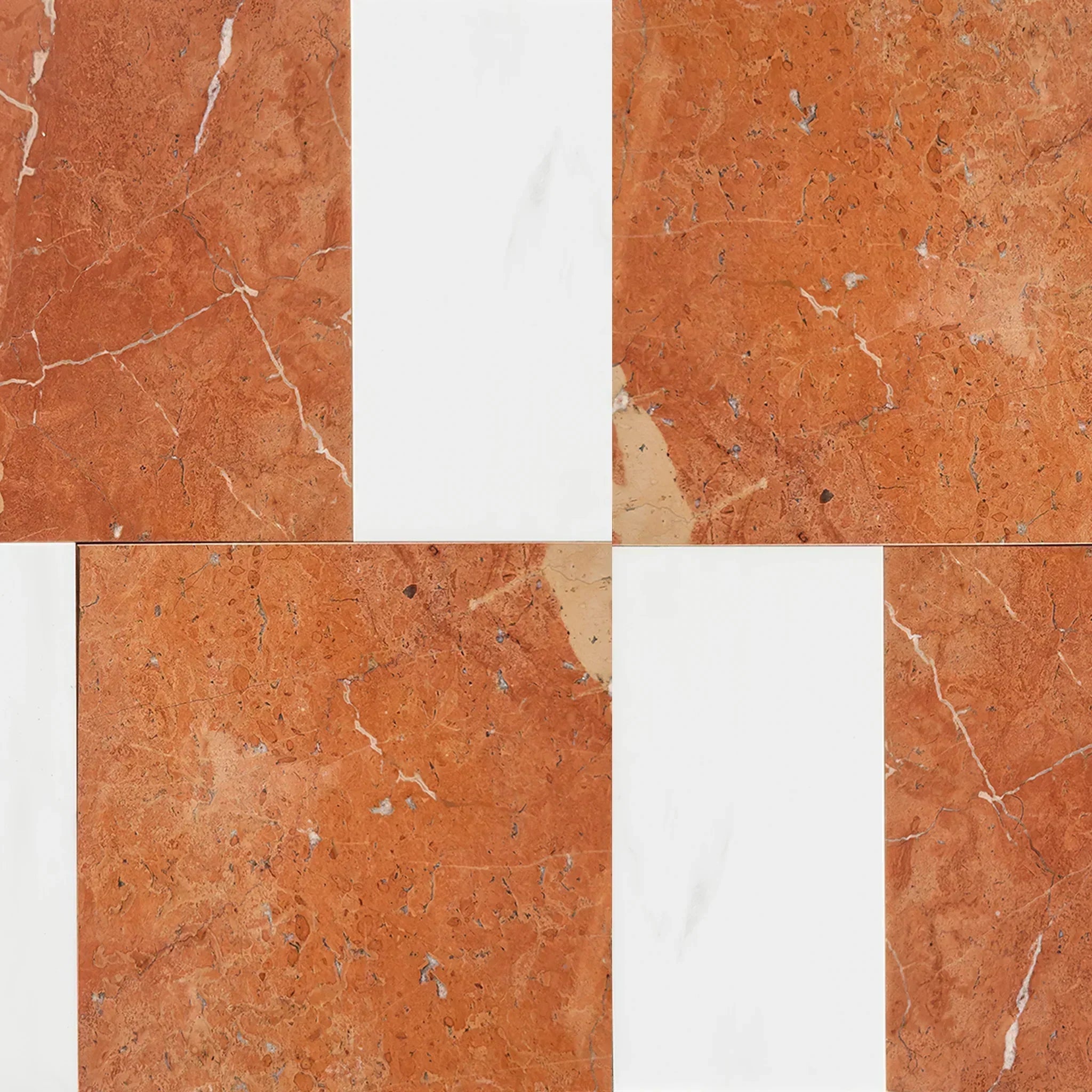 Patterned Tile Collection
Patterned Tile Collection 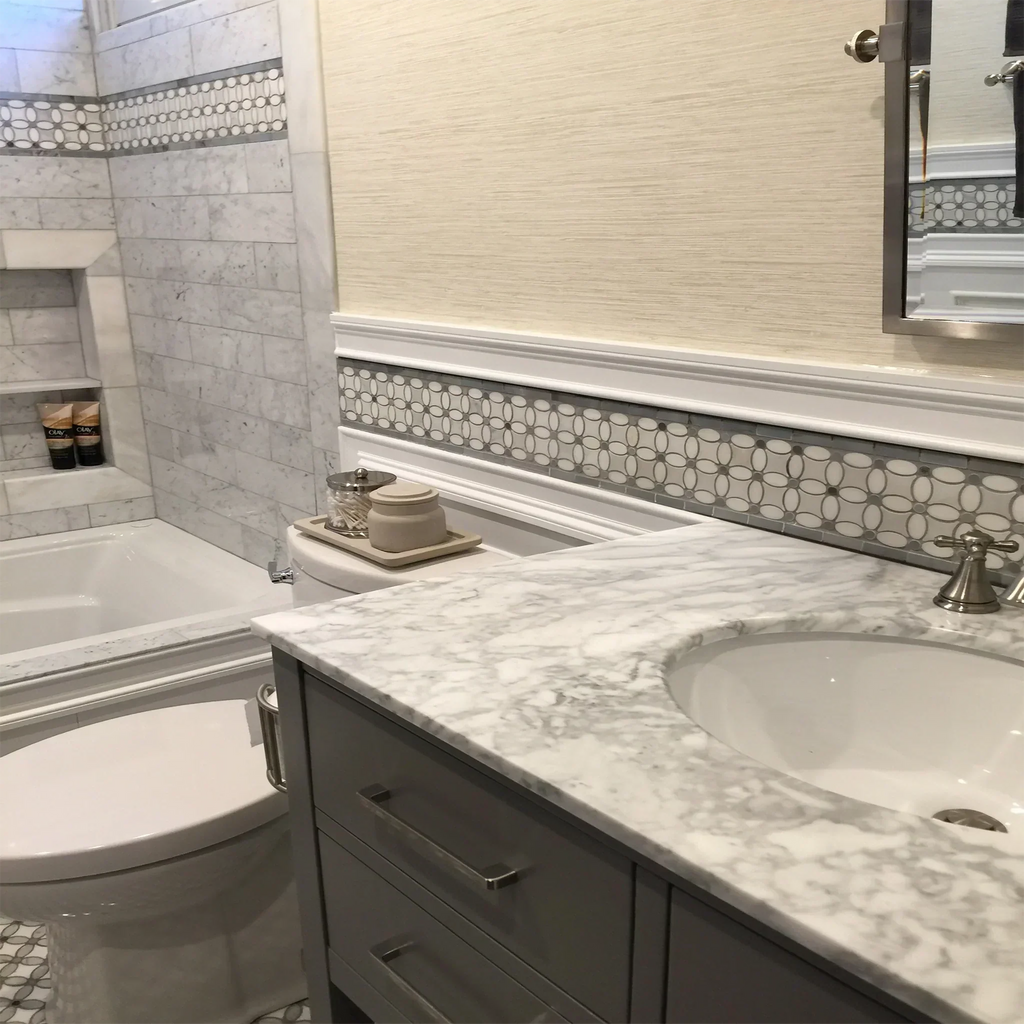 Shop By Finish
Shop By Finish
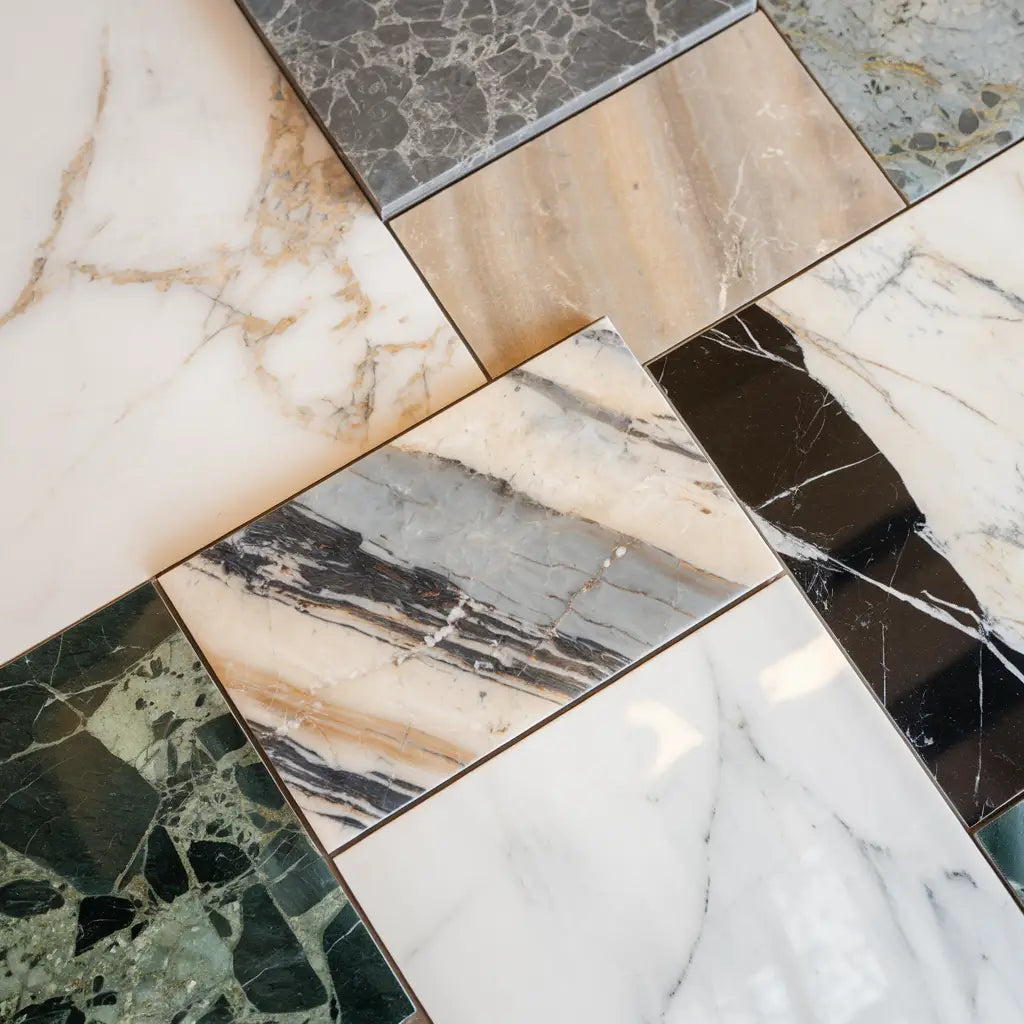 Polished
Polished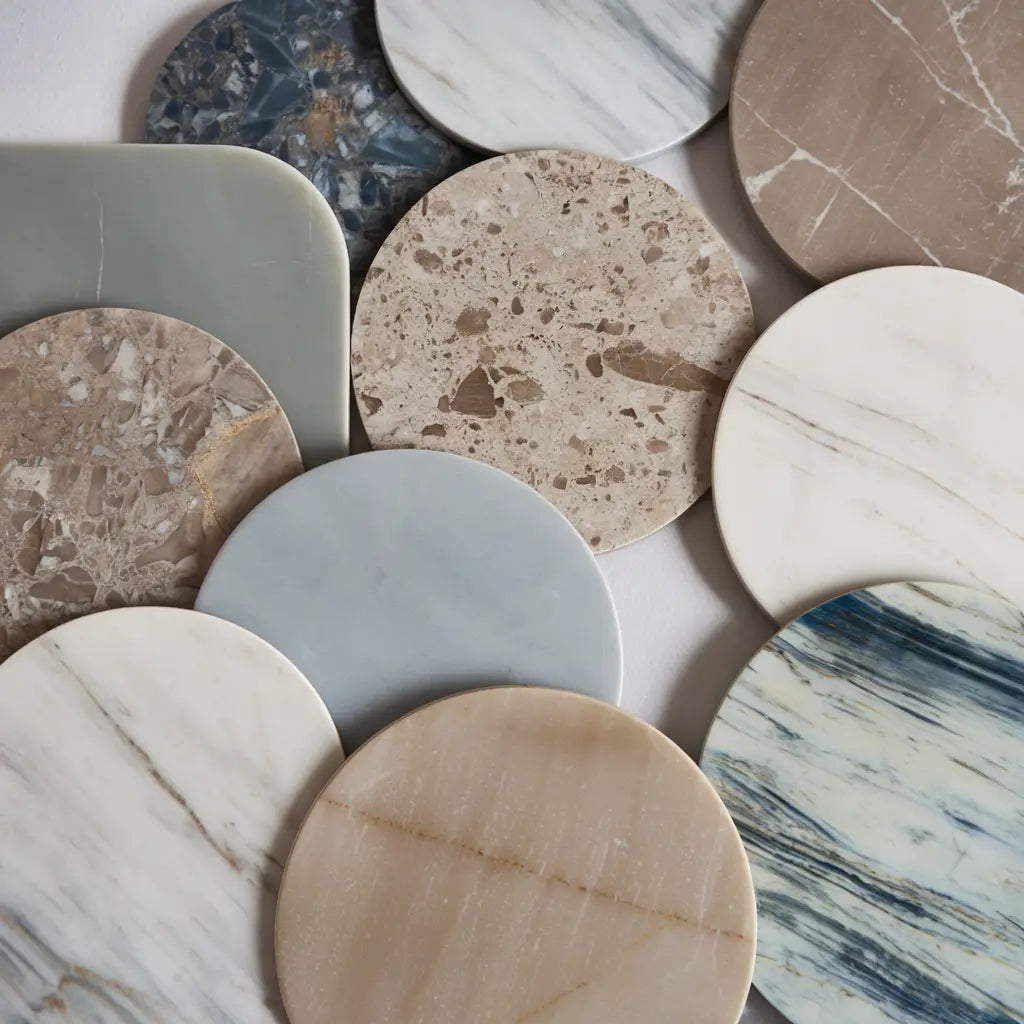 Honed
Honed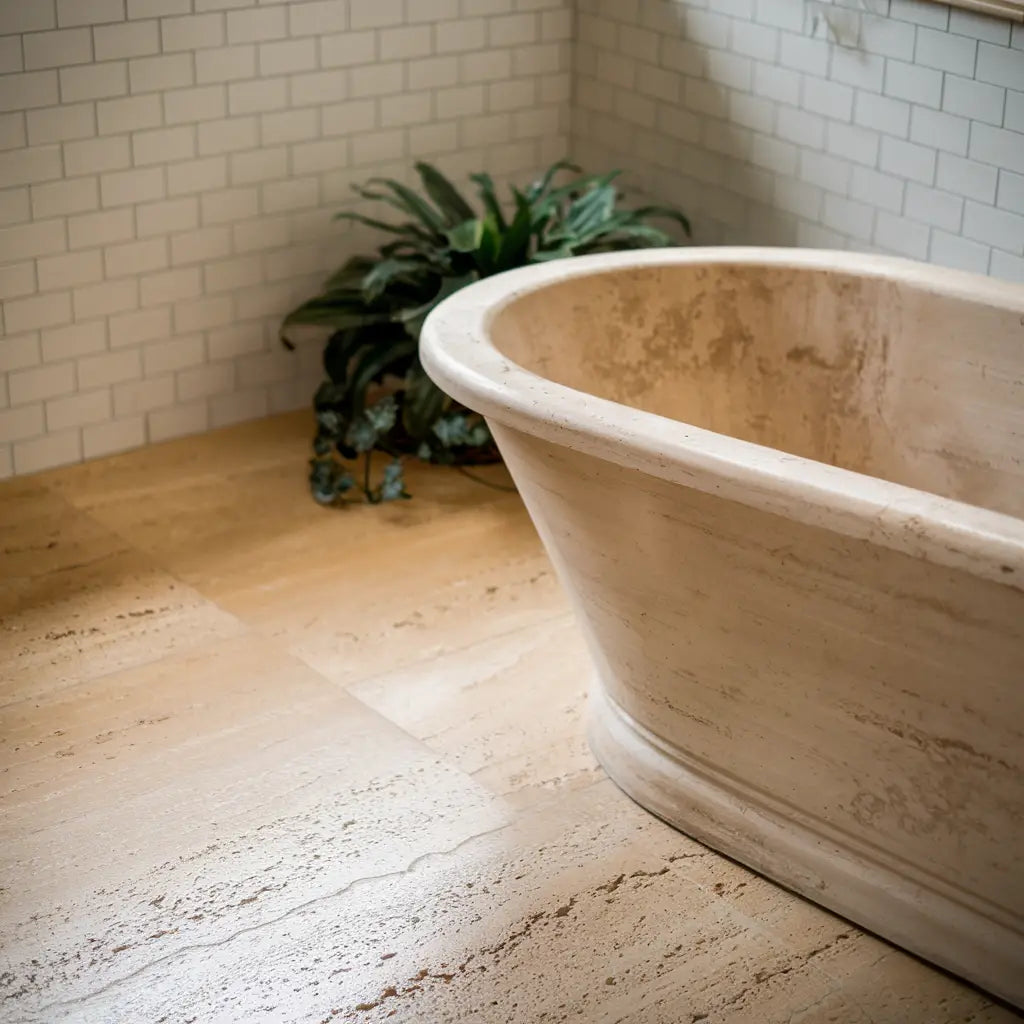 Brushed
Brushed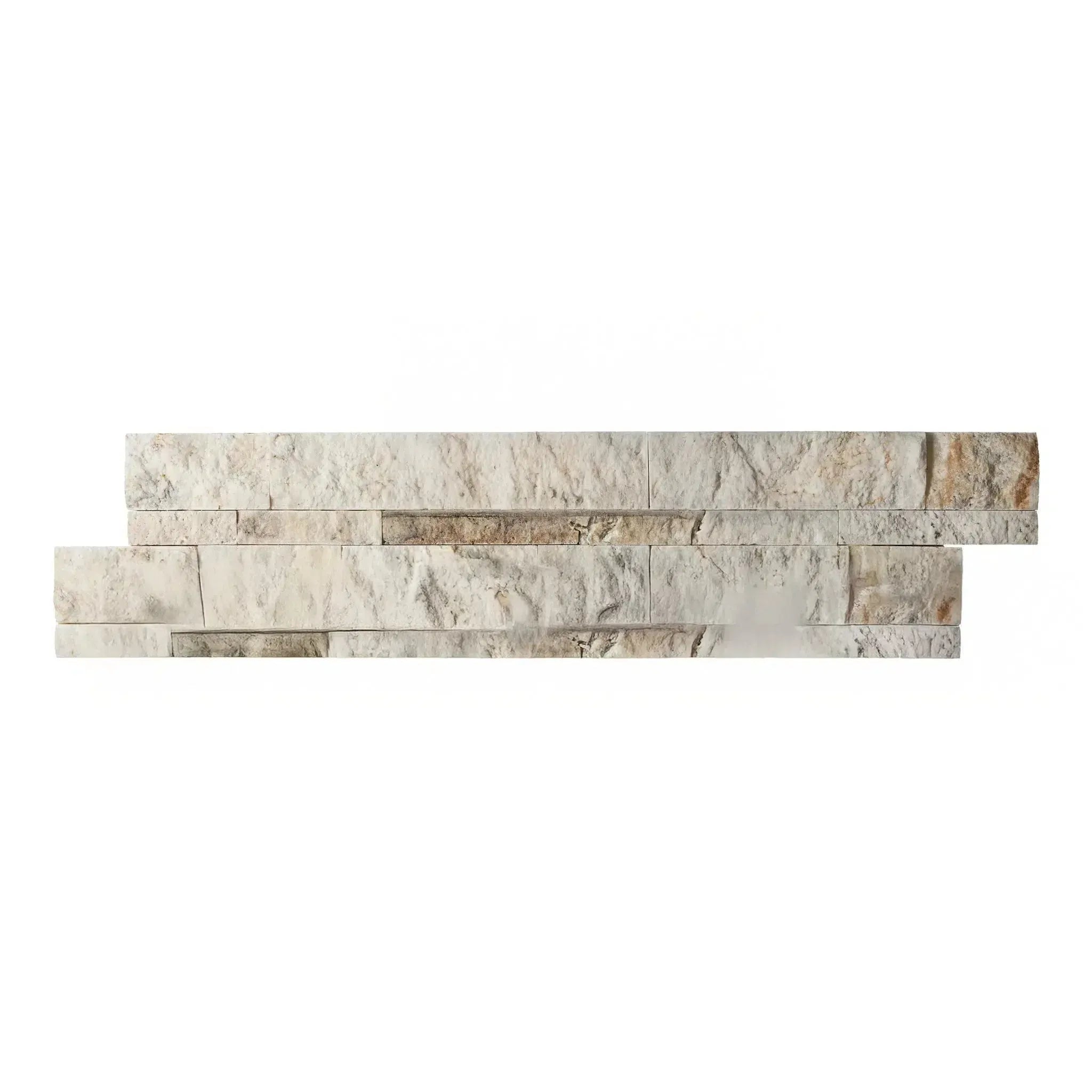 Split Face
Split Face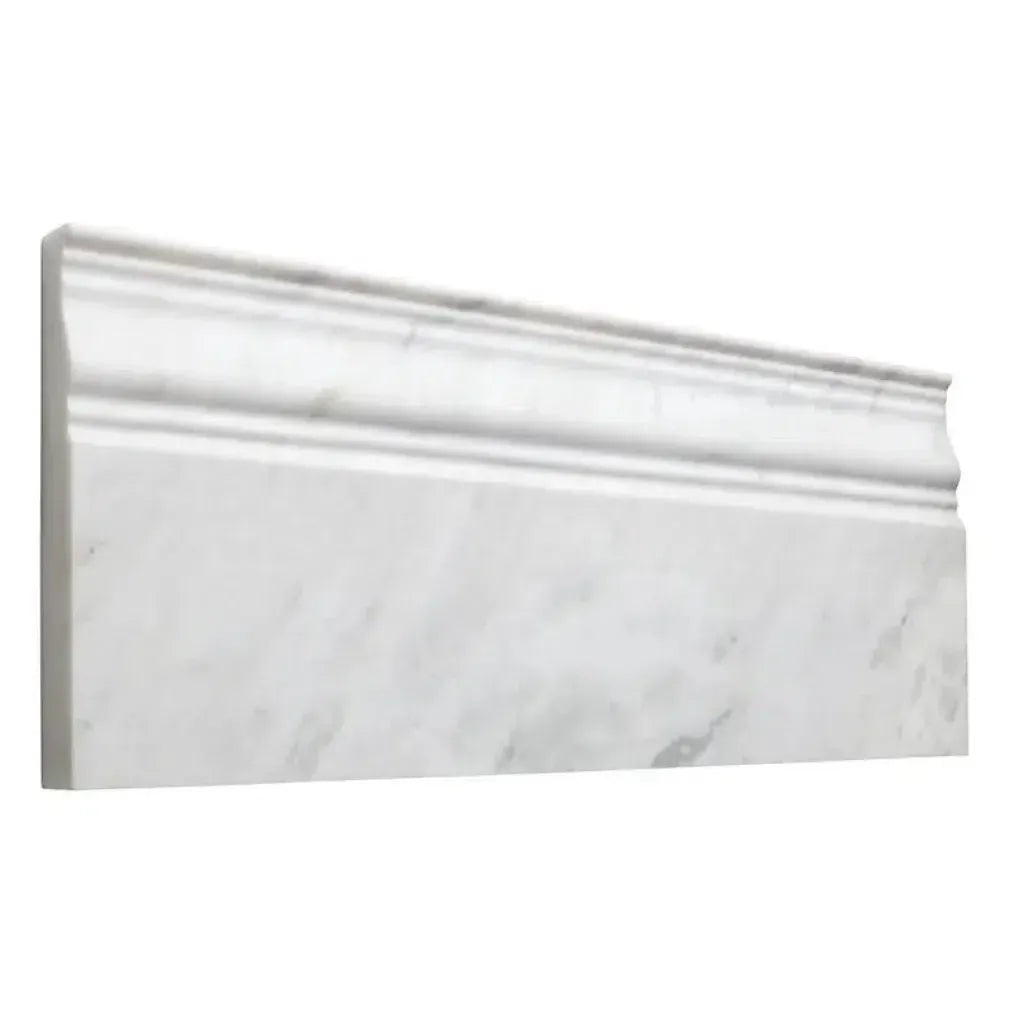 Textured
Textured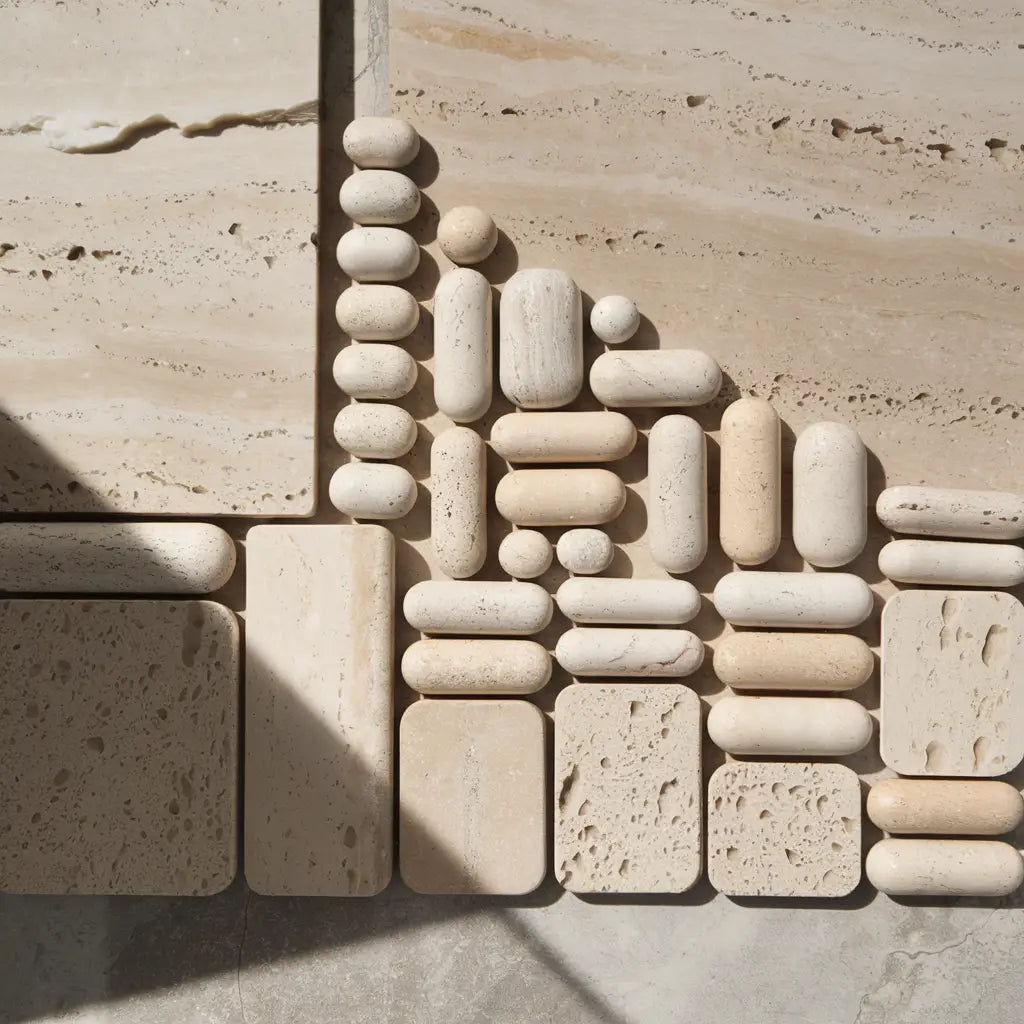 Tumbled
Tumbled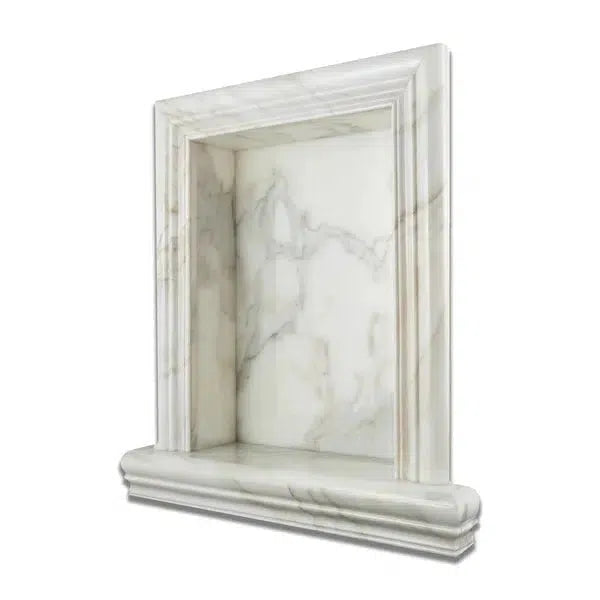 Accessories
Accessories
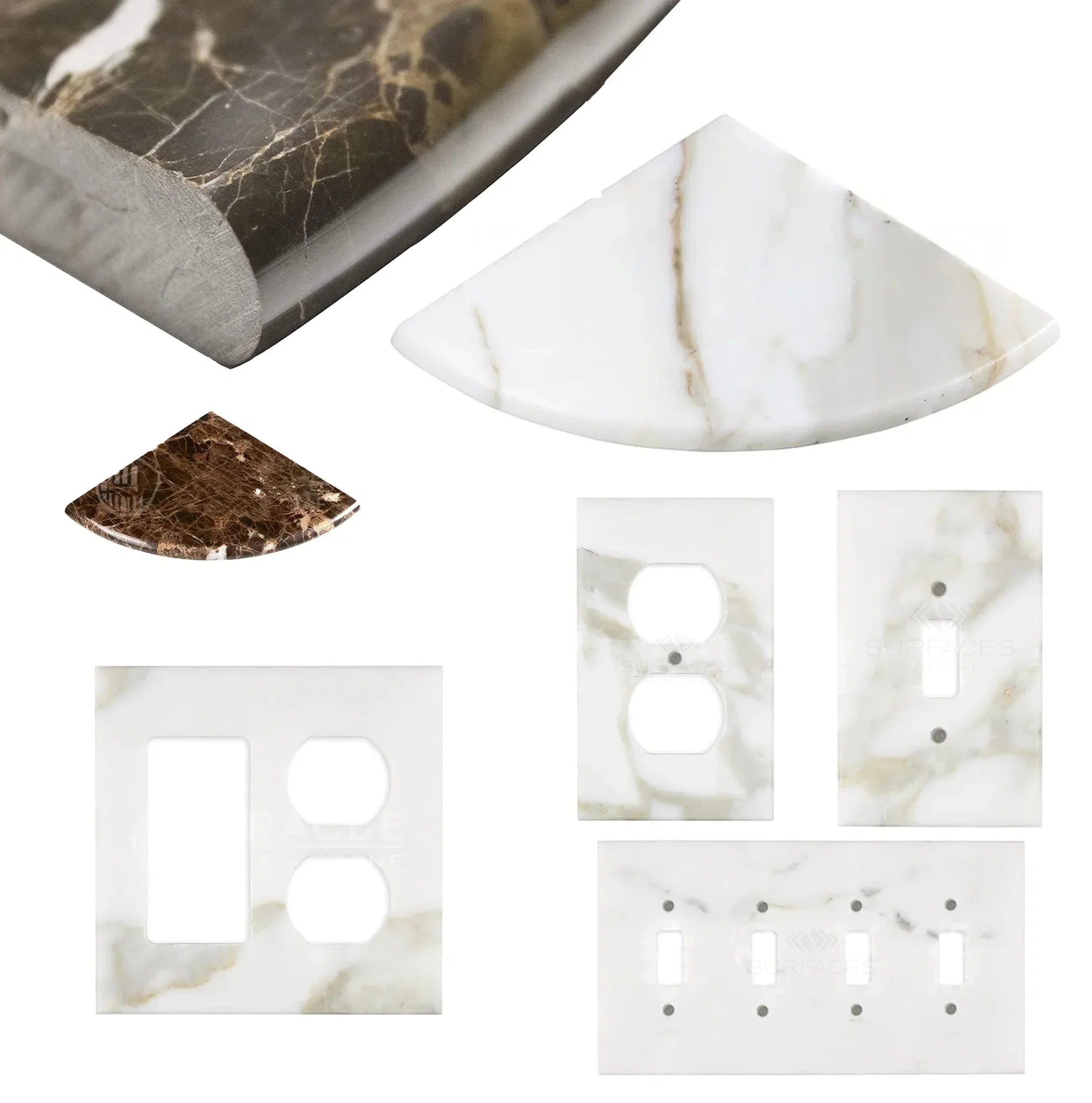 Wall Plate / Switch Plate
Wall Plate / Switch Plate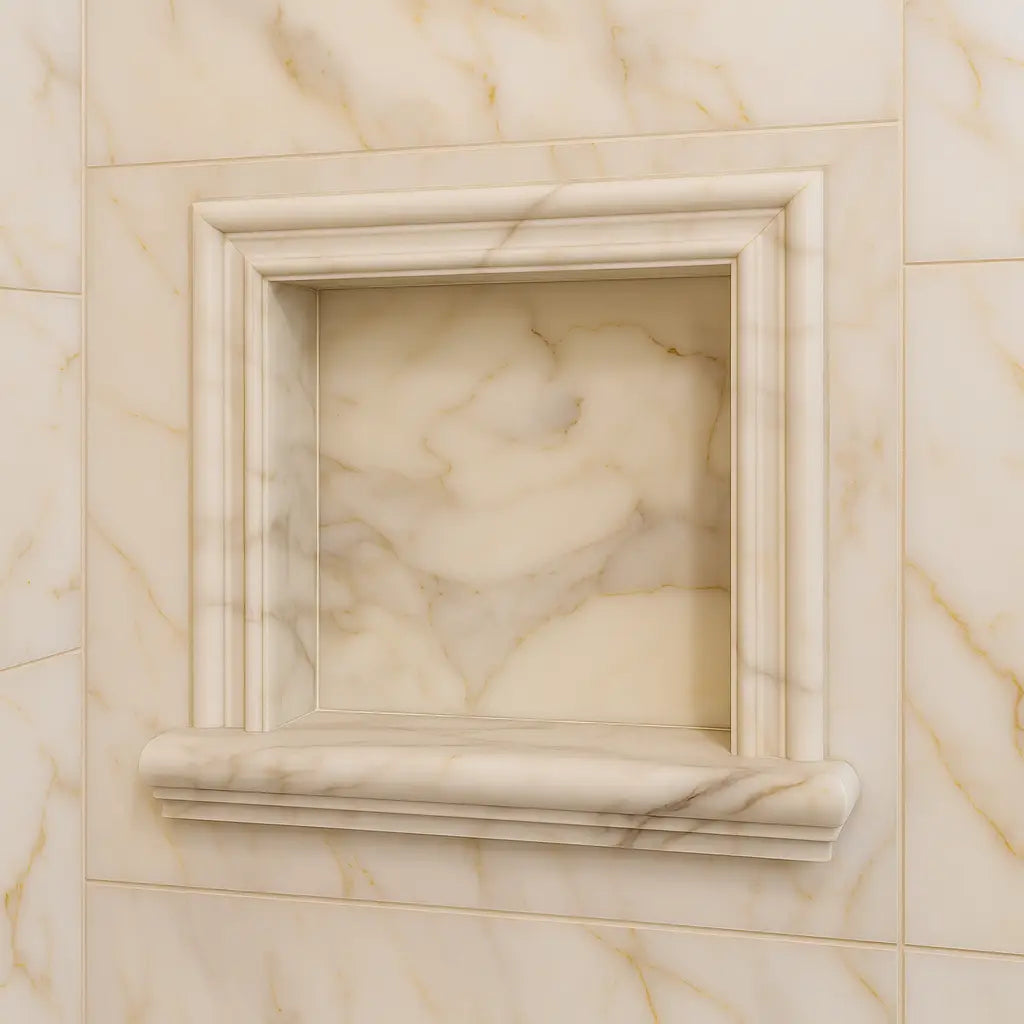 Shampoo Niche
Shampoo Niche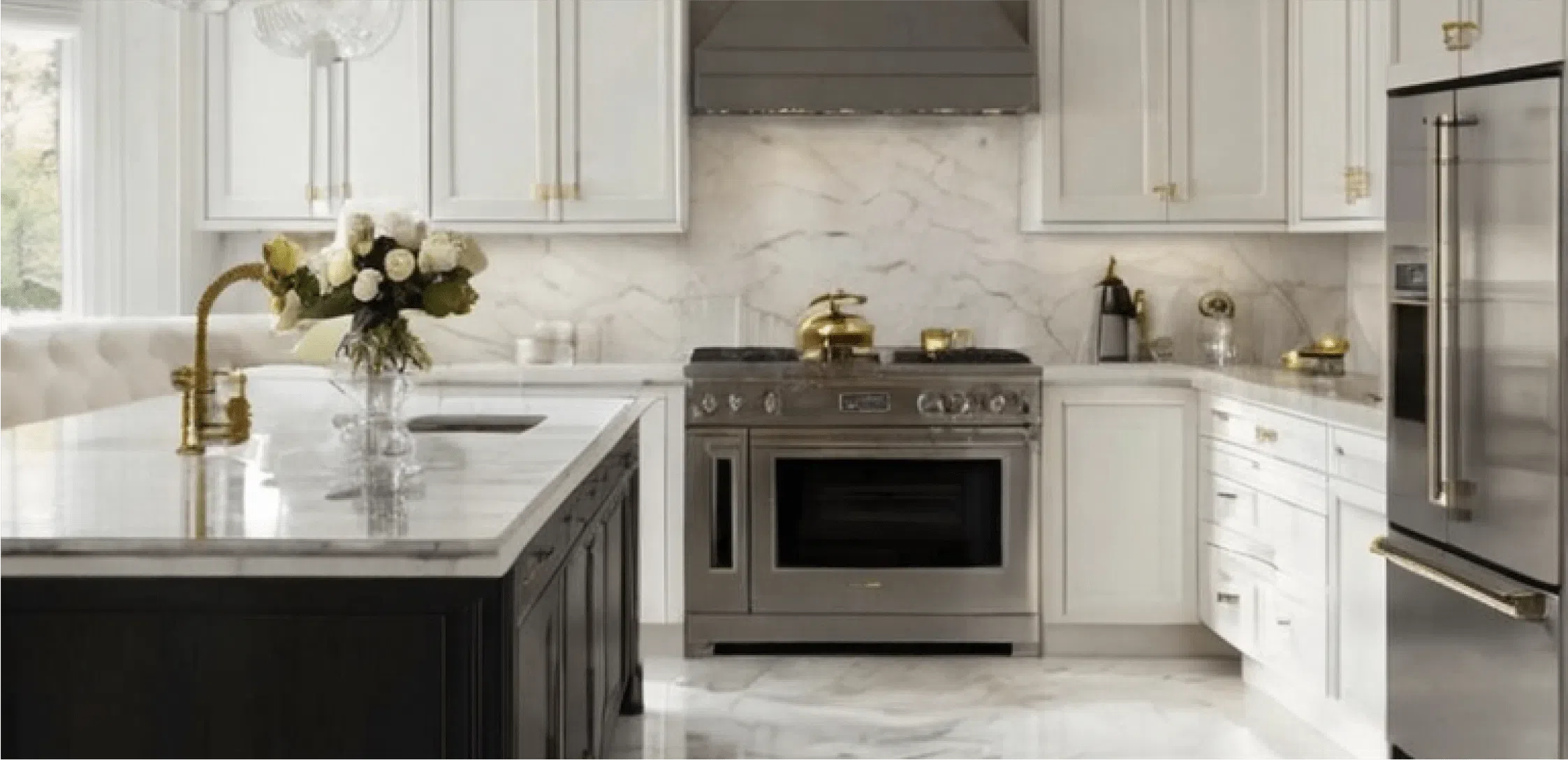 Corner Shelf
Corner Shelf Clearance
Clearance





Leave a comment